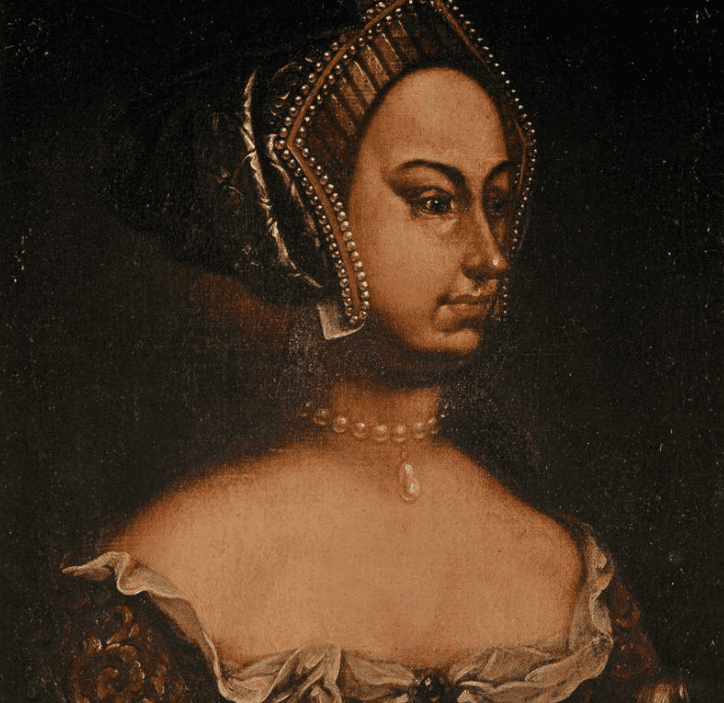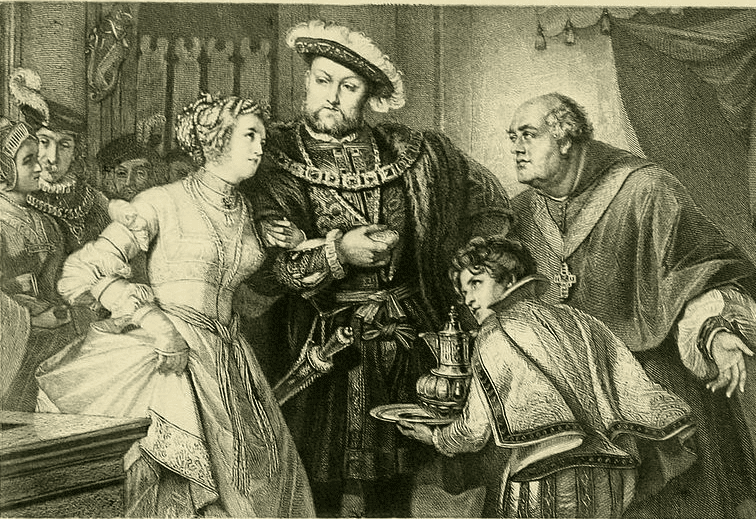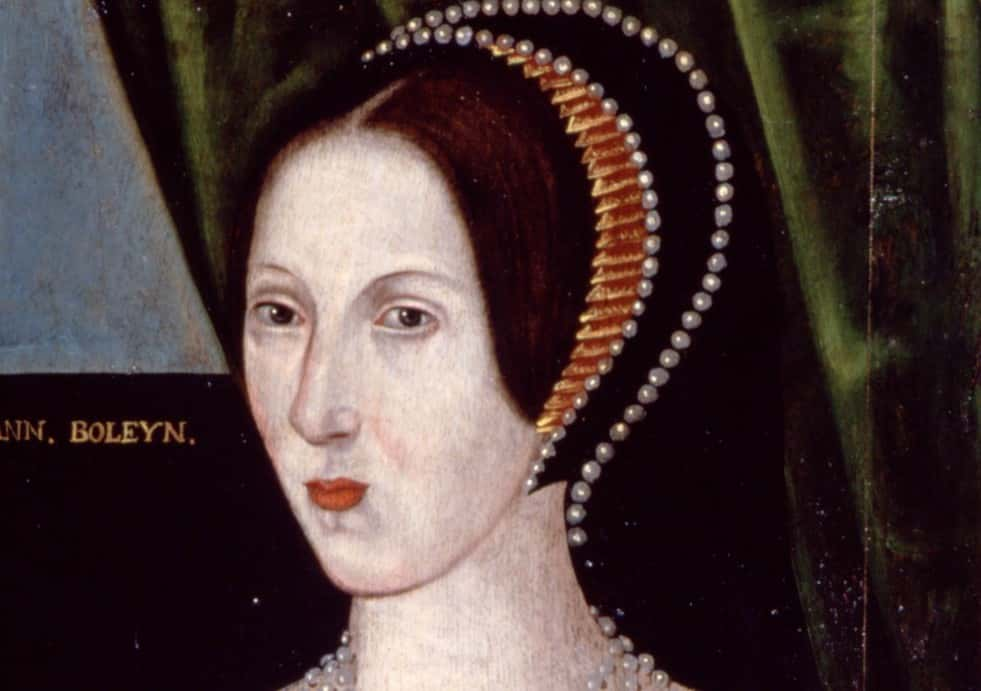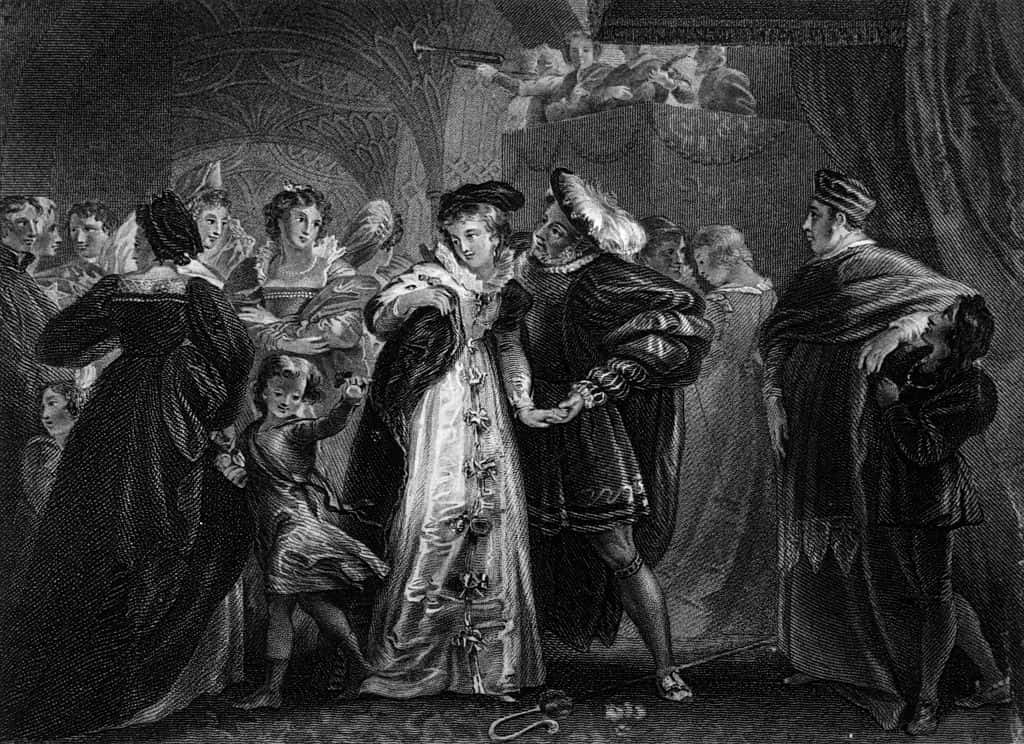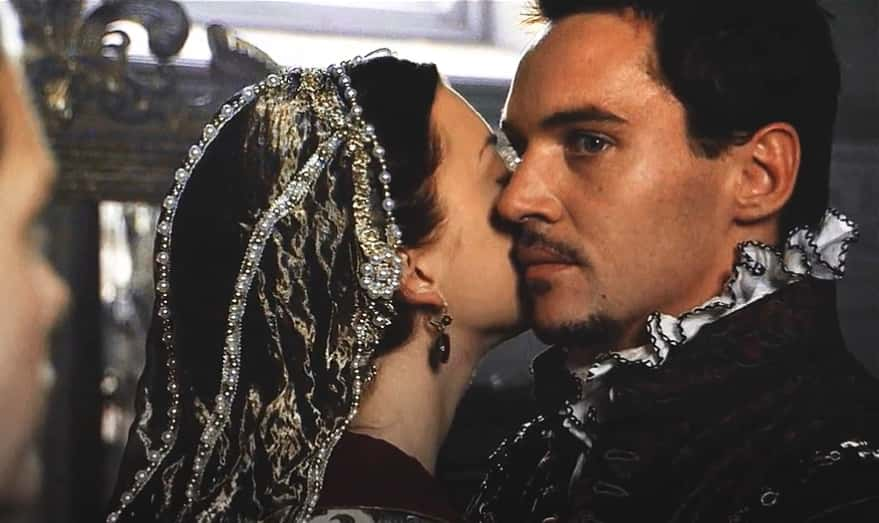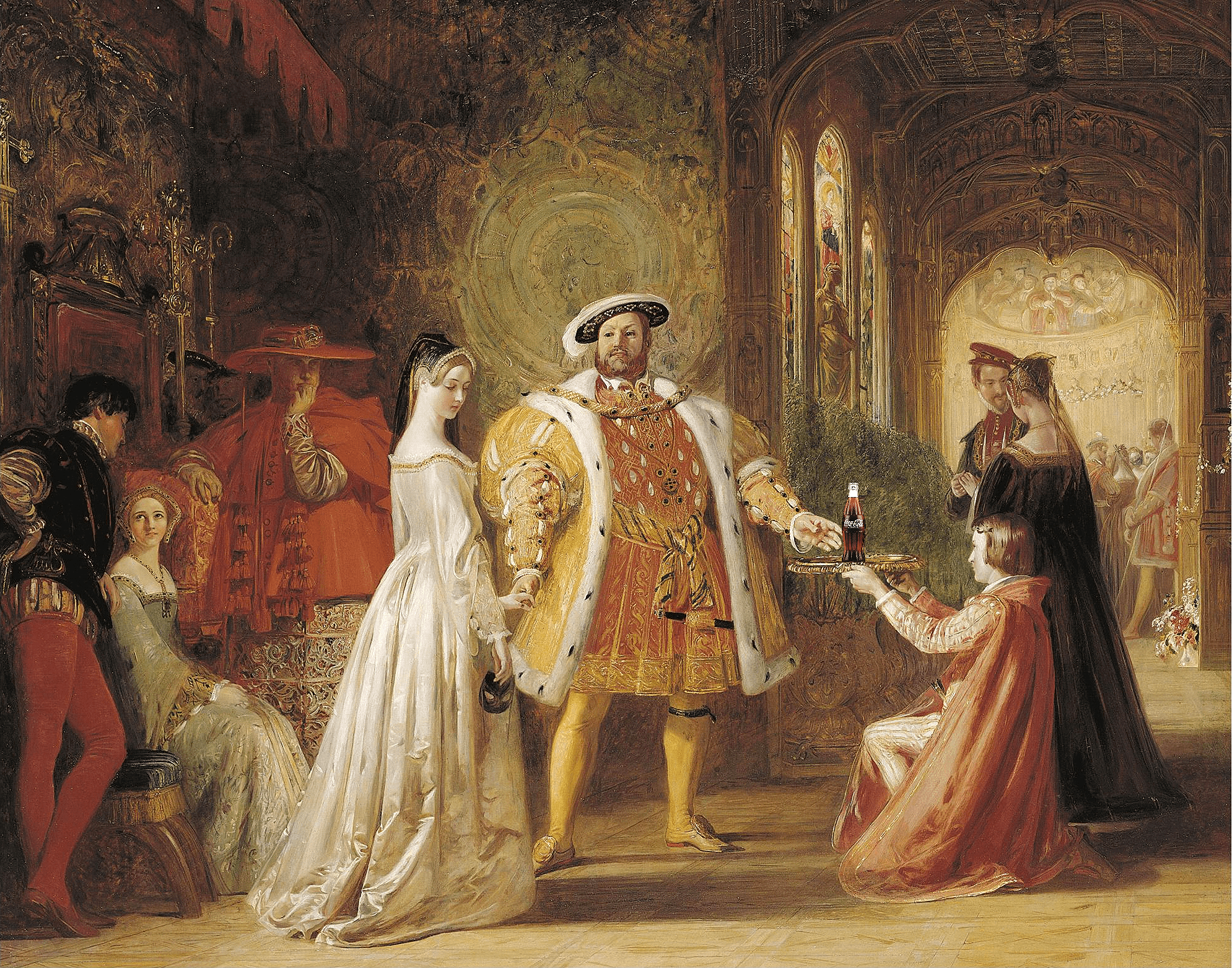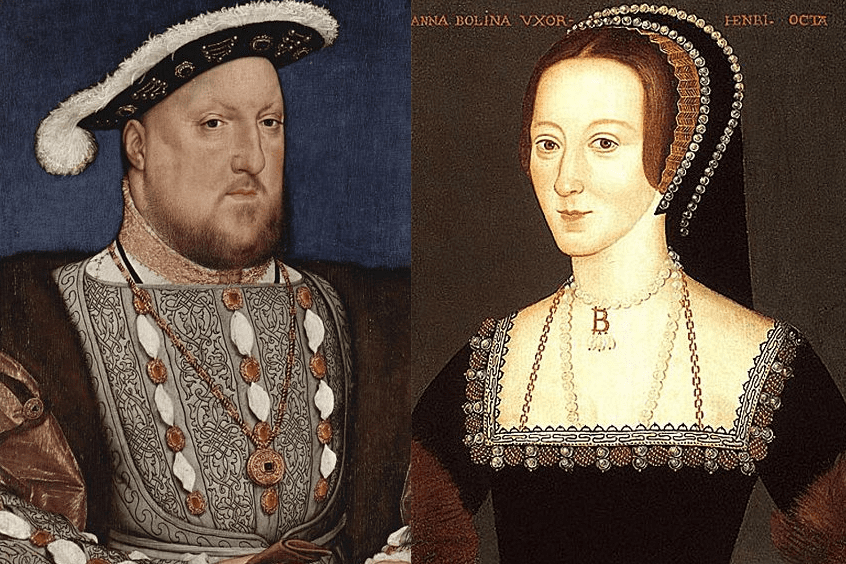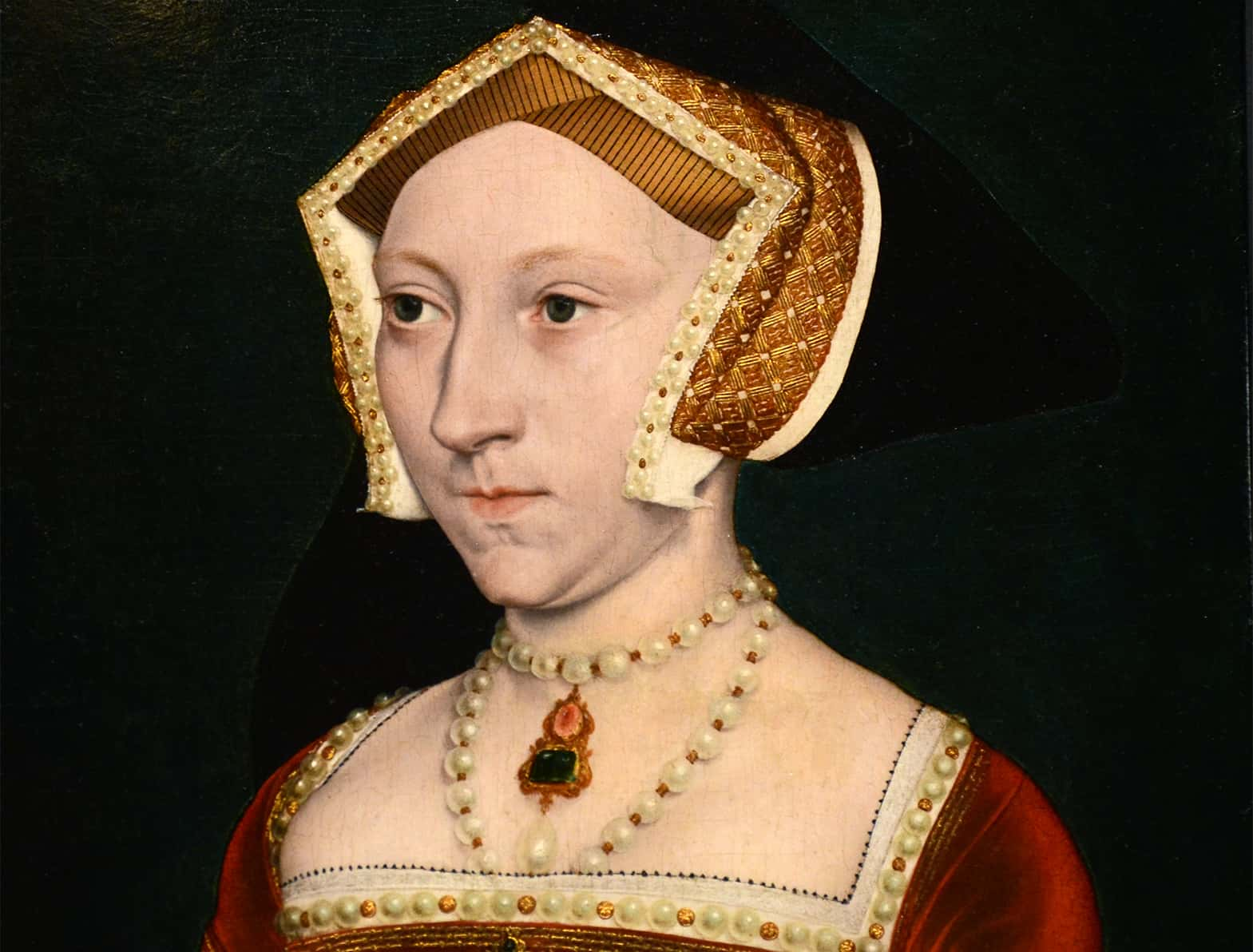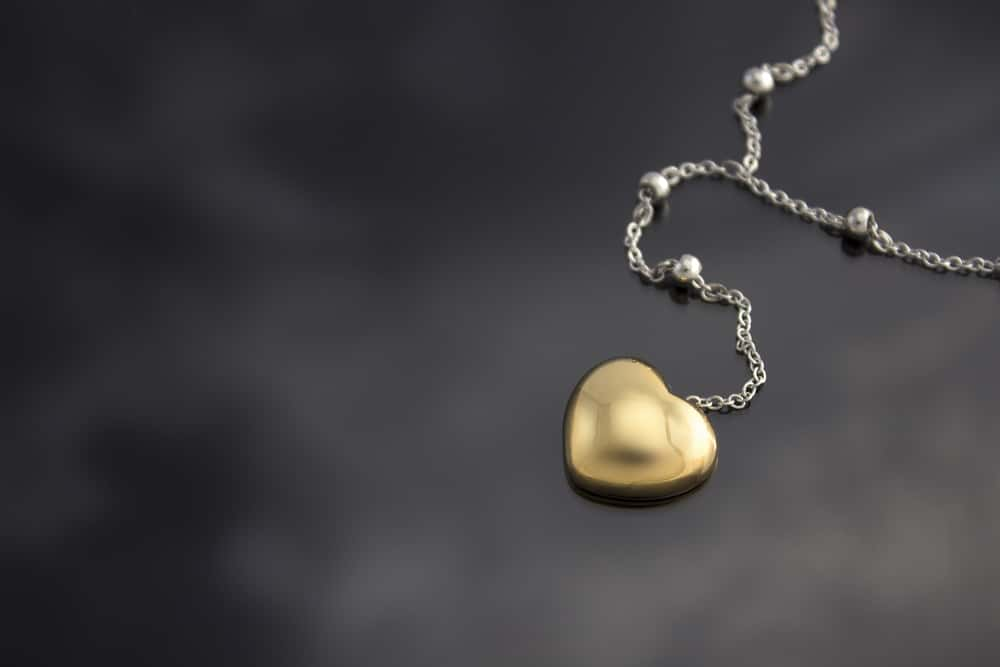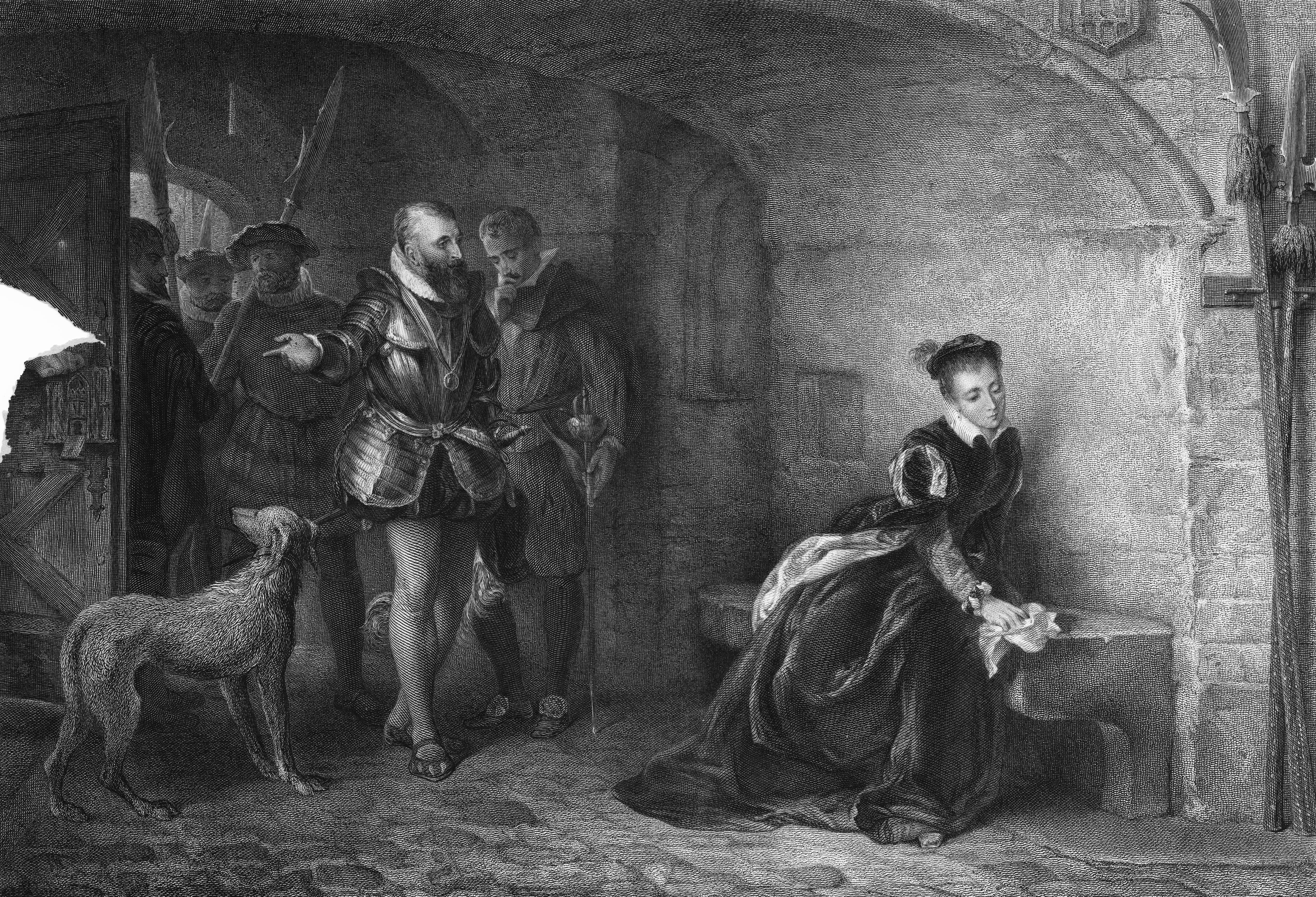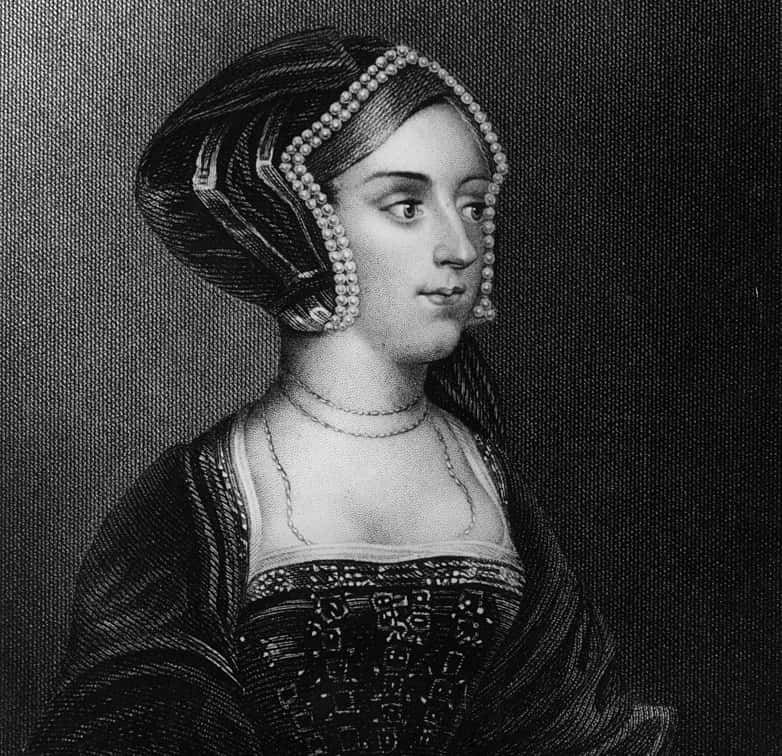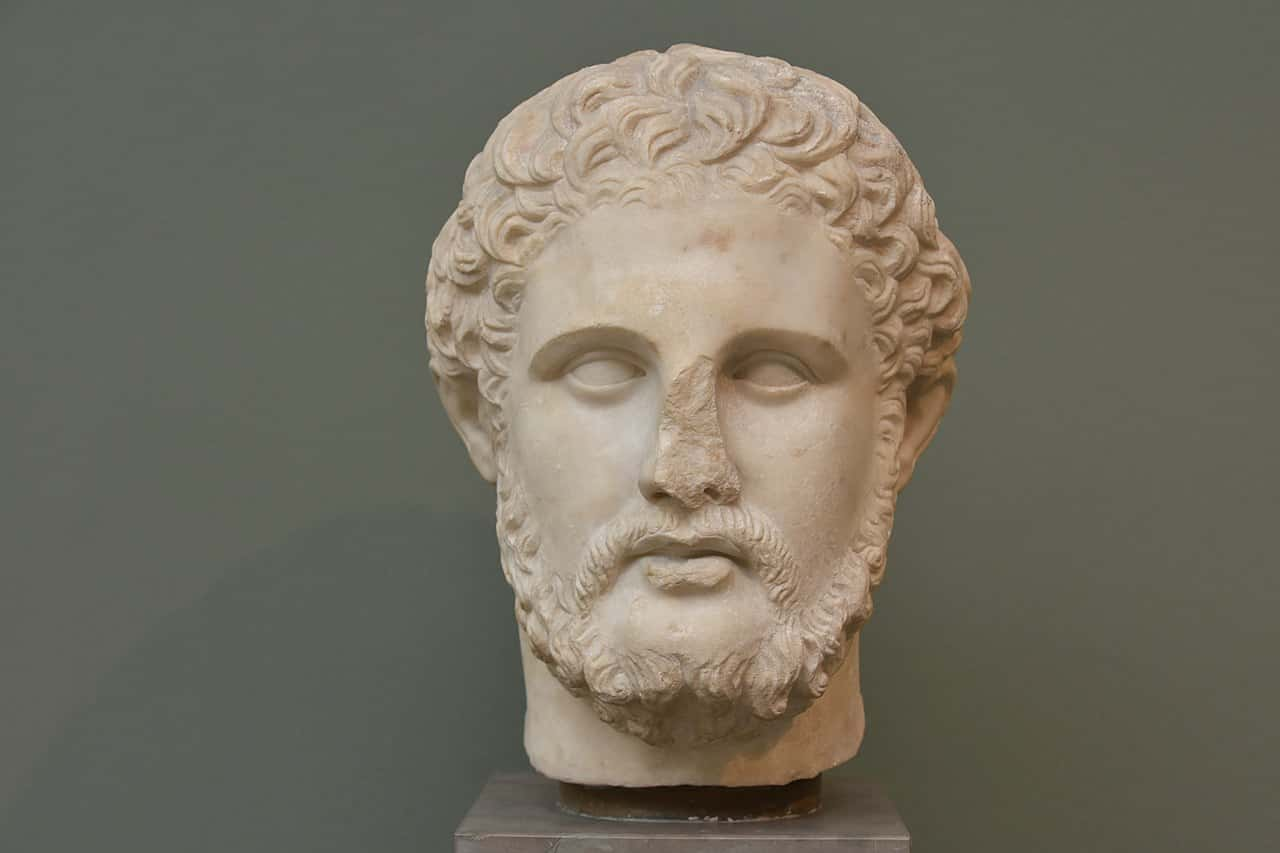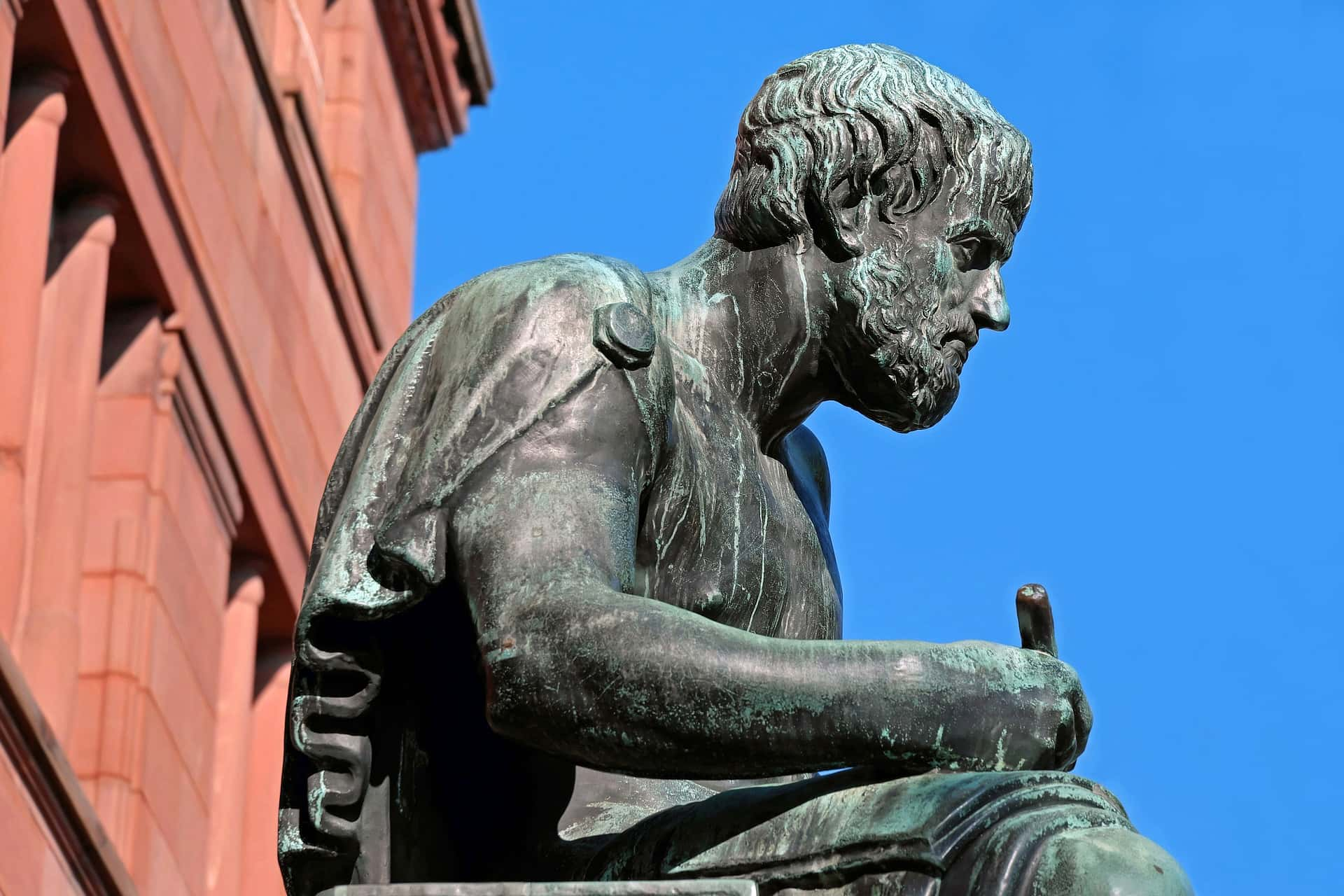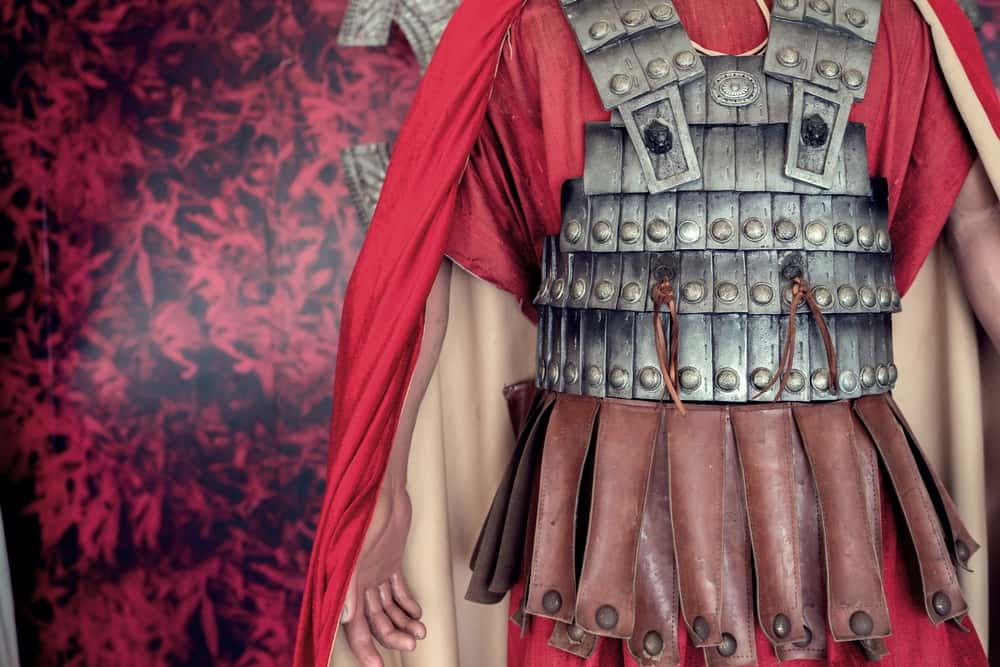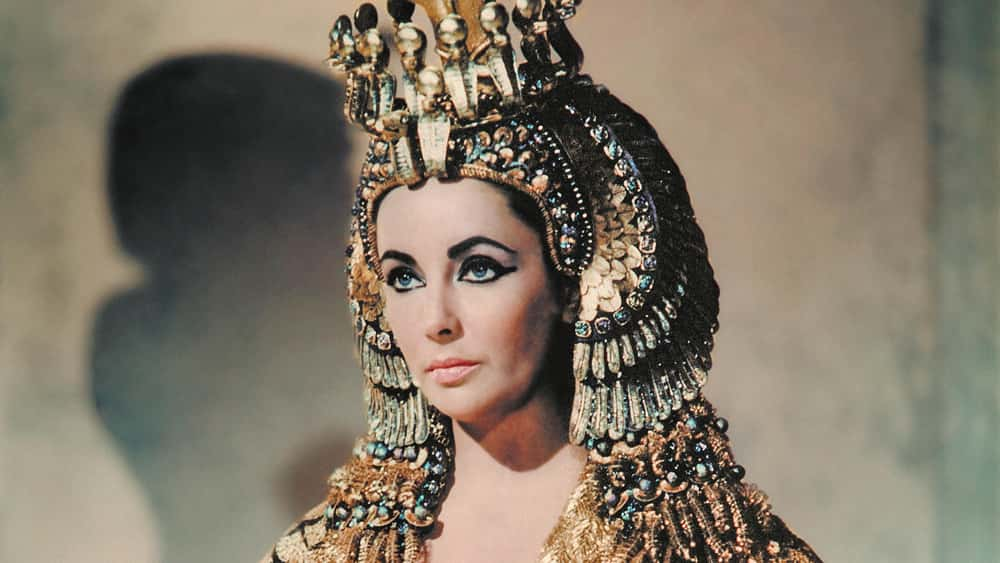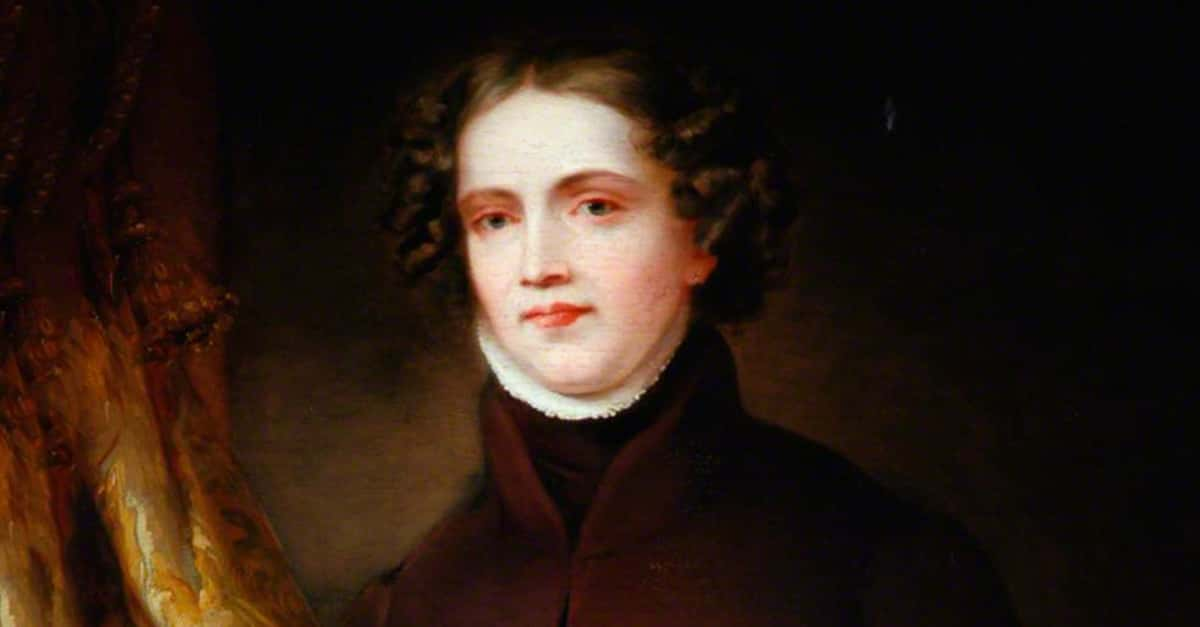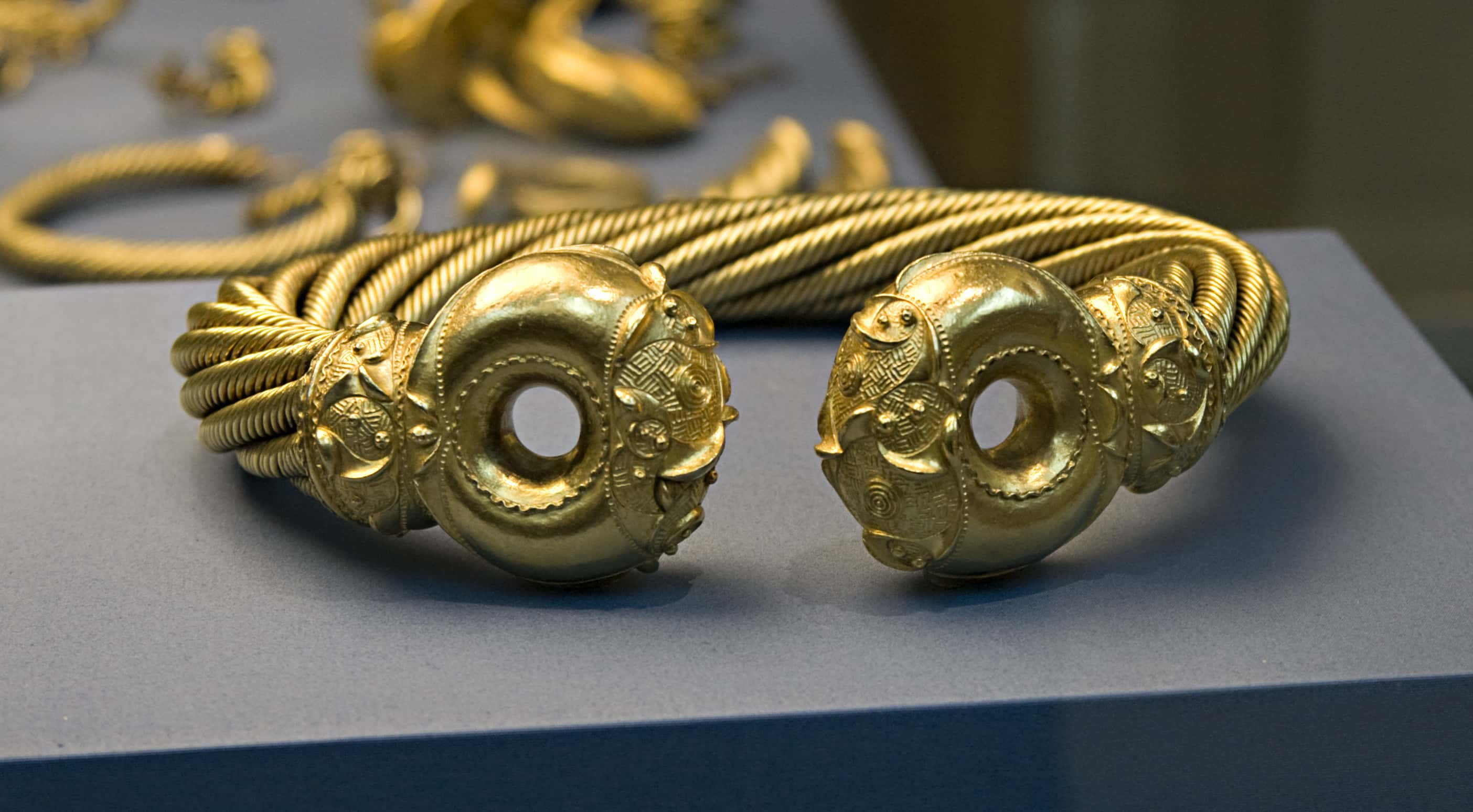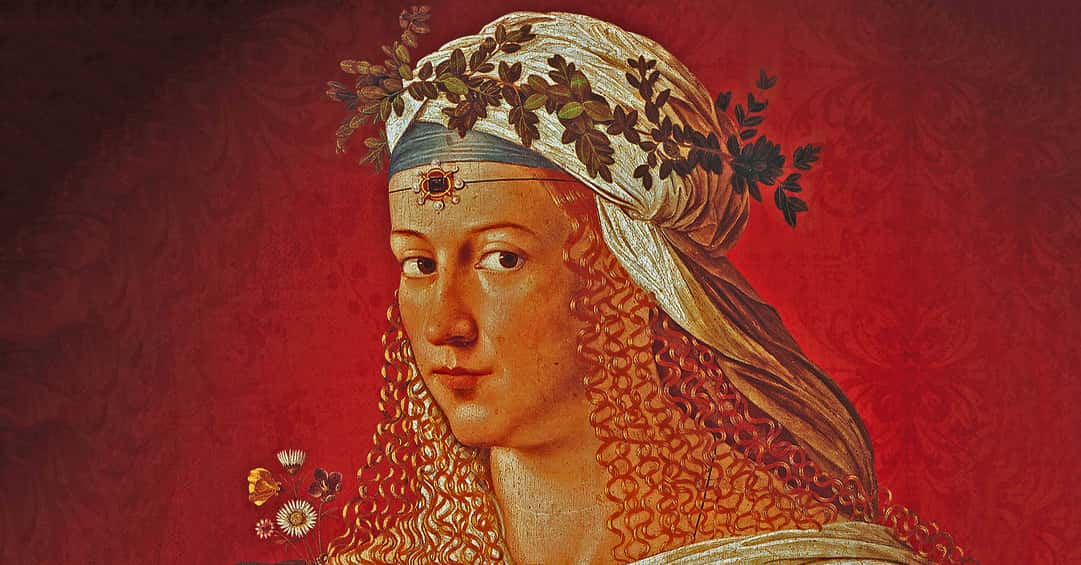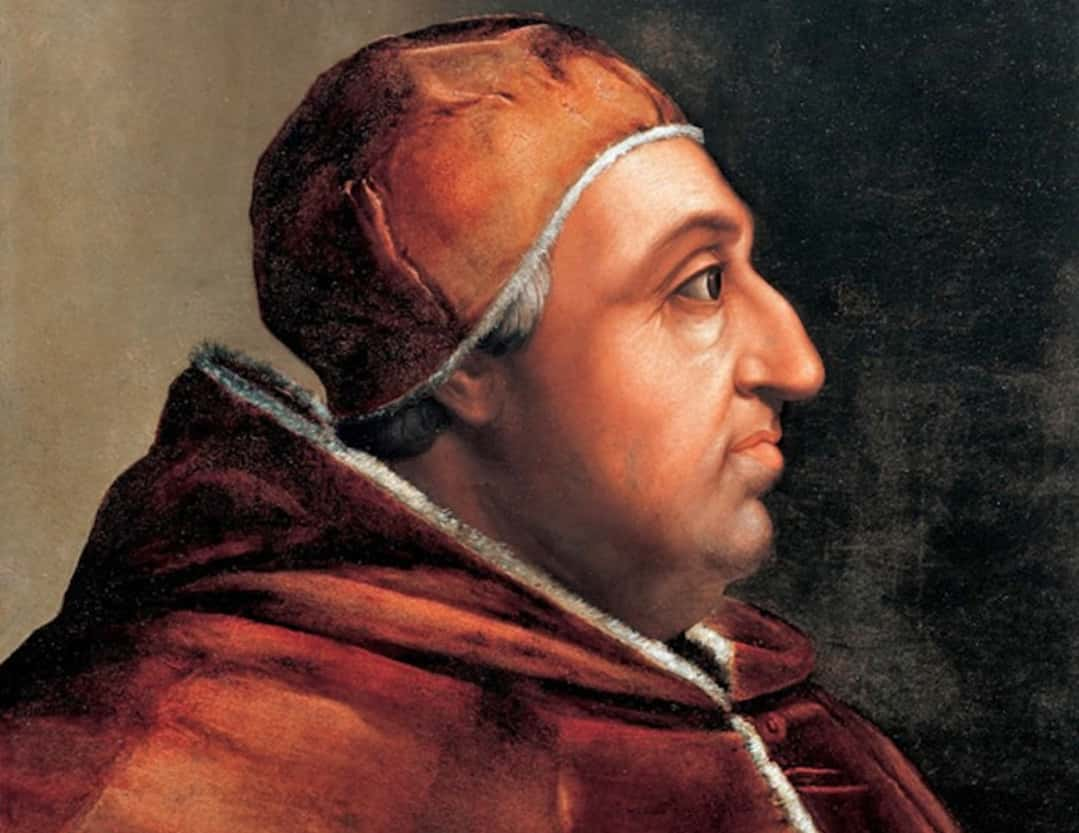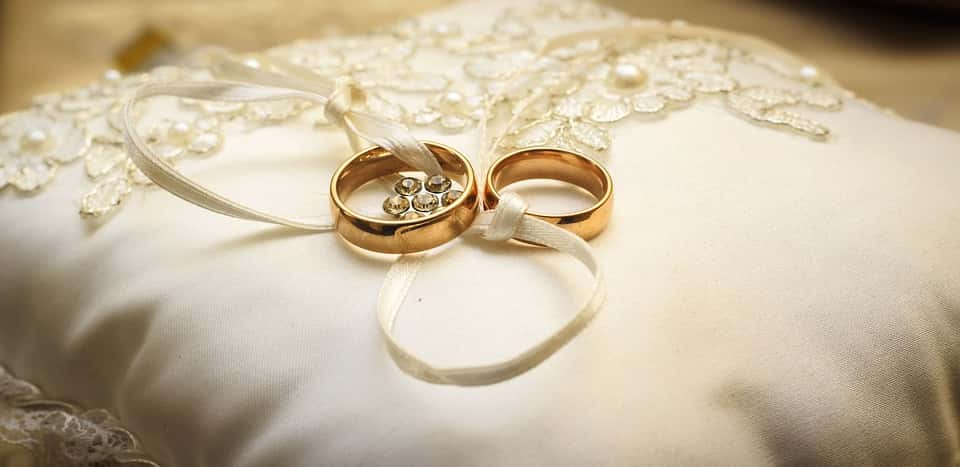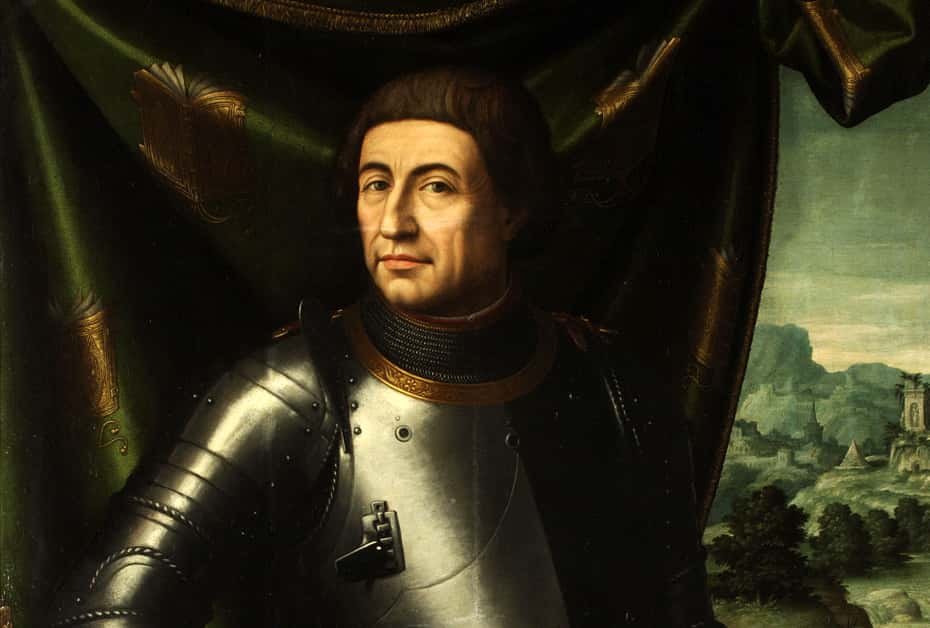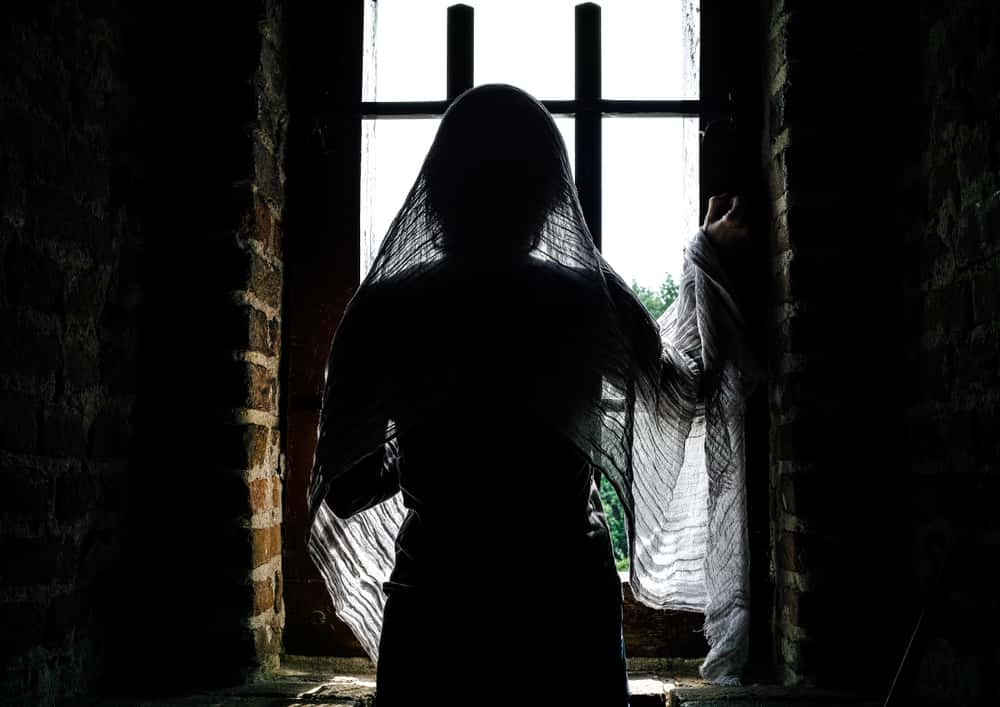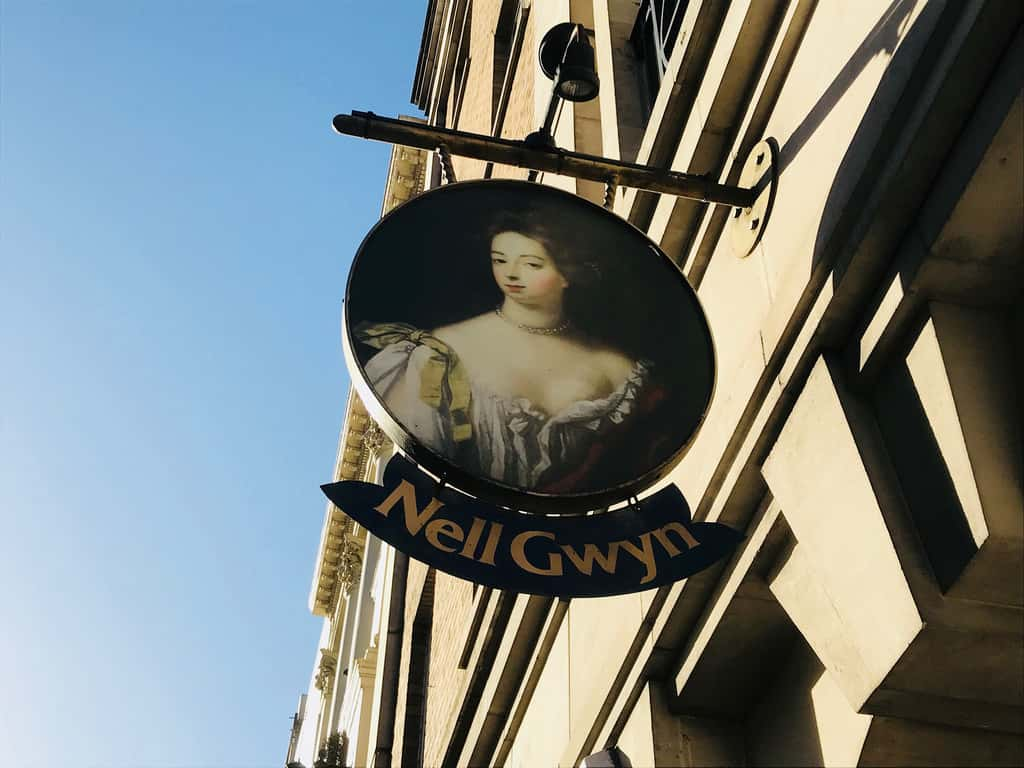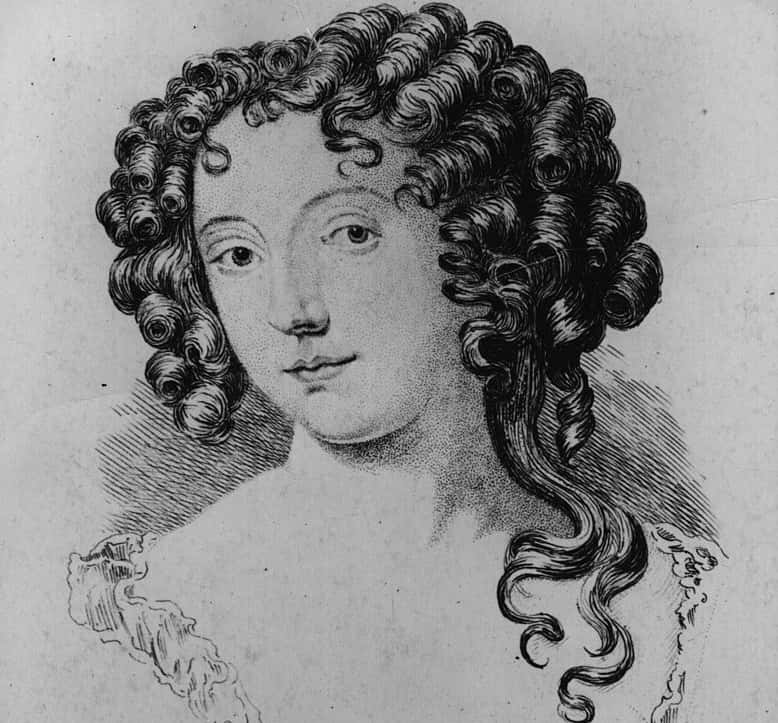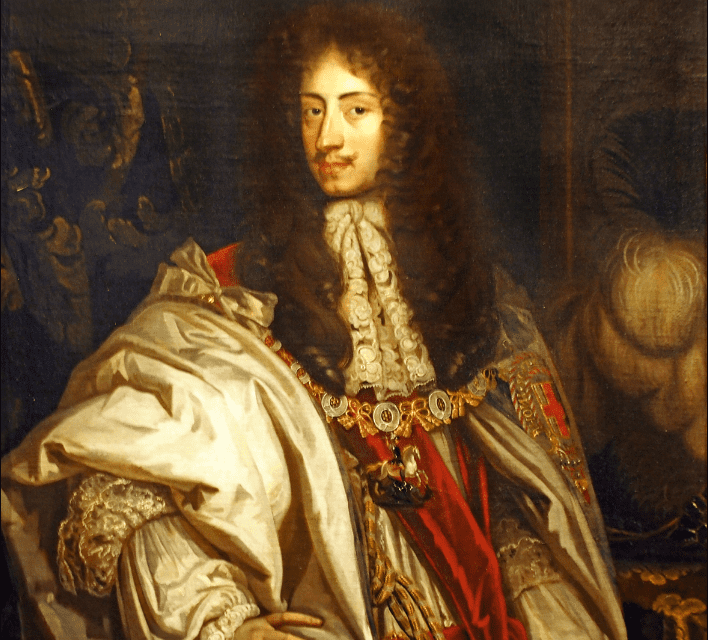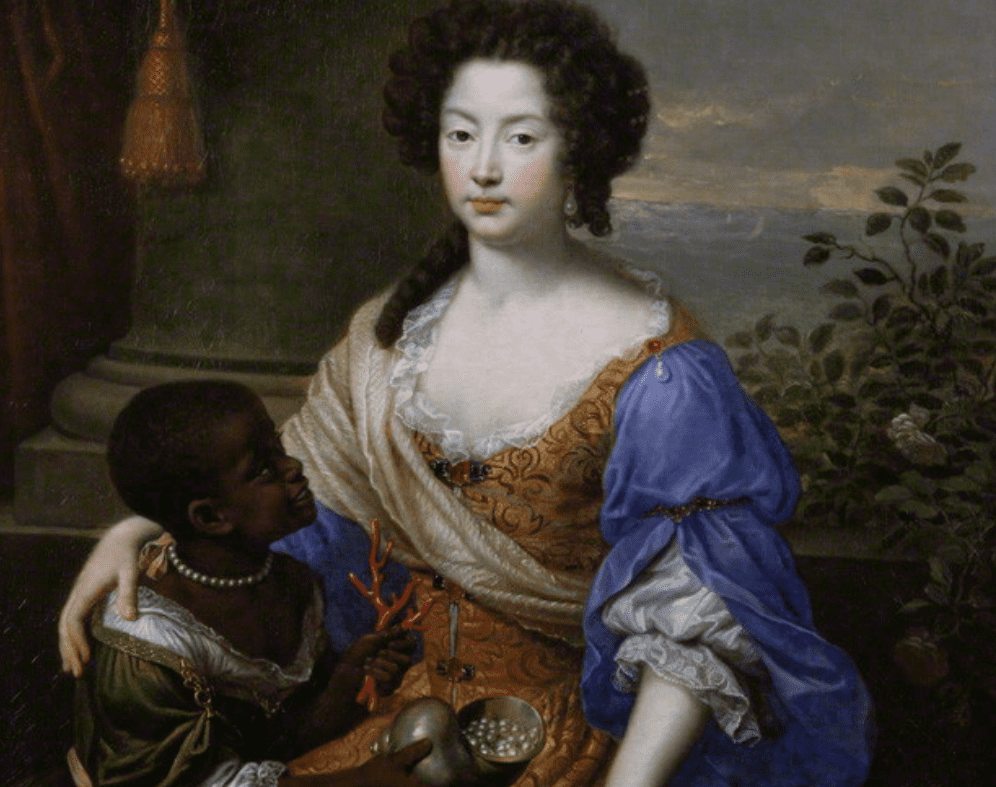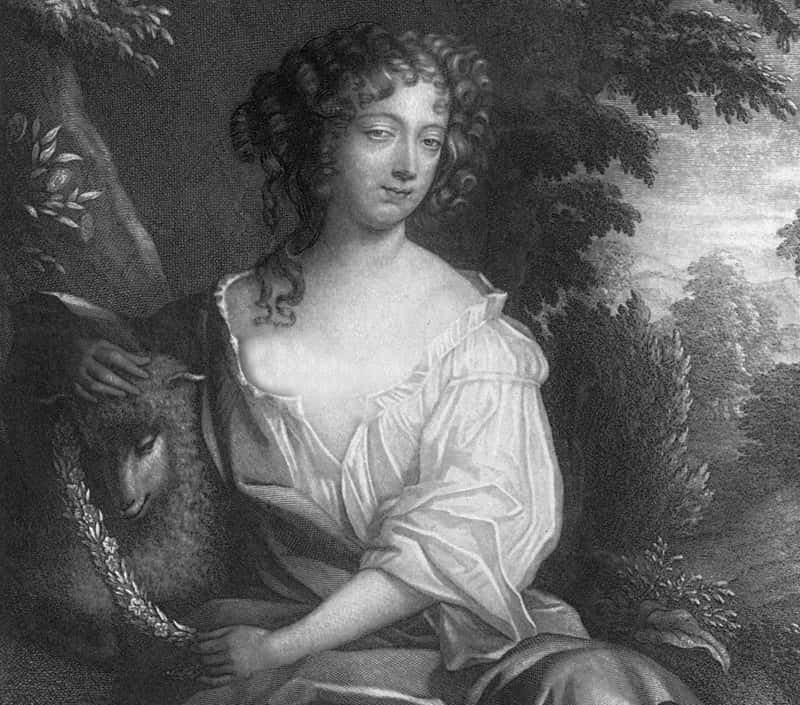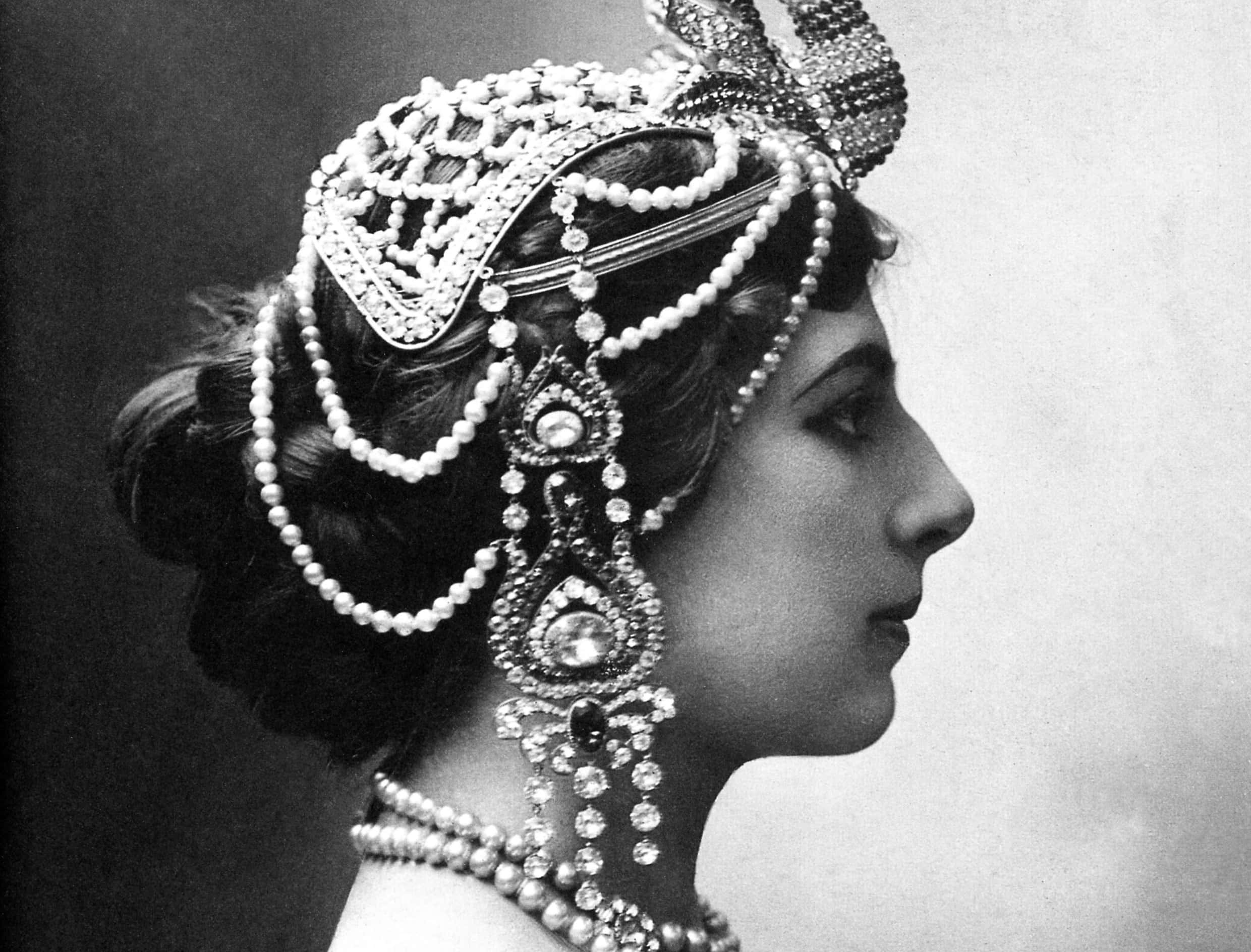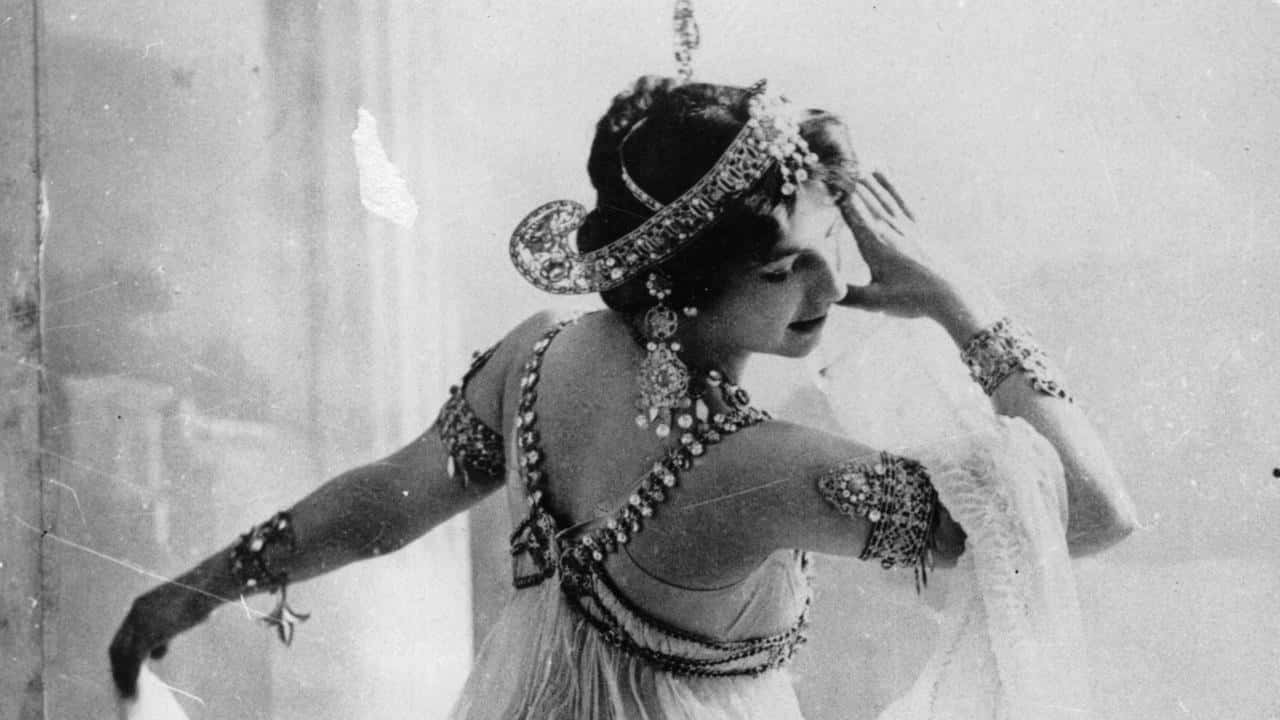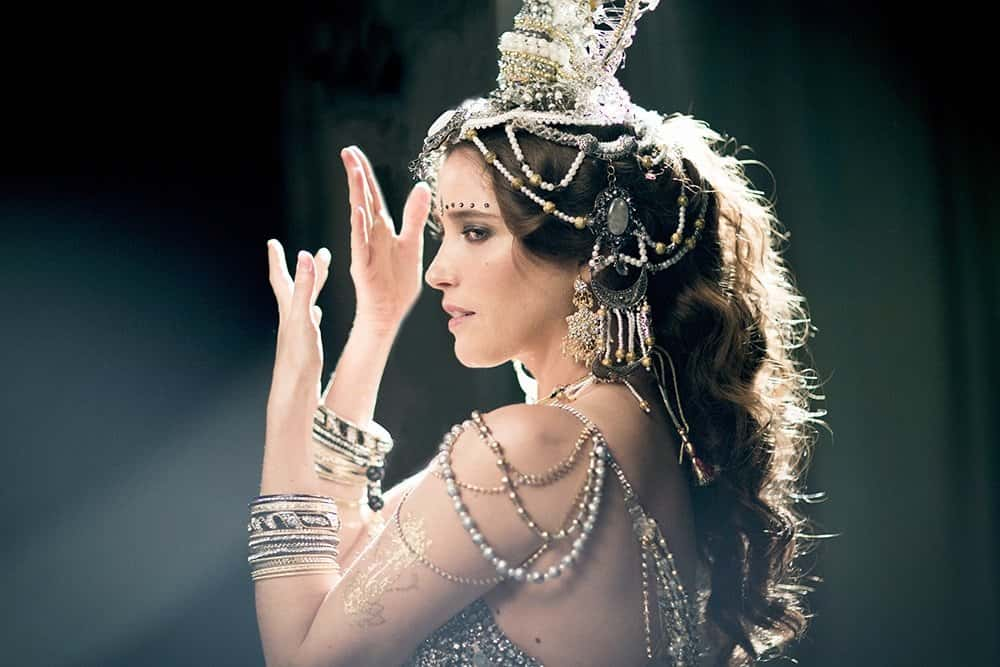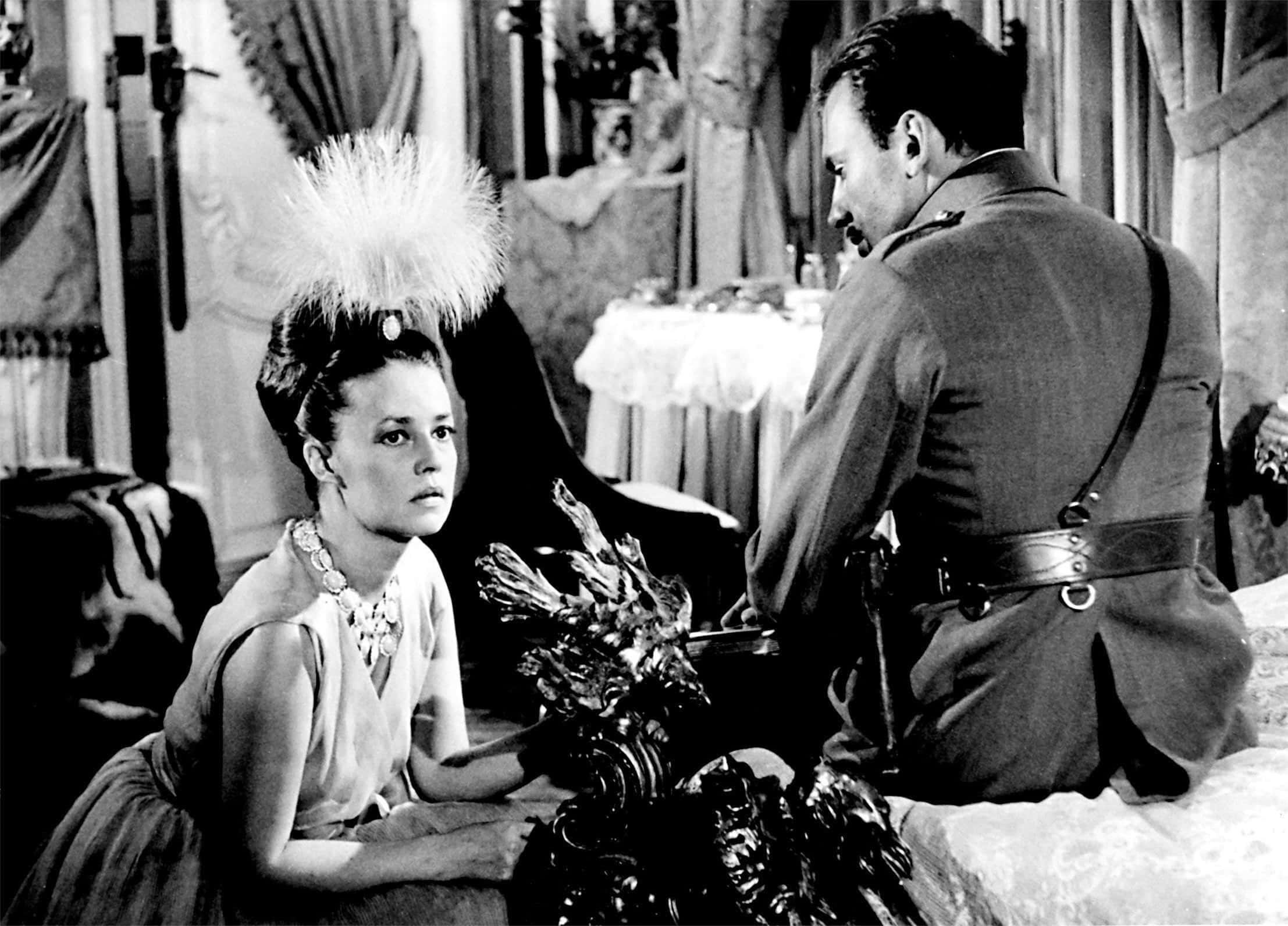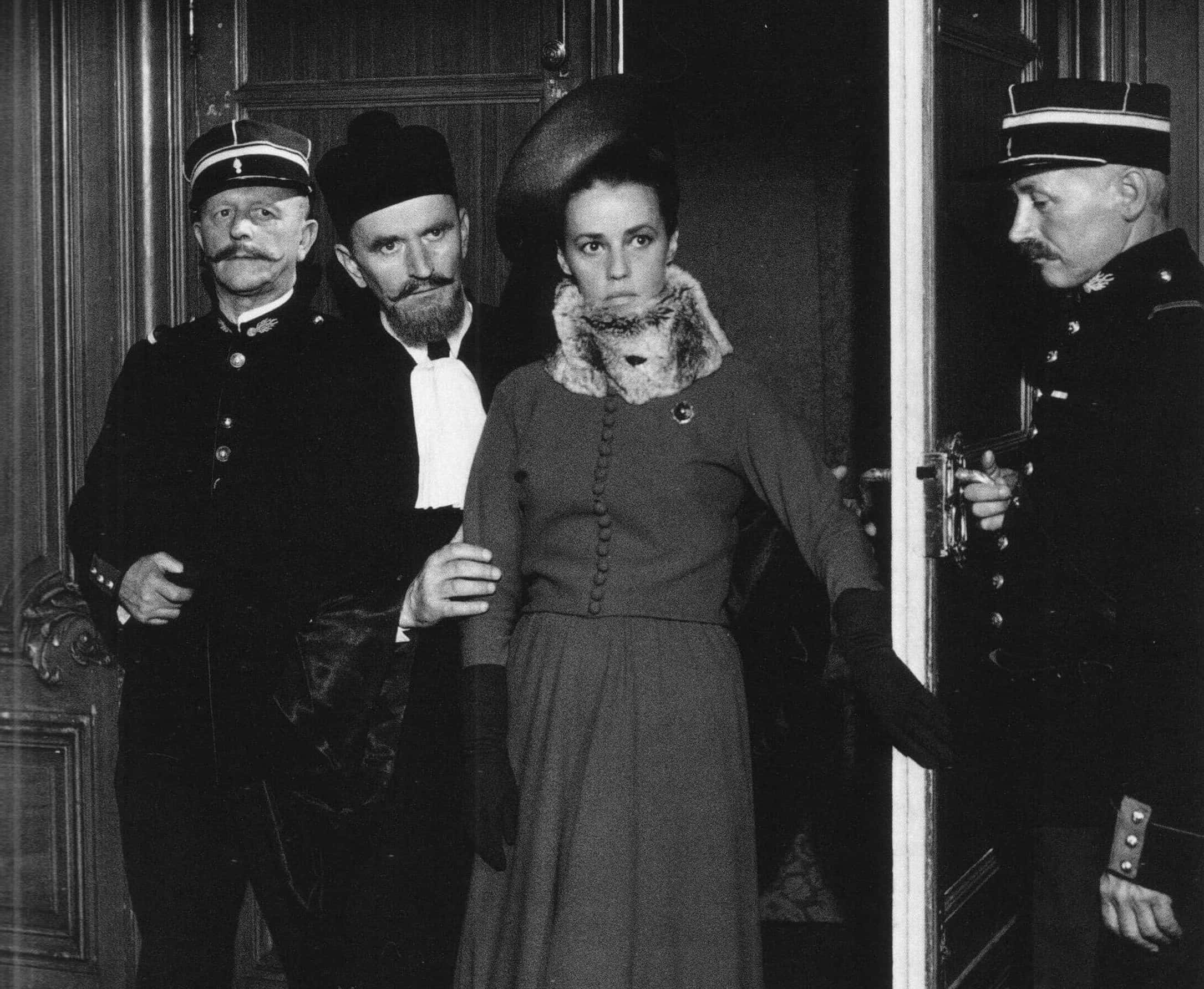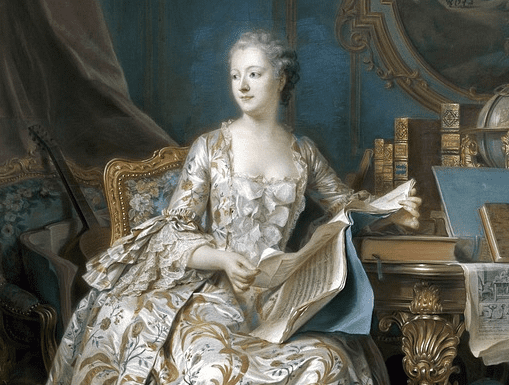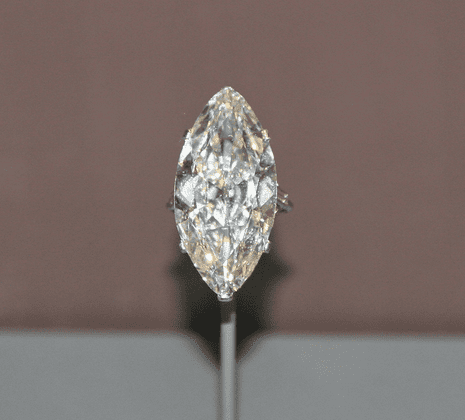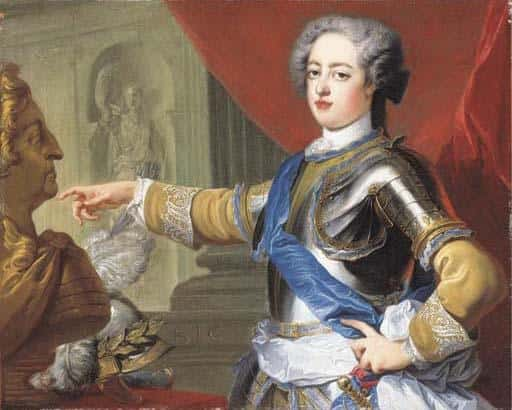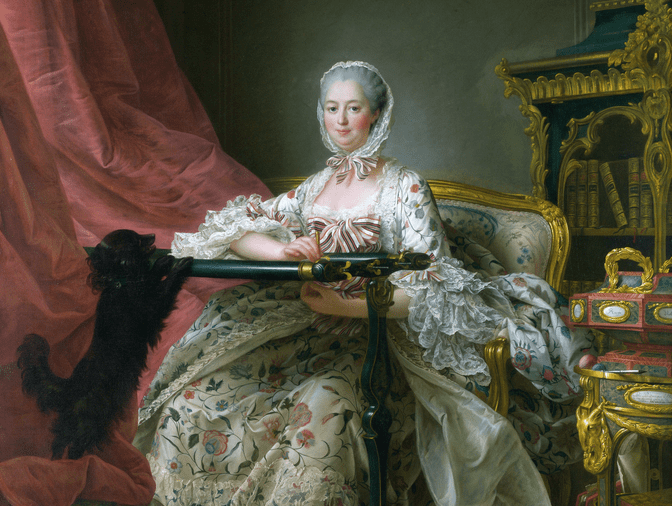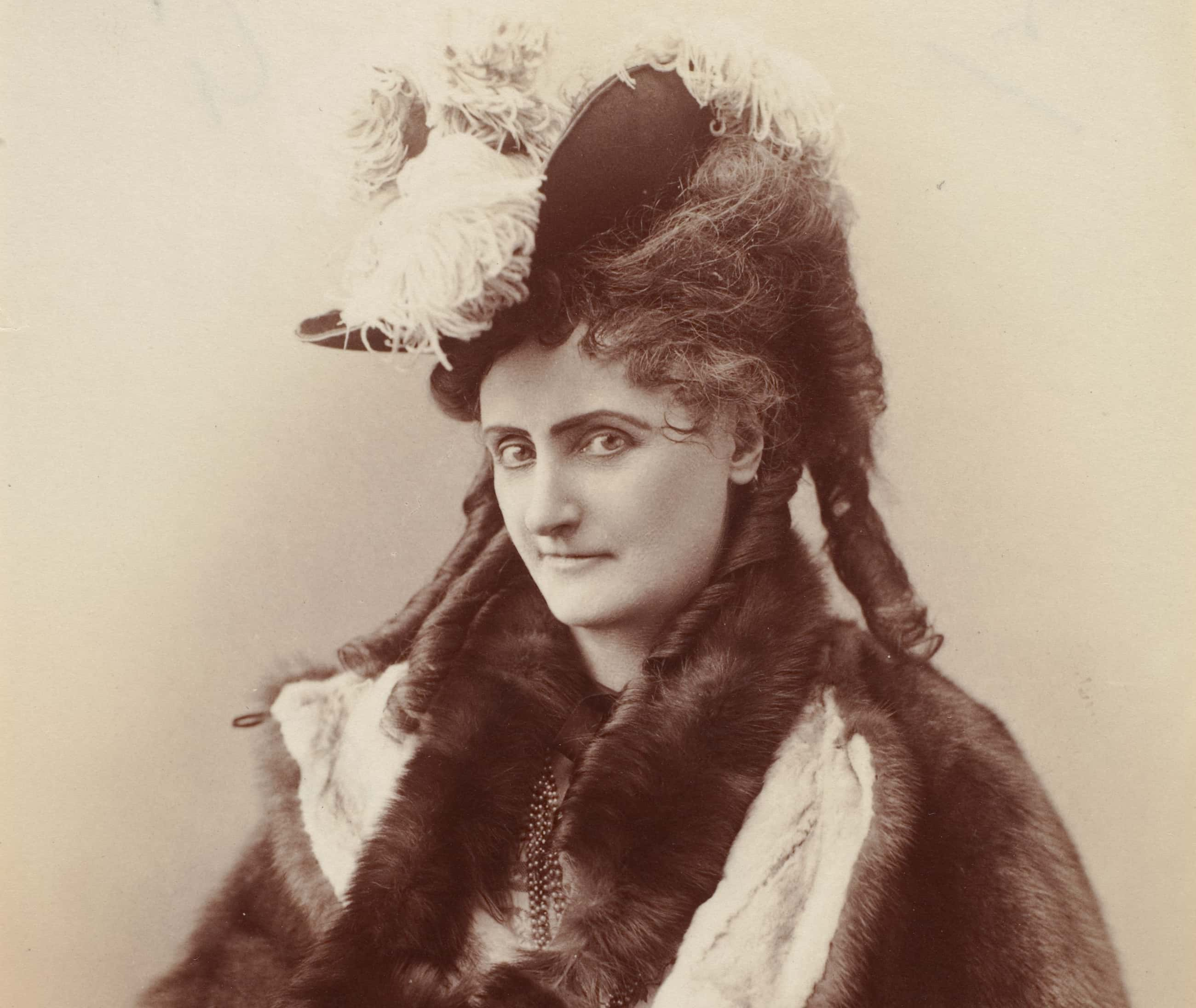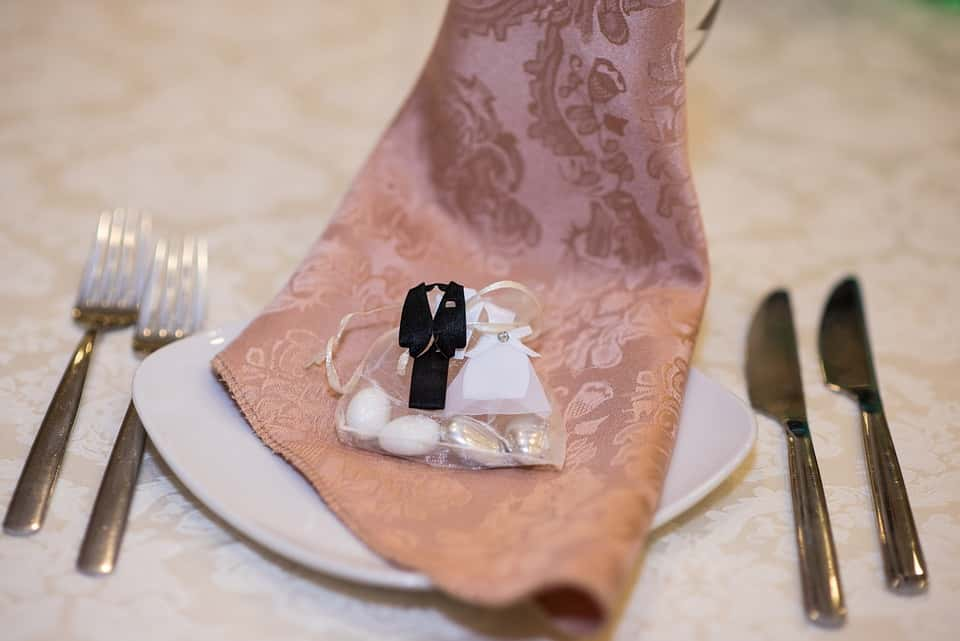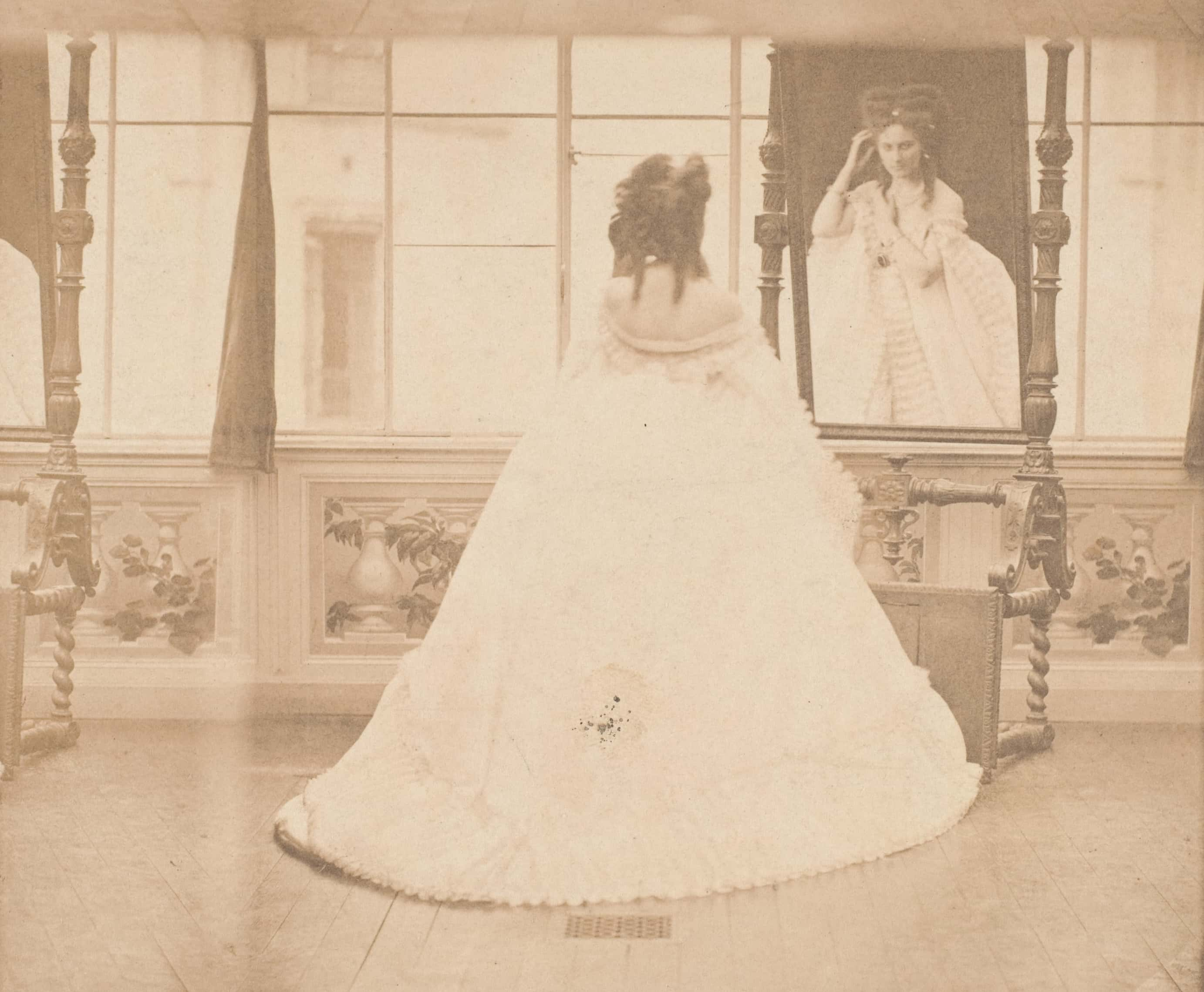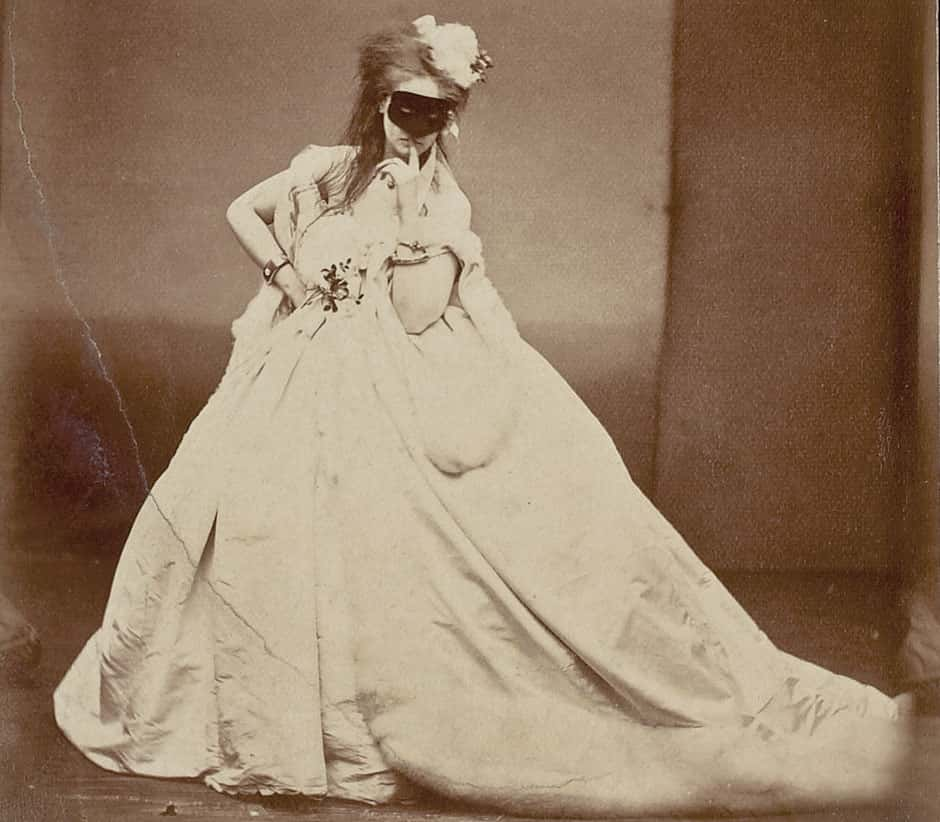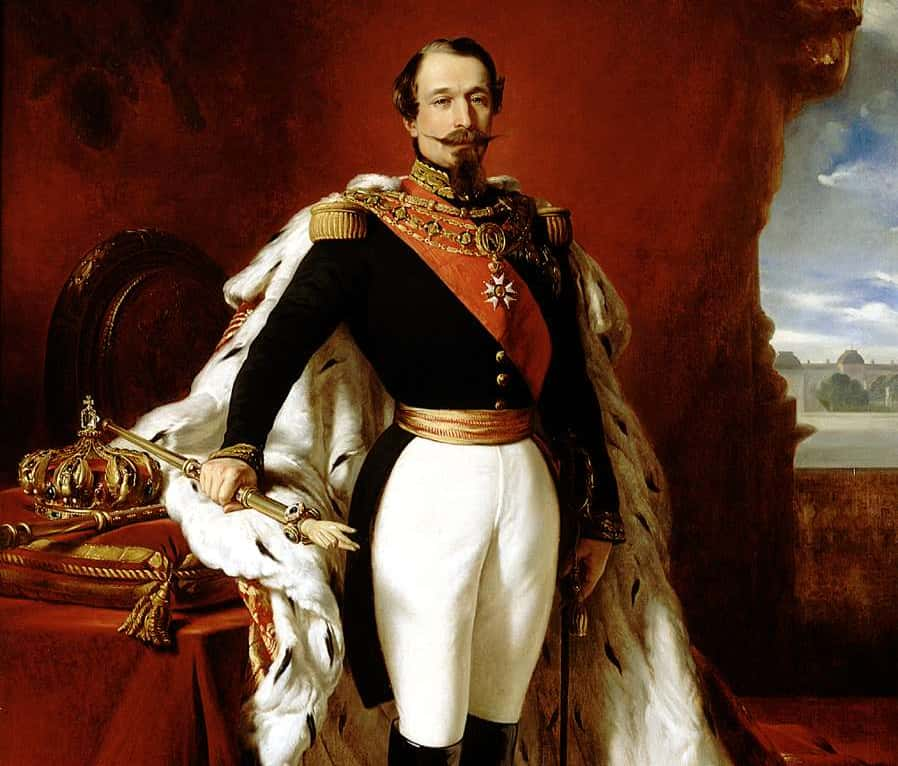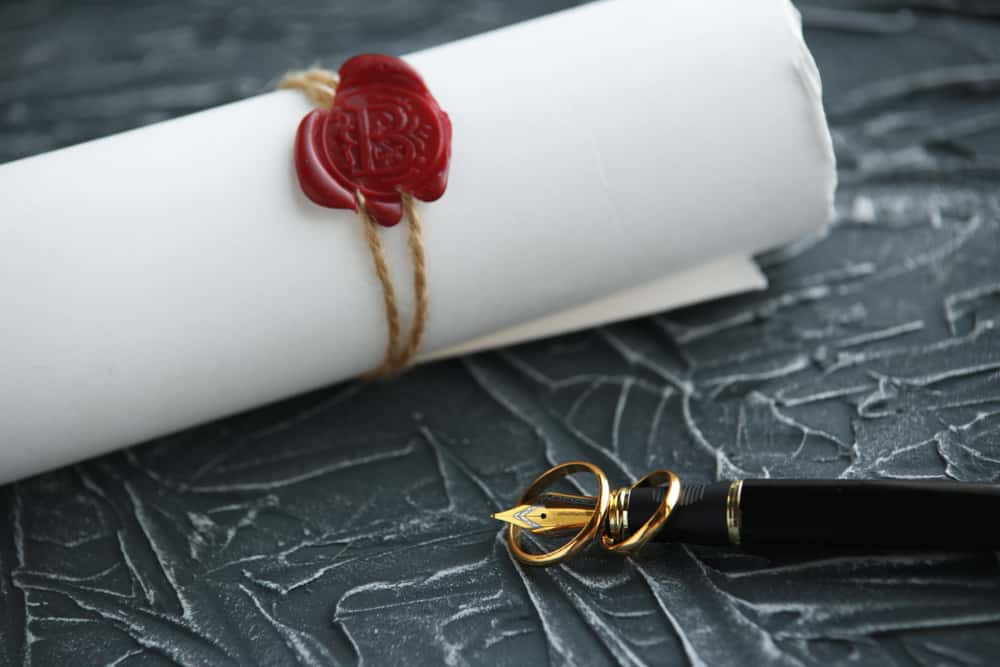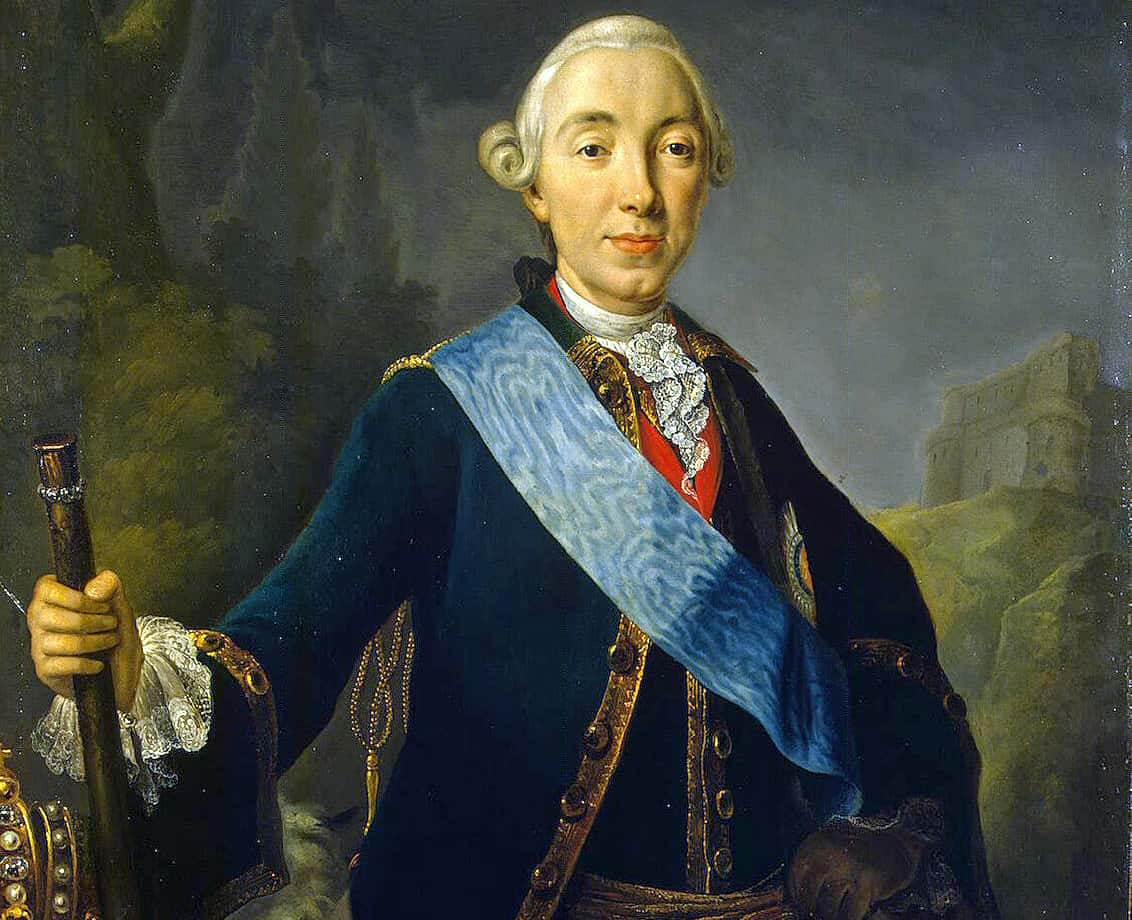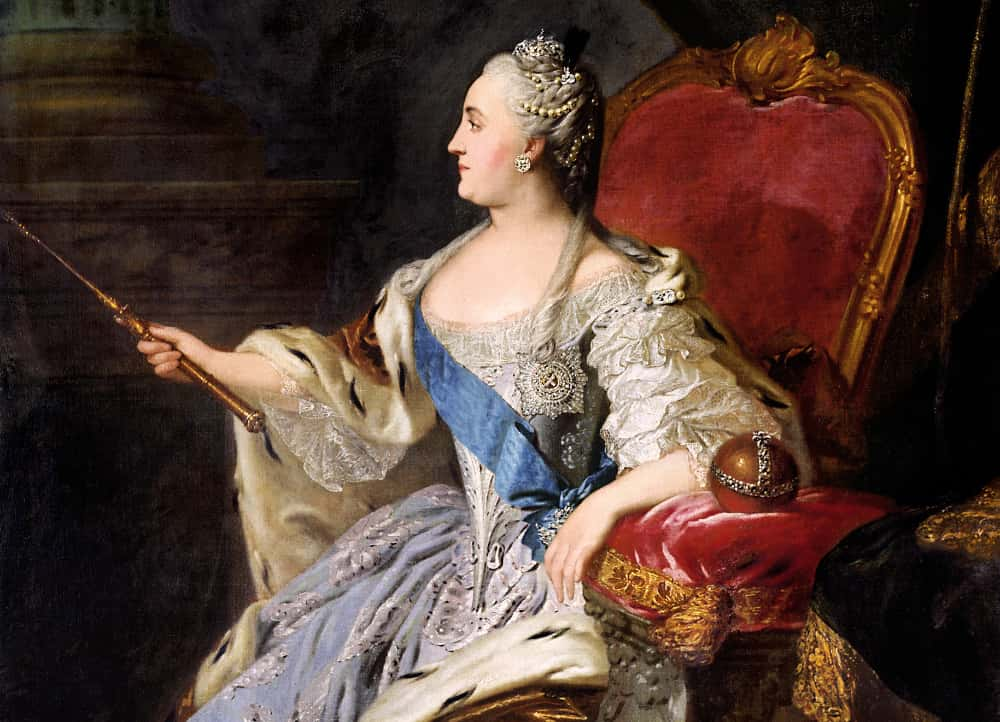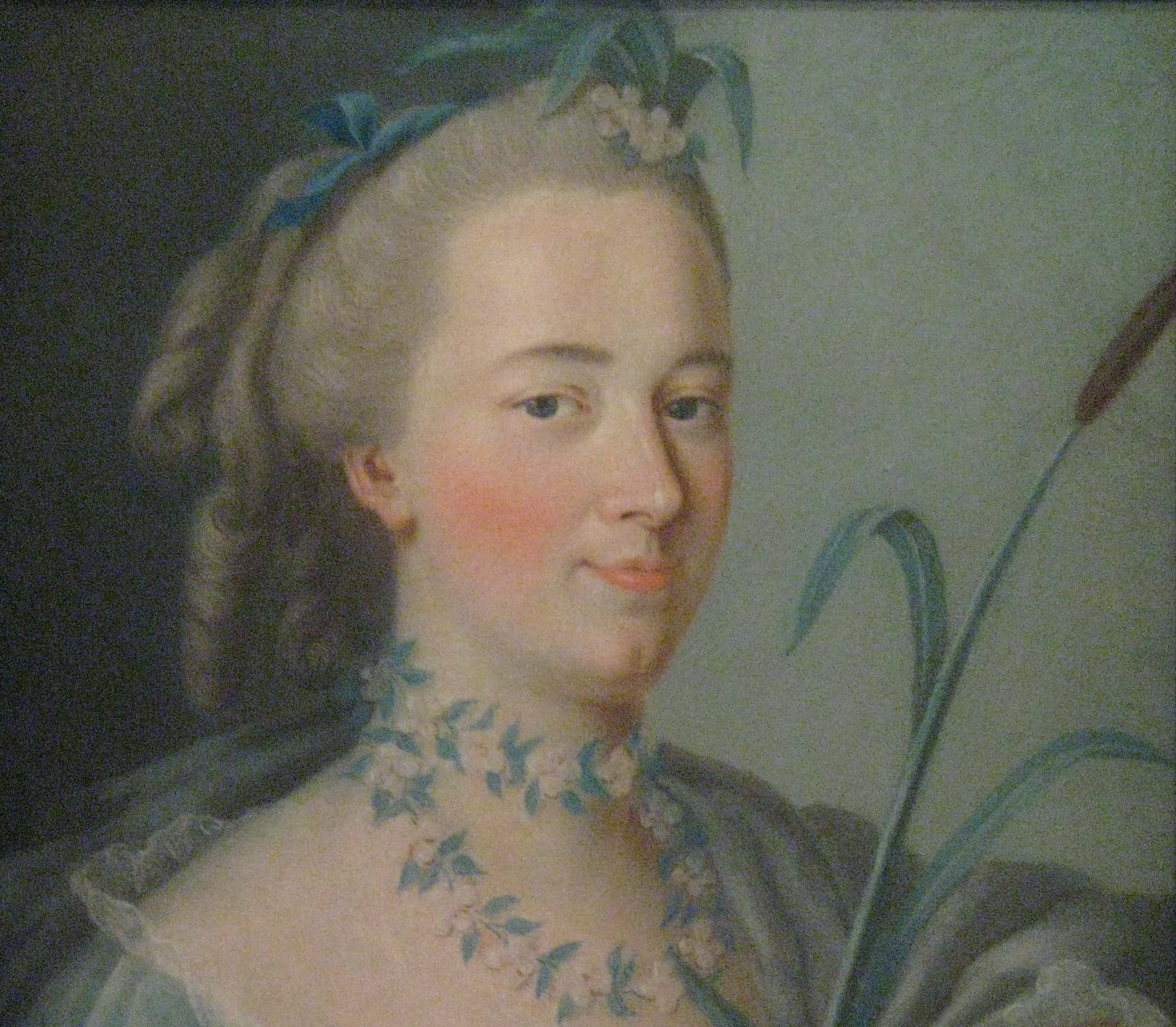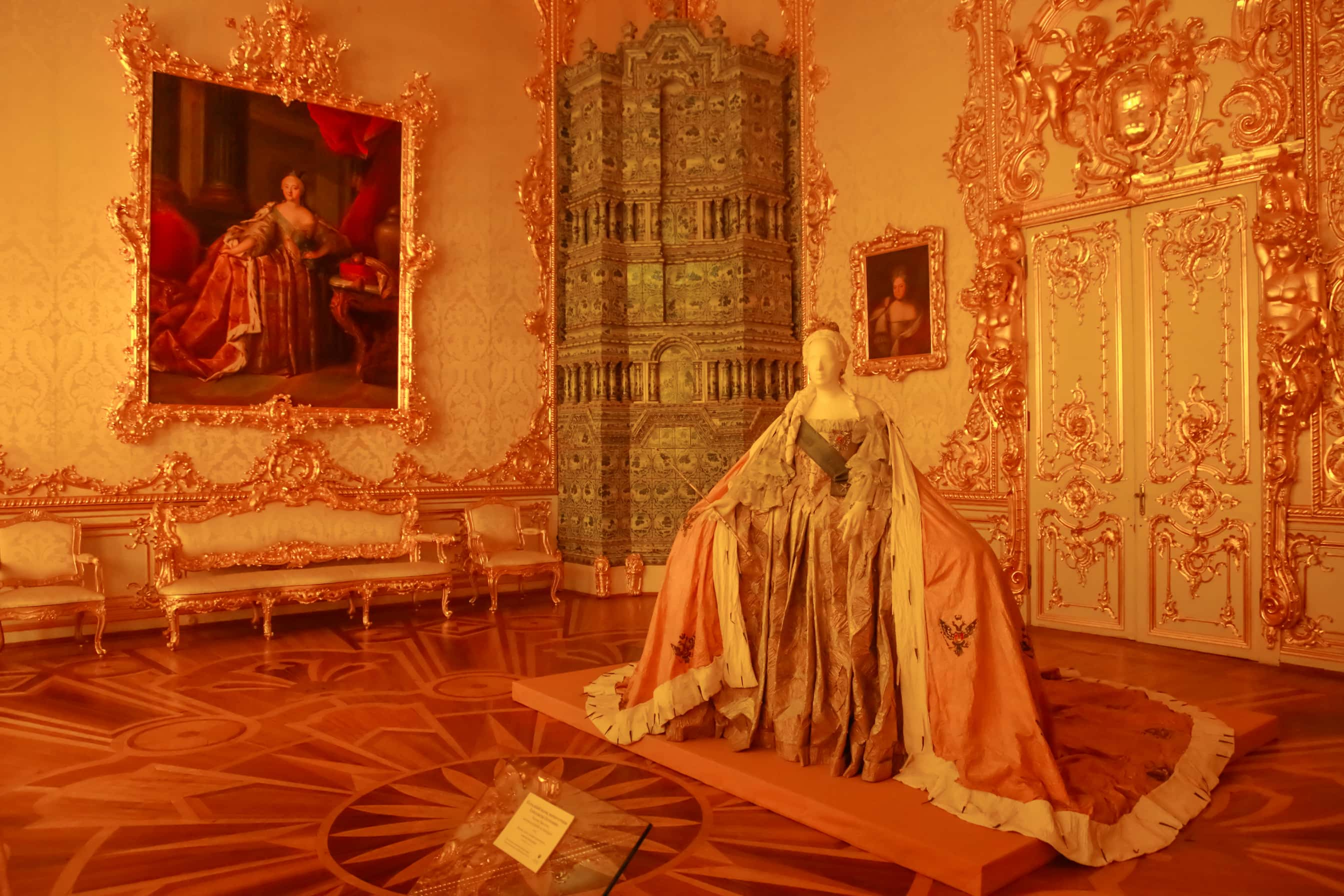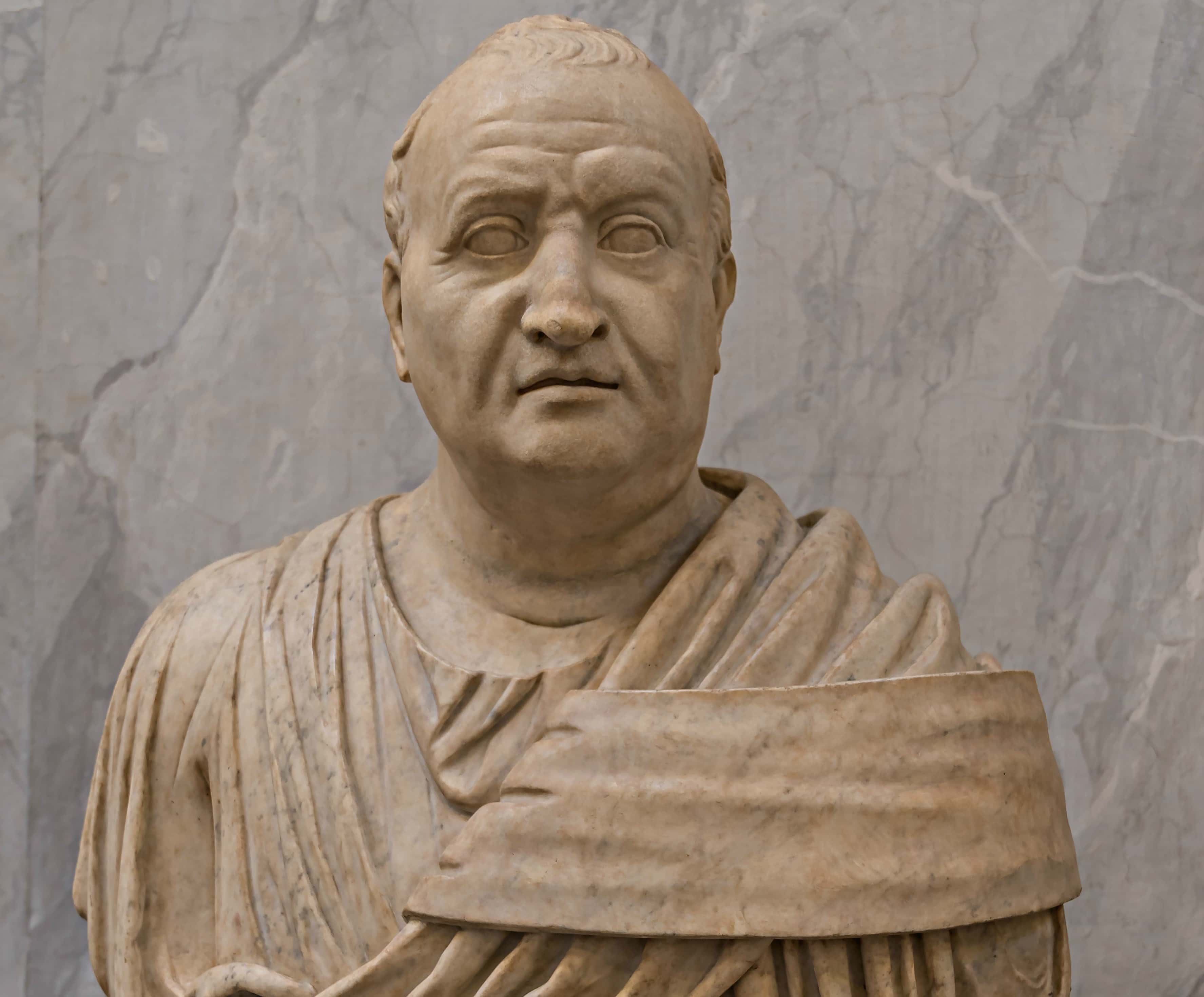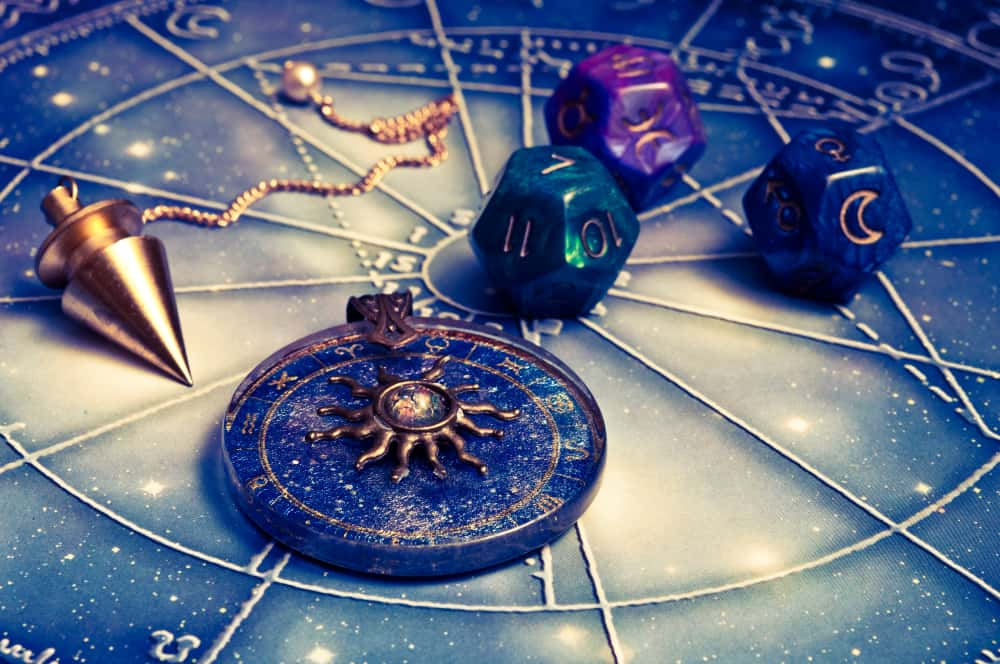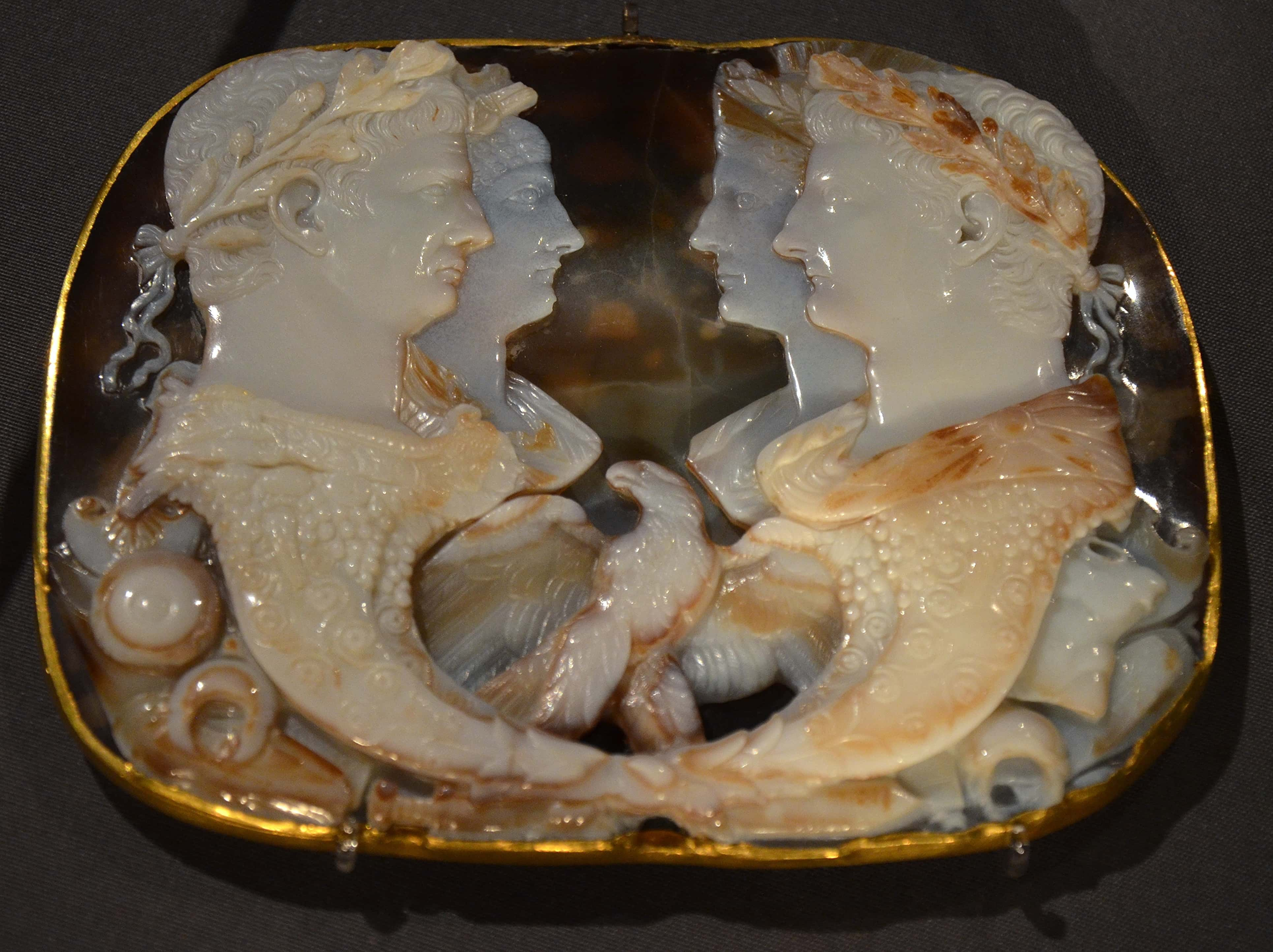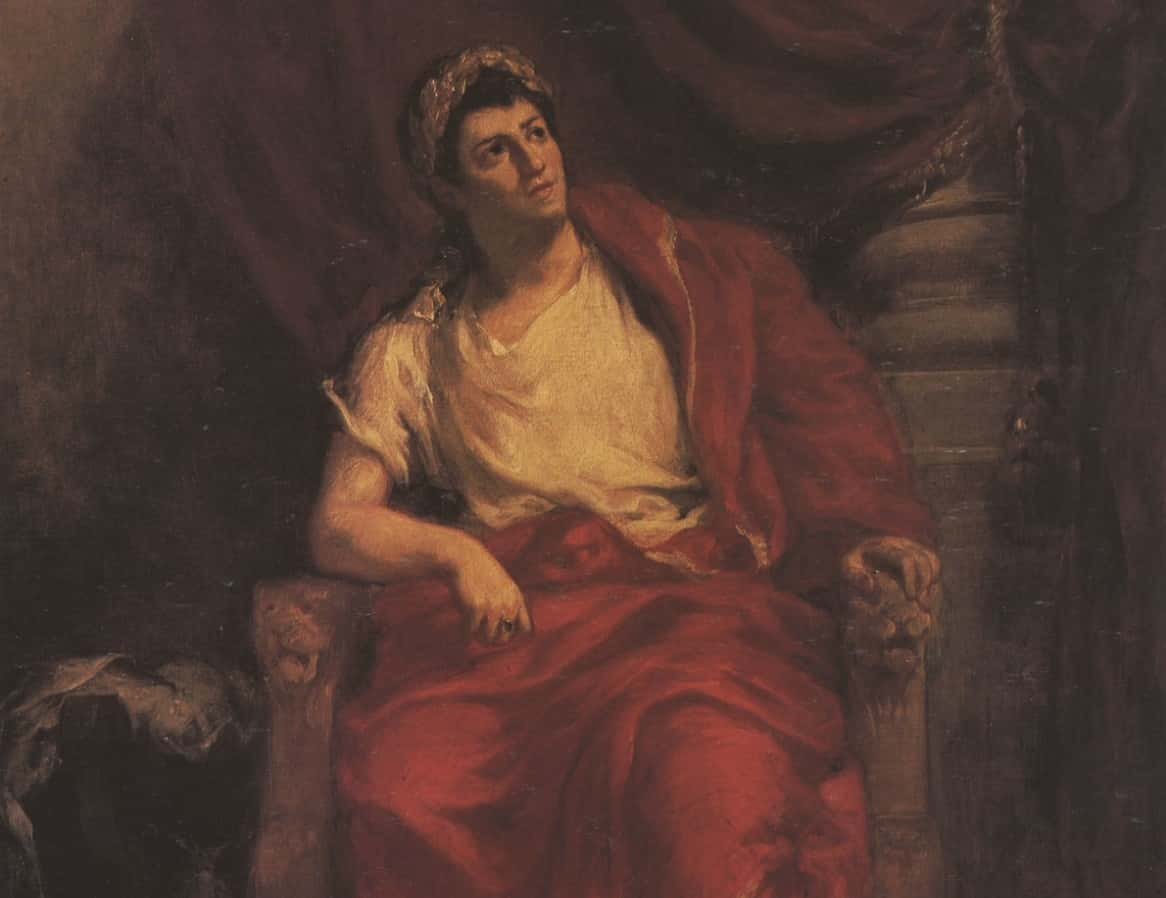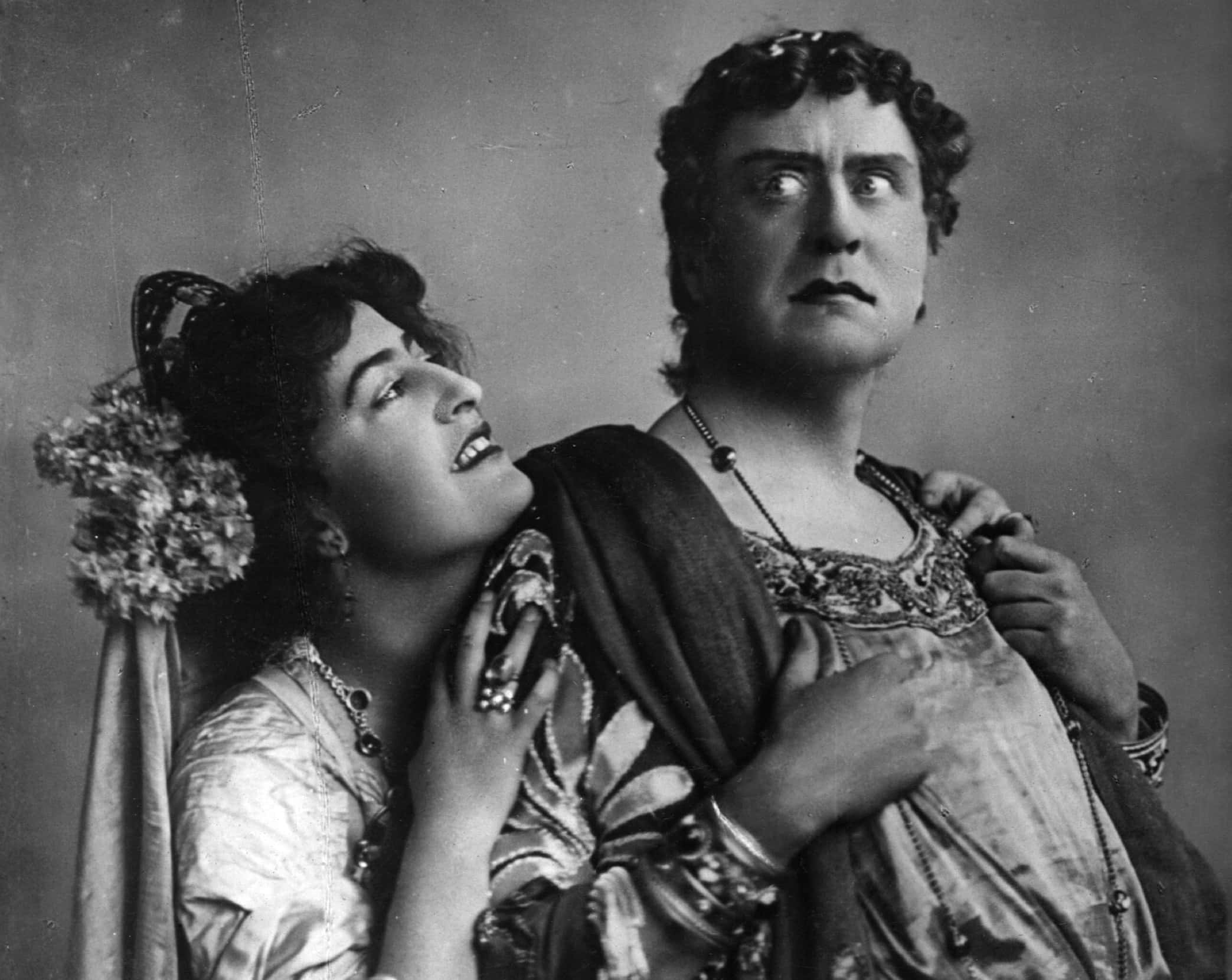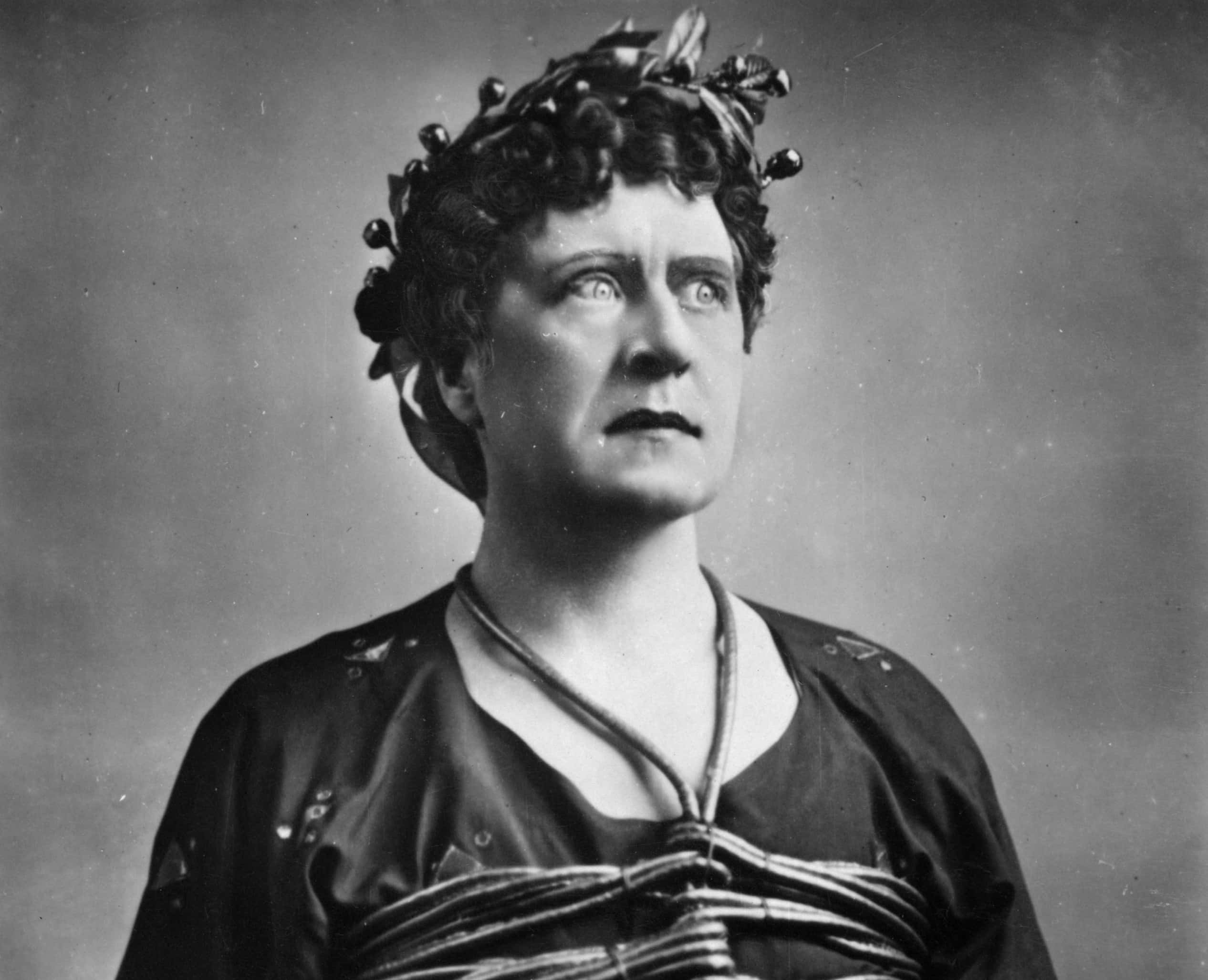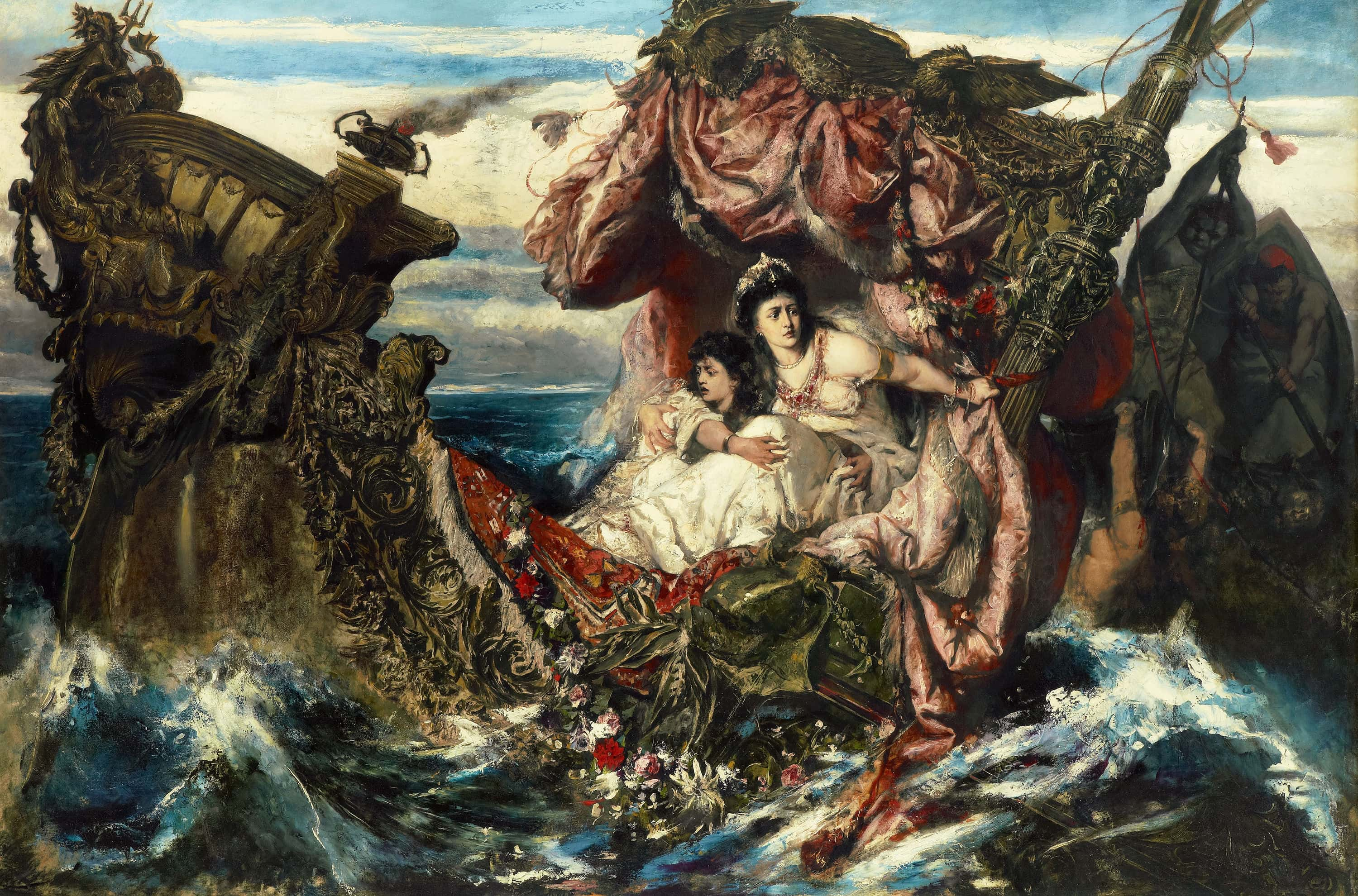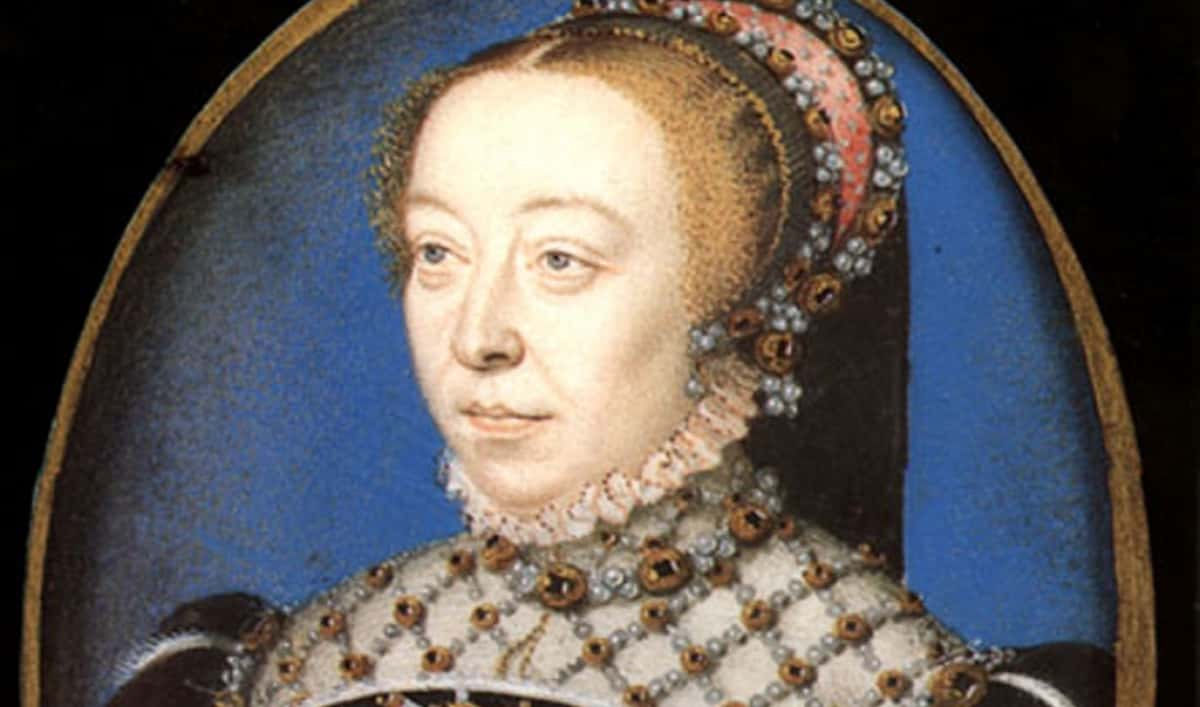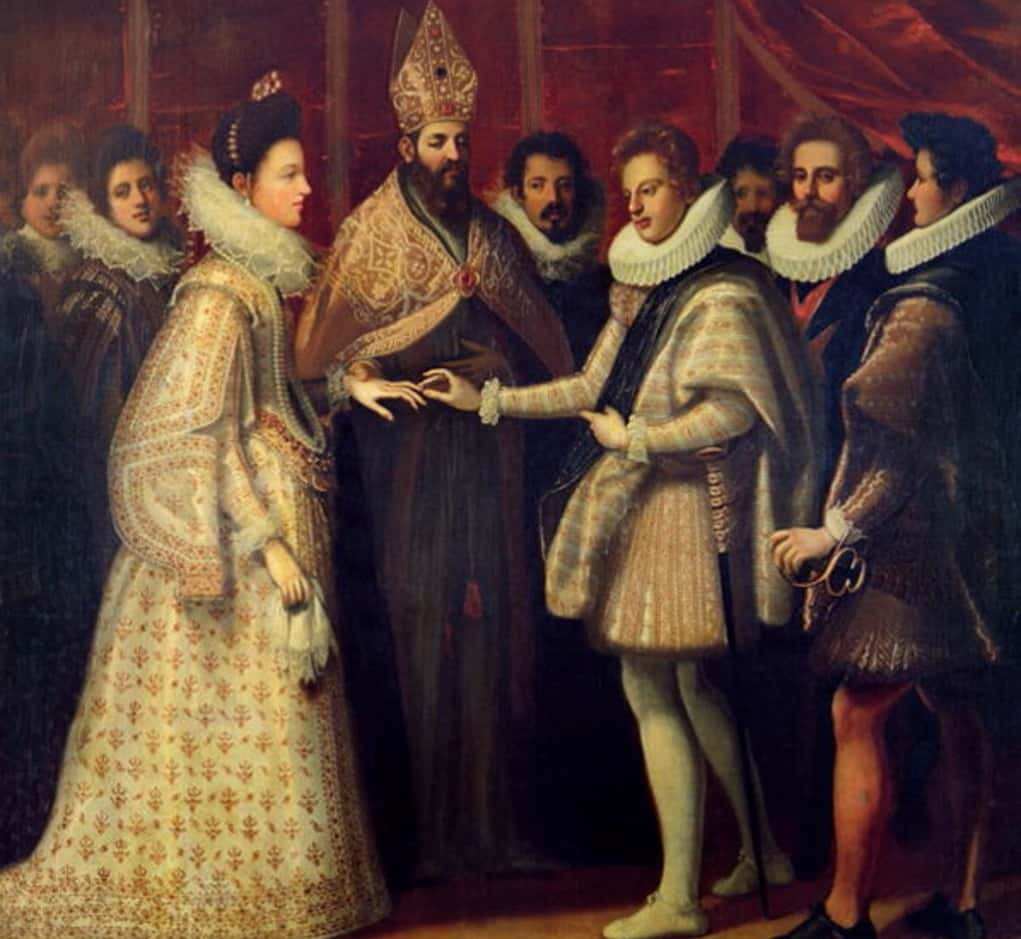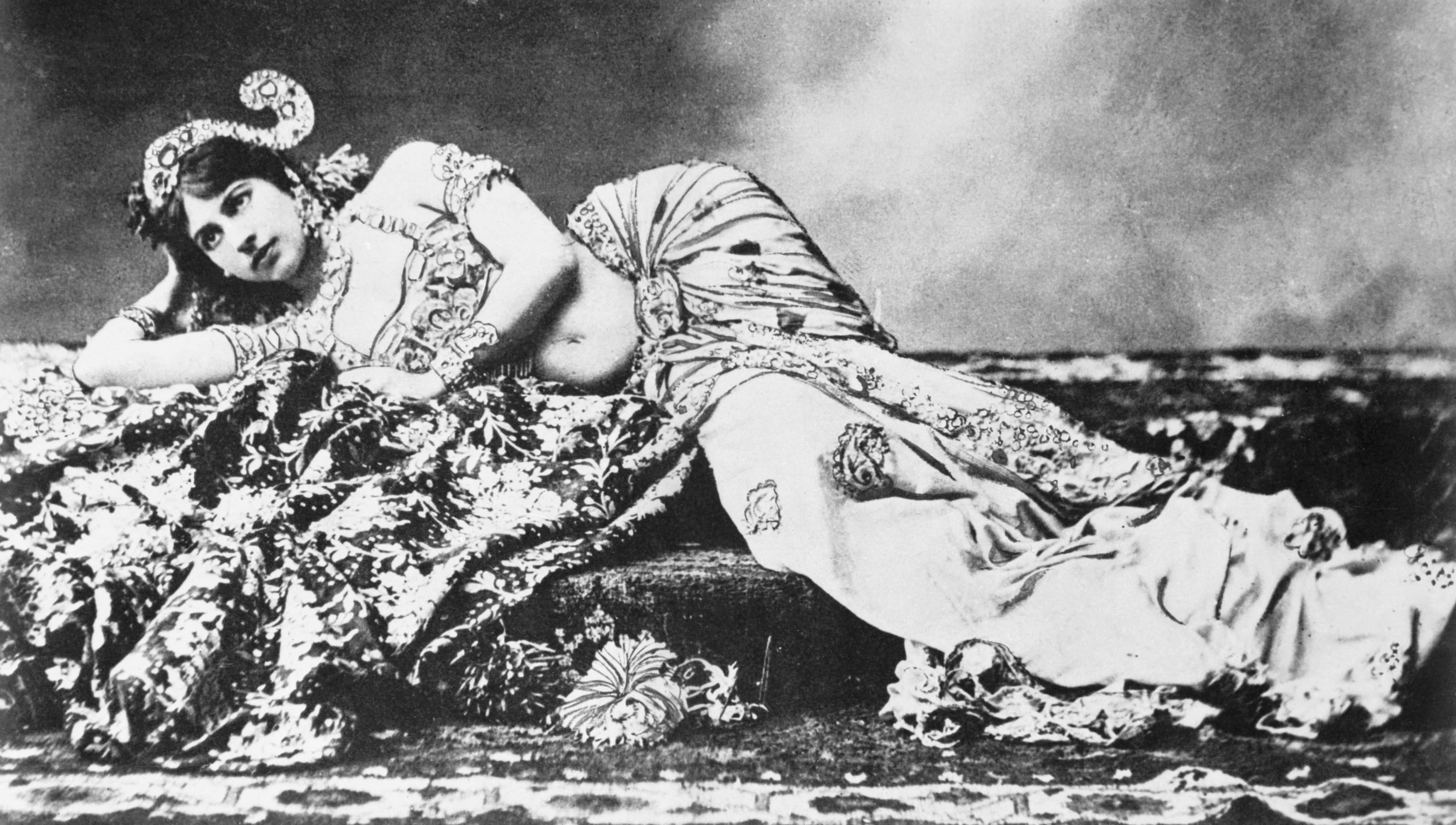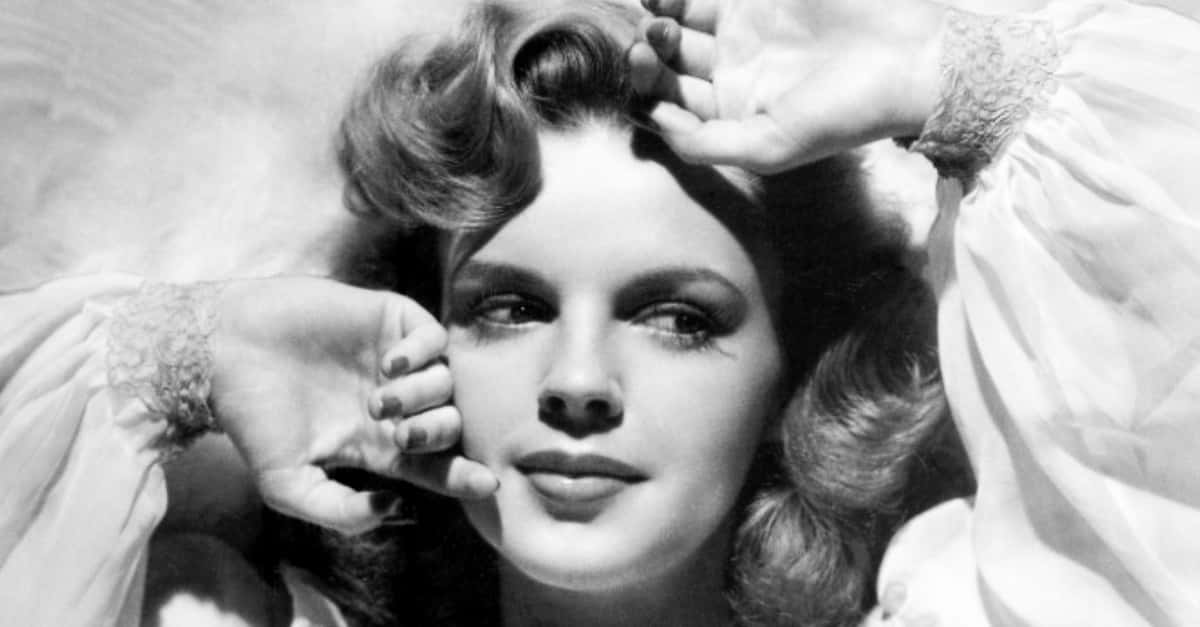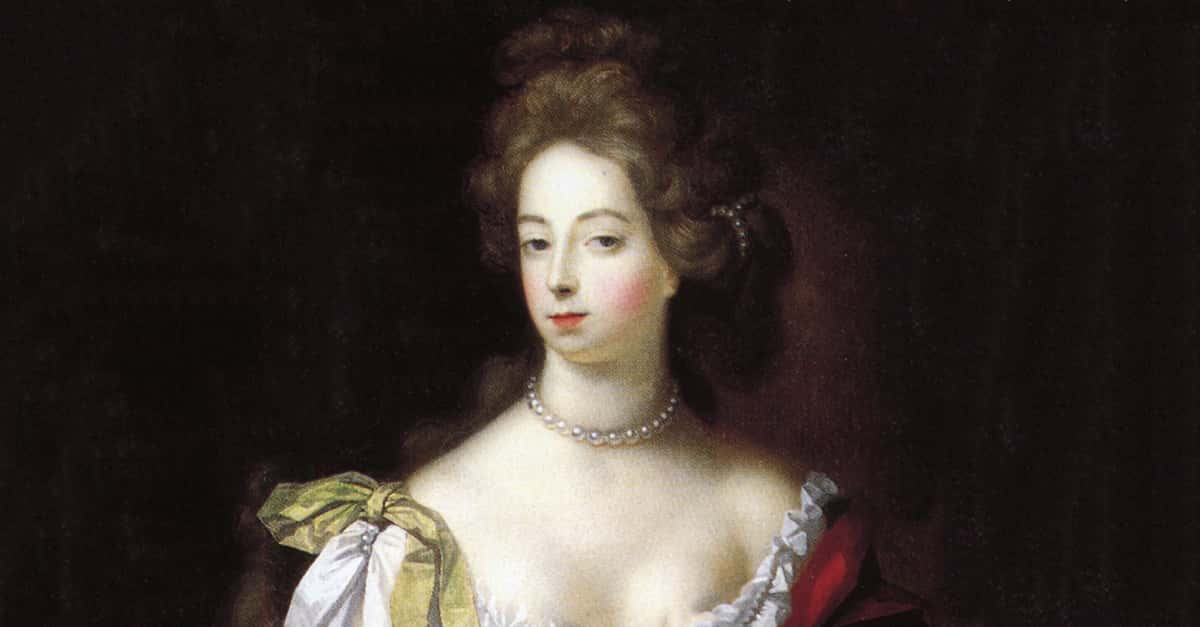History hasn't always been kind to women. Starting in ancient times, girls were carted off into loveless marriages, forced to deal with the manipulations of more powerful men, and thrown to the wolves unless they figured out how to survive in a world that didn't want them. Well, these women have had enough, and they're not going to take it anymore.
These bad girls ignored conventions and grasped power with both hands—whether through rebellion, seduction, or even darker means. And hey, can you blame them?
1. Introducing Ms. Boleyn
Of all of King Henry VIII's queens (and there were quite a lot), his second wife Anne Boleyn is the most infamous. Men thought she was utterly captivating—but not just for her looks alone. She was a lively and charming girl who loved a game of cards and was often the smartest person in the room, even if no one else knew it.
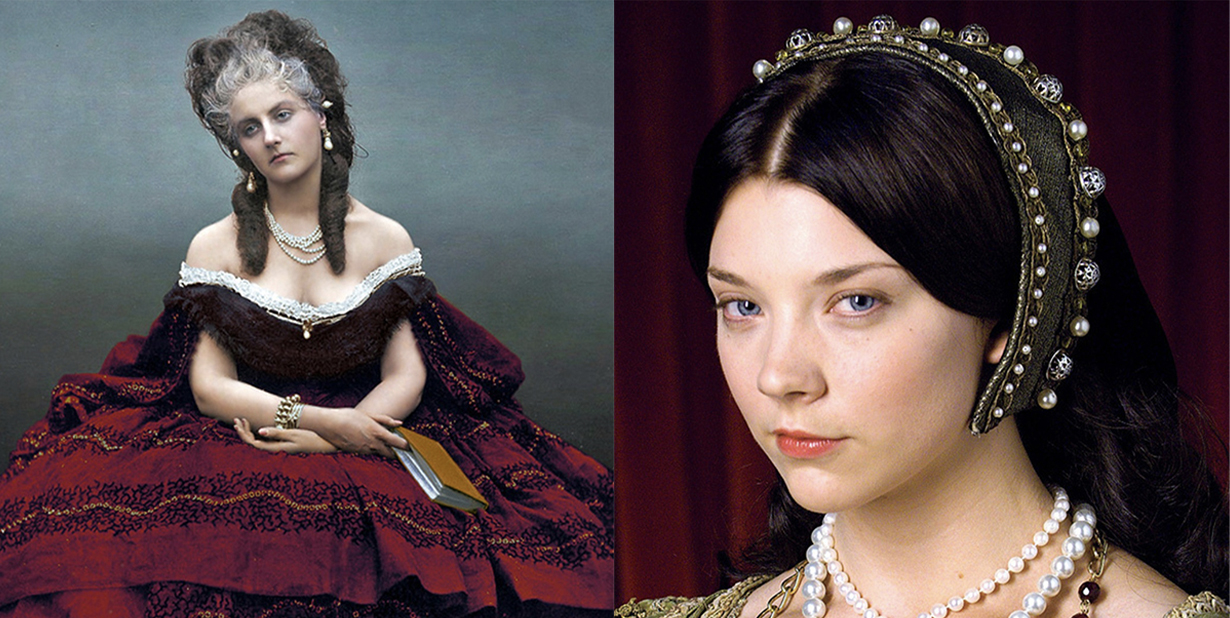
2. He's Got a Type
2. He's Got a Type
King Henry VIII’s interest in Anne Boleyn was controversial, and not just because he was already married. Henry was actually already having an affair with Anne’s older sister, Mary Boleyn—but it gets even worse. There were also rumors that Henry had bedded Anne and Mary's mother, Elizabeth. When accused of this one, Henry protested, "Never with the mother". Sure, Jan.
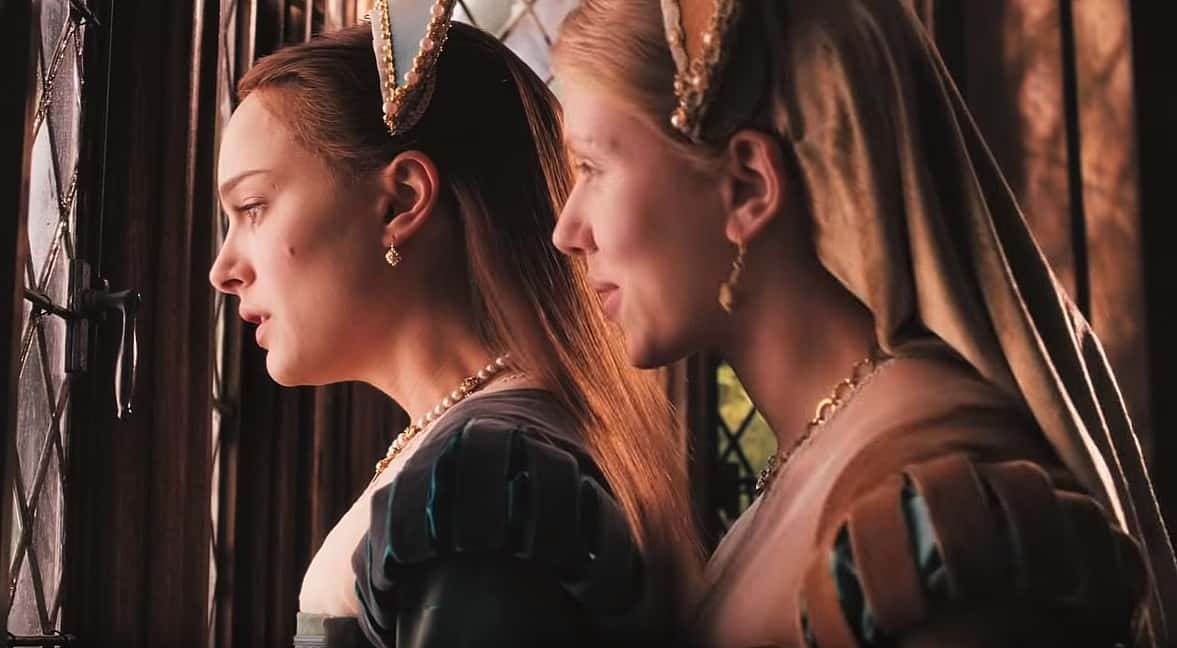 The Other Boleyn Girl, Focus Features
The Other Boleyn Girl, Focus Features
3. Hard to Get
Boleyn wasn't immediately taken with Henry, King of England or not. When he first started wooing her, she refused his advances. When he promised he'd promote her from just a regular old "other woman" and make her his chief mistress instead, she still turned him down. Some say Boleyn was heartbroken over an old love, while others say she had a much loftier title than "mistress" in mind...
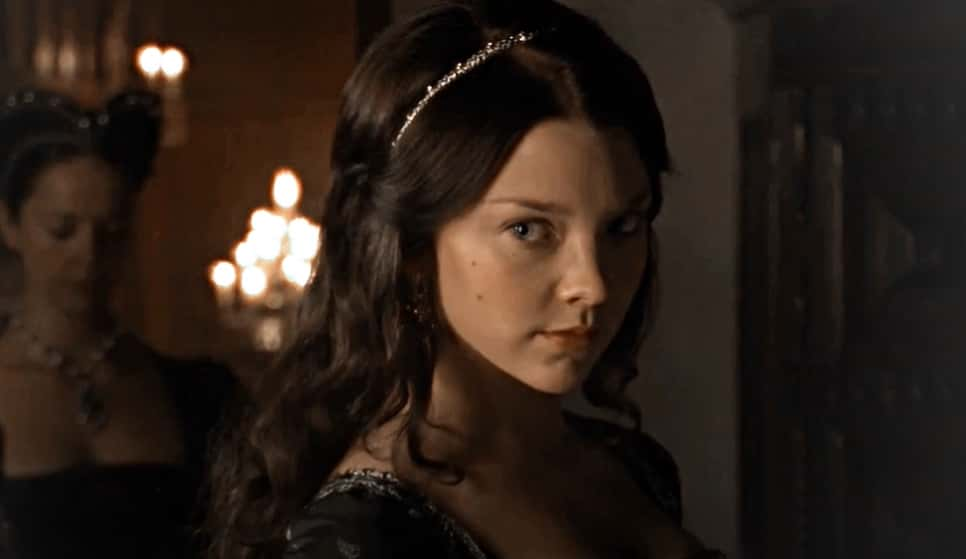 The Tudors (2007–2010), Showtime Networks
The Tudors (2007–2010), Showtime Networks
4. An Indecent Proposal
After nearly a year of trying to seduce Anne to become his mistress, Henry finally gave up and asked her to be his bride. There was just one big problem: his wife, Queen Catherine of Aragon. Henry was (obviously) very unhappy in the royal union, particularly about the fact that he still had no male heirs after decades of marriage.
Even so, both Boleyn and the king assumed the marriage could be easily annulled. Anne, finally won over with dreams of the crown jewels, said yes.
5. The Seven-Year Itch
Of course, we all know now that the annulment from Queen Catherine was not so easy to get, and it caused the lovesick Henry to eventually split from the Catholic Church, install himself as head of the Protestant religion, and marry Anne Boleyn on his own terms. It was seven long years before he could crown her his Queen—all while Anne still stubbornly refused to visit his bed.
6. Tough Cookie
Boleyn had a rather twisted sense of humor. In response to the many vehement protests against King Henry VIII choosing her as his queen, she temporarily took the phrase “Ainsi sera, groigne qui groigne," as her motto, which translates into "Grumble all you like, this is how it’s going to be". Many biographers interpreted this as a little arrogant, but it may have just been her idea of a joke.
7. That's "Queen Anne" to You
In 1533, it finally happened: after many machinations and even more years, Anne Boleyn became Queen Consort of England, ruling beside Henry like she always wanted. Of course, the power couple had already married each other in two private, very confidential ceremonies before Anne Boleyn's extravagant coronation.
8. Secret Ceremony
As Anne Boleyn stood beside King Henry VIII at the altar on her wedding day, resplendent in finery fit for a queen, she hid a dark secret: she was pregnant. She had remained chaste throughout most of their long engagement, but finally gave into Henry's bedroom demands at the very end. Conception was quick on its heels.
9. Mellow Yellow
In January 1536, King Henry and Queen Anne got word that Henry's ex-wife Catherine of Aragon had tragically passed on. Their reaction was so disturbing, it's impossible to forget. The royal couple was overjoyed at the news, and the next day they even dressed up in jubilant yellow clothing, as if celebrating the event.
However, keep in mind that yellow was also the color of mourning in Catherine's native Spain, so there's a slim chance Henry and Anne were merely giving her a respectful homage.
10. Baby Blues
After being crowned queen, a now-pregnant Anne settled into royal life and prepared to give King Henry his long-desired son. All signs pointed to a boy. Almost all the king's astrologers said the stars mapped out a male heir, and Anne and Henry were also confident they were about to welcome a son. It was not. Anne gave birth to a little girl, sending the court into a tailspin.
11. The Virgin Queen
Anne Boleyn's first and only daughter would grow up to be the famous Queen Elizabeth I.
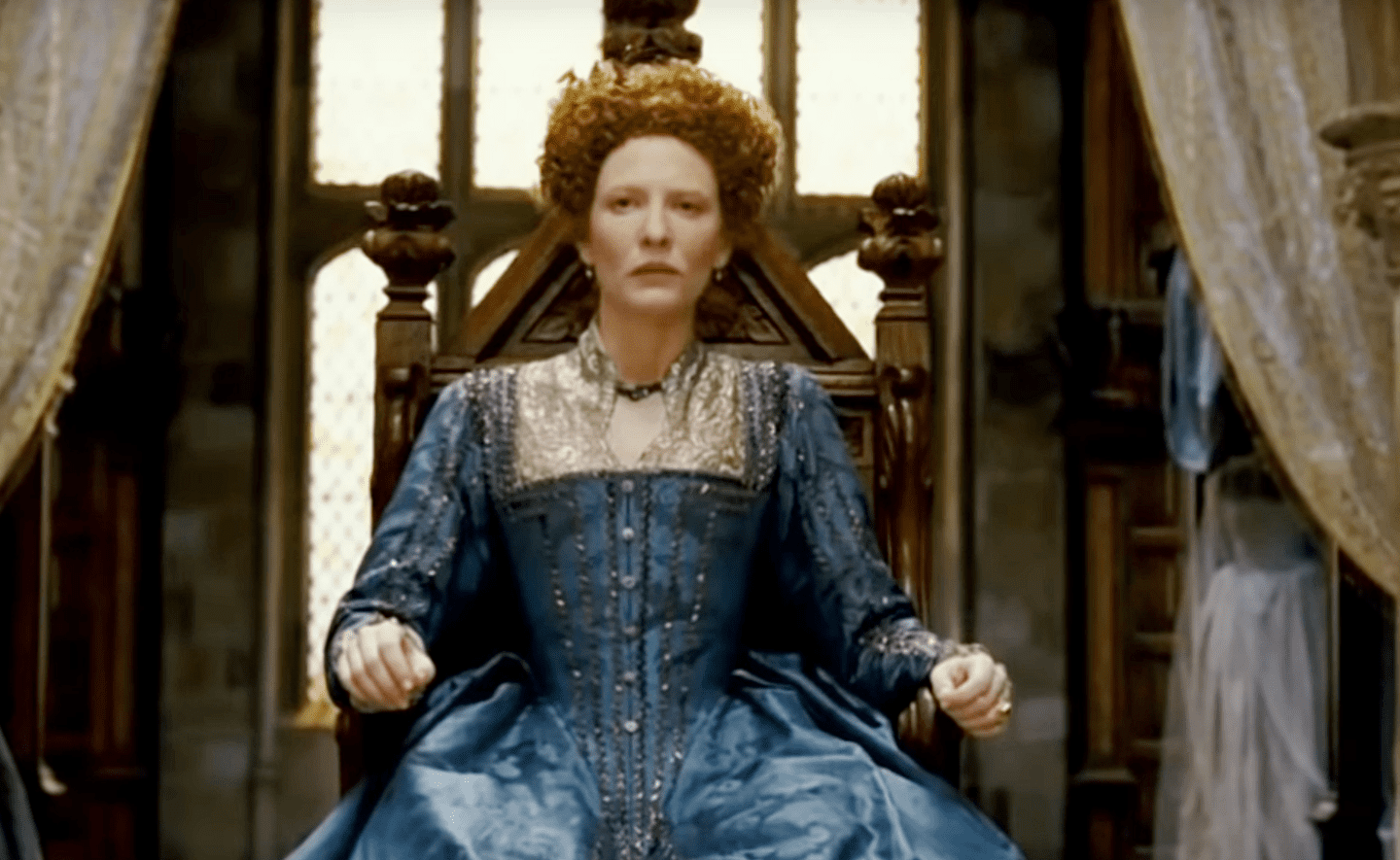 Elizabeth: The Golden Age, Universal Pictures
Elizabeth: The Golden Age, Universal Pictures
12. Contrary Anne
King Henry VIII and Boleyn's relationship was extremely volatile, and some characterized it as “storm followed sunshine, sunshine followed storm".
13. Citizen Jane
King Henry VIII always had a wandering eye, and when his marriage with Anne started fraying after she couldn't provide him a son, he turned his attentions to the pretty, sweet, and comparatively submissive Jane Seymour, who would eventually become his third wife. Just like with Anne's sister Mary, Henry liked keeping it in the family: Seymour was also Boleyn's second cousin.
14. An Open and Shut Case
Despite their family ties, Anne Boleyn and Jane Seymour weren’t exactly close. In one incident, Boleyn discovered that her King Henry had given Seymour his picture to wear around a locket on her neck; Jane had been brazenly opening and shutting the locket right in front of Anne. It's said that once she realized what was going on, Boleyn furiously tore the locket from the chain so violently that she cut her fingers open.
15. End of the Road
In May 1536, Anne's luck finally ran out. King Henry VIII claimed he had been seduced and enchanted into a marriage with Anne, and ordered her locked up in the infamous Tower of London to await her fate.
16. Famous Words
Anne Boleyn's most famous quote was spoken right before she passed on. She reportedly was chatting with a guard about her executioner and, in an attempt to reassure him, said, “I hear he’s quite good. And I have a very small neck!"
17. A Tithe of Troubles
Although she only reigned for five years, Henry VIII's daughter "Bloody Mary" was a busy Queen. As she attempted to reverse Protestant reforms, Mary had over 280 dissenters of the Catholic Church burned at the stake, earning her that truly terrifying nickname.
 thissideofthetruth - WordPress
thissideofthetruth - WordPress
18. Assassin of My Heart
In 1960, the CIA pressured Fidel Castro’s mistress into slaying him. According to the plan, the woman, Marita Lorenzo, would proffer Castro poison pills that she had snuck in her jar of face lotion. Unfortunately, the pills dissolved in the cream—and then things got even worse: Castro got wise to her plot.
Even so, it appeared that Castro was more heartbroken than mad, as he offered Lorenzo his own firearm and told her to finish him off herself. She still loved him and couldn’t do it. They ended on good enough terms for her to visit one last time in 1961. That’s love, folks!
19. All in the Family
You don’t become China’s only ruling empress by playing by the rules. Wu Zetian was the favorite concubine of Emperor Taizong, and she refused to just retire when he passed on. Instead, Wu hooked up with her departed lover’s son, the new Emperor Gaozong, stayed in power, and even claimed China for herself upon his passing.
20. Mount Olympias
In the annals of history, very few women have captured the interest of both historians and artists like Queen Olympias has. And why wouldn’t they be intrigued by her? She was the wife of a king and the mother to Alexander the Great—and that’s just the beginning.
 Alexander (2004), Warner Bros.
Alexander (2004), Warner Bros.
21. The Reptilian Queen
Bizarrely, Olympias was obsessed with snakes. She belonged to a snake-worshipping cult devoted to the god Dionysus, and she reportedly kept snakes in her bed while she slept. The first person to make this claim was the historian Plutarch, but he was writing much later, so it isn’t like he ever walked in on her taking a snooze with her slithery friends.
22. Sounds Like a Bargain
In 357 BC, when Olympias was only 18 years old, she married Philip II of Macedon. Sadly, it was far from a fairy tale love story. Phillip was a powerful ruler, and Olympias' family knew the marriage would serve their political alliances. They weren't really concerned at all with Olympias' personal desires about the matter.
23. Thunderstruck
When Olympias gave birth to the baby who would be Alexander the Great, she had a terrifying premonition. She dreamed that a thunderbolt struck her womb, and a massive fire was created, consuming everything before being suddenly extinguished. From the very beginning, then, Olympias knew that her son was destined for big things.
 Alexander (2004), Warner Bros.
Alexander (2004), Warner Bros.
24. The Family Black Sheep
Though Olympias knew her son was born for the throne, she had to elbow a lot of people out of his way to clear the path. For one, Alexander the Great wasn't his father's eldest son. That special title went to Arrhidaeus, a son with one of his many other wives.
25. Another One Bites the Dust
Olympias knew Arrhidaeus had to go, and some say she came up with a chilling plan. You see, as an adult Arrhidaeus was largely out of the game of thrones because he had a mental disability—but according to the historian Plutarch, Olympias was the one who caused it. She apparently poisoned Arrhidaeus when he was just a boy, leaving him with the deficiency.
26. Mom, Dad, Stop Fighting Please
Philip II and Olympias had an apocalyptically bad relationship as the years went on. Philip II was known for his parties, affairs, and hot-blooded disposition, while Olympias had a reputation for being very jealous and seriously ambitious, which was not considered a good look for a woman at the time.

27. Irreconcilable Differences
The tension between Olympias, Philip, and even their son Alexander came to a head when Philip married his seventh and final wife, Eurydice. She was much younger than Olympias, but there was a much darker problem. She was also a native Macedonian woman and was pregnant with Philip’s new child. This? Was really bad news.
Olympias was convinced that Philip would set her and Alexander aside if the child was a boy, and she quickly found herself estranged from Philip.
28. Real Cut up About This One
A shocking act of brutality put an end to Olympias’ worries. In 336, Philip was overseeing his daughter's wedding ceremony when he made a fatal mistake. He walked into a theater without any armed protection, and suddenly found himself slain. Oops. We're sure his estranged wife Olympias was super torn up when she heard the news.
29. Cold-Blooded
After Philip passed on and before Alexander the Great rose to power, Olympias had to do a lot of work to see her son on the throne. For one, Philip's seventh wife Eurydice and her children still posed a big threat to Alexander's supremacy. Willing to go any lengths for her beloved Alexander, Olympias plotted a brutal revenge.
She had Eurydice's children put to the sword, and the horrific act then caused Eurydice to take her own life. An alternate version of the events claims that Olympias ordered both the queen and her children executed—but is that much better?
 Alexander (2004), Warner Bros.
Alexander (2004), Warner Bros.
30. Goodnight, My Sweet
In 323, Olympias' worst nightmare came true. Her beloved son Alexander the Great met his end, possibly from fever, possibly from foul play, but definitely without leaving any clear heir.
 Alexander (2004), Warner Bros.
Alexander (2004), Warner Bros.
31. Murderess?
There are countless whispers about Olympias, but one rumor is the darkest of all. Some sources claim that she was behind her husband Philip's demise, and even Alexander's mentor Aristotle believed she was responsible. Moreover, Olympias was said to have honored the body of Philip's killer, even after her son had ordered him crucified as punishment.
Historians doubt this possibility—but it's a mystery we will likely never solve.
32. New Challengers
In her later years, Olympias was surrounded by enemies. One of her more formidable foes turned out to be her stepson Arrhdiaeus, the very same man she was rumored to have poisoned and disabled. You see, Arrhdiaeus had married a very ambitious woman named Adea Eurydice, who quickly declared herself Queen of Macedon in Olympias' place.
33. The Tide Turns Again
The upstart queen Adea Eurydice ended up bringing her armies to the door of Olympias and her allies. It did not work out well for her. When the Macedonian troopers realized that they were going to have to fight the mother of their former king, they simply refused to fight. Without missing a beat, Olympias quickly captured the woman along with her husband.
34. This Bed Ain’t Big Enough for the Three of Us
Depending on who you ask, Eva Perón was either the loyal and influential First Lady of Argentina, or an up-jumped mistress and failed actress who meddled in Juan Perón’s political affairs. What is known about her affair with Juan? It began with Eva successfully demanding that he immediately discard his current standing mistress…on the night that he and Eva had just met. Get it, girl.
35. Queen of the Nile
Hollywood just can’t resist putting Cleopatra of Egypt into the box of “femme fatale". As Plutarch’s Julius Caesar biography details, the Egyptian queen snuck herself inside of a carpet to get past Caesar’s guards and subsequently seduced the Roman ruler—an affair that convinced him to promptly drop his plans to take Egypt for himself, instead opting to support her rule.
Cleopatra would go on to have a much more complicated life, but this anecdote did wonders to immortalize her as one of history’s most powerful seducers.
36. Born This Way
Anne Lister has been called “the first modern lesbian". She never apologized for her romantic pursuit of women, nor for her traditionally masculine mode of dress or her aggressive entrepreneurial style. Witty, charming, and confident, she left a trail of broken hearts wherever she went. But that's just the start of her fascinating life...
37. Young Love
When she was 13, Lister was sent to the Manor House School at York. At this tender young age, Lister fell in passionate love with her school roommate, Eliza Raine. The teenage girls were utterly devoted to each other, and even planned to live together once they grew up. Sadly, it was doomed to a heartbreaking end. Officials discovered the relationship and expelled Lister from the school.
38. Cheater, Cheater
Lister was allowed to re-enter Manor House School after two years, but it was too late: her young love Eliza had already left the establishment. Even so, the girls had sworn to love each other forever, and Eliza was sure they would end up together soon enough. Instead, Lister dealt Eliza an absolutely cold-hearted betrayal.
In Eliza’s absence, Lister struck up a series of relationships with other girls in the school. When Eliza found out, she was so devastated that she had to be committed to an asylum.
39. Mutual Acquaintances
As if she hadn't had enough sorrow already, Eliza Raine's heartbroken asylum visit contained a horribly cruel irony. Her family sent her to Clifton Asylum, an establishment run by a man named Dr. Belcombe. This Dr. Belcombe just so happened to be the father of Lister’s latest romantic pursuit, a beautiful girl named Mariana.
40. Regrets
During this time in her life, Lister was becoming confident, handsome, and utterly irresistible to many bright young women. In fact, Lister had been introduced to the lovely Mariana Belcombe by another of her conquests, a beauty named Isabella Norcliffe. Of course Lister later rejected Isabella for Mariana—again with disastrous results.
Forever stung by Anne's cruel rejection, Isabella took to drinking and remained single the rest of her life.
41. The Lady in Black
Lister was a conspicuous figure around Halifax. She usually wore heavy leather boots, constricting bodices, and carefully tailored long coats. As a rule, she dressed in black, which she felt gave her a masculine, angular look.
42. For Love or Money
In 1832, Lister met Ann Walker, a pretty and wealthy heiress. Walker was 12 years Lister’s junior and could be a very impressionable, passive girl, and some say Lister's motives were incredibly dark. At the time, Lister was in dire financial straits but had always been unwilling to marry a man for stability—so she saw long-term relationship potential in Walker, who could support her without trying to dominate her strong will.
43. The Waiting Game
Lister invited Walker to live with her and join in a relationship almost immediately. Walker was reluctant, however. Her parents had recently passed on, as well as a fiancé, and she was worried about how the public would perceive the arrangement. She asked Lister to give her six months to think it over, during which time Lister went traveling in Denmark.
When Lister returned, Walker was waiting for her at her home, with news that she had rejected a marriage proposal from a local gentleman. From that point until Lister’s final moments, Lister and Walker were inseparable. It may not have been a passionate love match from the start, but it was a love story in the end.
44. Going to the Chapel
On Easter Sunday, 1834, Anne Lister and Ann Walker went to Holy Trinity Church in York. There they exchanged rings and took communion. The event is now considered the first lesbian wedding in England. It would be 180 years before gay marriage would be made awfuin the UK, and the Church of England still does not recognize such unions.
45. Third Wheel
Shockingly, though, this was far from Lister's first marriage. Years before her vows with Walker, Lister had previously shared a ceremony with Mariana Belcombe, going so far as to exchange rings as well. It did not end happily: Mariana eventually married a man, voiding the emotional union and crushing Anne—but that was far from the worst part.
Unable to let Mariana go, a heartbroken Lister even accompanied her newly-wedded friend on her honeymoon. Sounds awkward, to say the least.
46. Gentleman Jack
Lister might have been tough and able to take it, but her unconventional style still made her the subject of much ridicule around small-town Halifax. Townsfolk taunted her in the streets, and mockingly called her “Gentleman Jack". One anonymous tormentor even took out a personal ad under Lister’s name, seeking a husband.
47. Dear Diary
While at school, Lister first began keeping a diary, and she recorded the scandalous events of her colorful life in obsessive detail. She initially scrawled the diary on scraps of paper that she found lying around the establishment, but by the end of her life, it had grown to 27 volumes, and comprised more than 4 million words.
 Public Domain Pictures
Public Domain Pictures
48. Tales From the Crypt
Given the potentially ruinous details of Lister’s private life and her sexual orientation in a staunchly conservative England, she devised a code for the more explicit entries in her diary. The code uses elements of Ancient Greek and algebra, and accounts for a good chunk. Lister referred to this code as “crypthand” and believed it to be unbreakable, though her descendant later cracked it.
49. “I Do”…But Did She?
When Lister married Walker, it was a jubilant day—but it might have had a dark side. There is reason to believe that Ann did not recognize the significance of what she and Lister were doing. While the two maintained their relationship until Lister’s passing, and had their wills altered to reflect each other as next of kin, Walker makes no mention in her own diaries of a marriage or similar union.
It may be that Walker could not conceive of such an arrangement in 1834.
50. Trading on up
Anne Bonny’s piracy career began with snitching and adultery. Not fond of her husband’s decision to be a government spy, Bonny began to hang out in pirate bars. She inevitably took a pirate lover, the infamous John “Calico Jack” Rackham, who tried to pay her husband off to let her go. When Bonny’s husband refused, the lovers simply ditched him and went on to raid ships into the sunset.
51. Stealing Hearts
People in 1899 just couldn’t get enough of female stagecoach thief, Pearl Heart. She was even given a pardon from prison, thanks to a sympathetic Arizona governor. Afterward, her life becomes harder to verify, with even her date of passing being a mystery. Perhaps it’s better to leave our bad girls to the imagination.
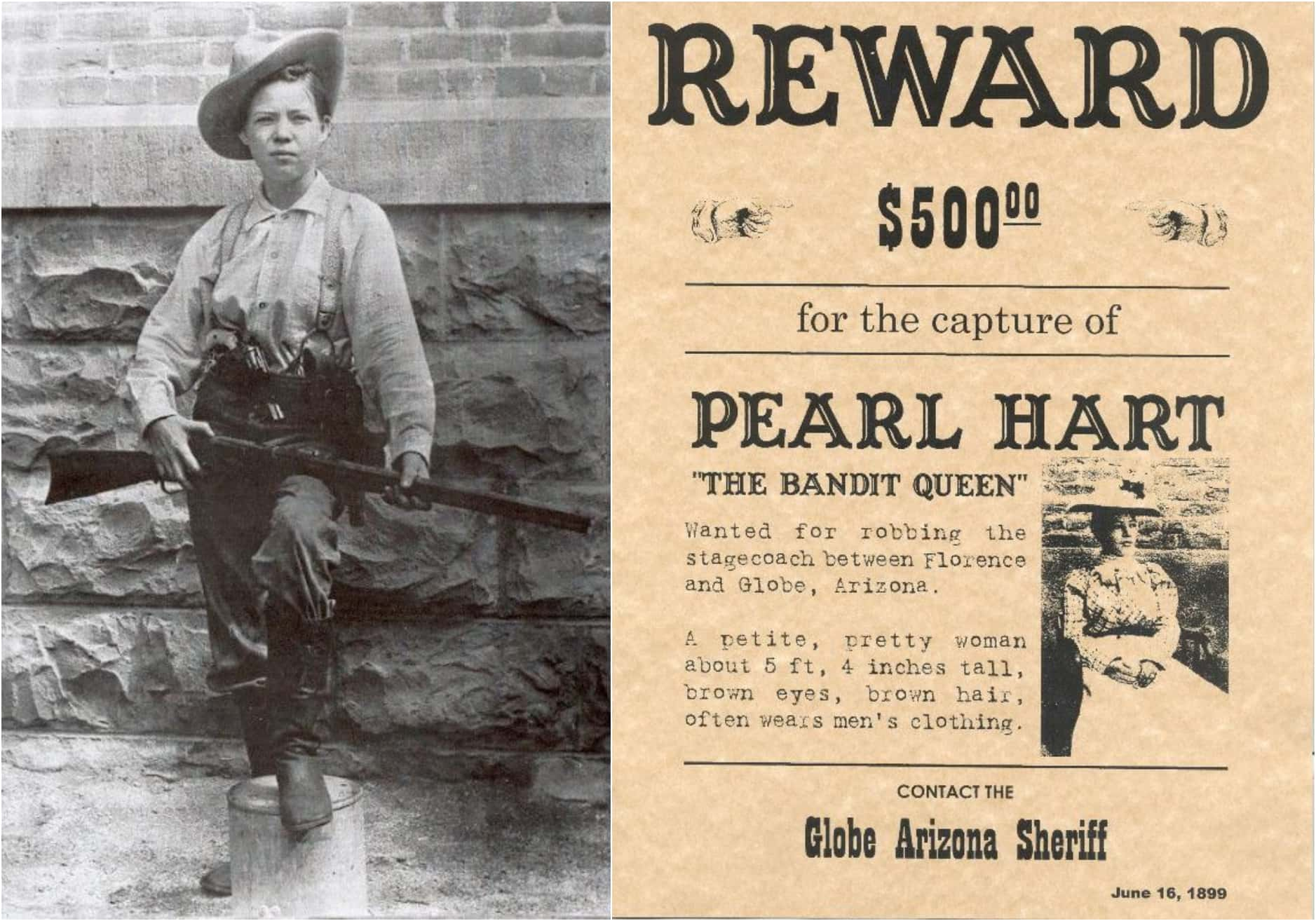
52. Warrior Queen
Boudicca was a Celtic queen who led an uprising against the occupying Roman Empire. After Boudicca's husband passed on, the Romans sensed the power vacuum, took her lands, and assaulted her and her daughters. Not one to sit back and let the Romans walk all over her, Boudicca came up with a ruthless punishment: She went on the attack.
She was eventually defeated in the Battle of Watling Street, but not before causing catastrophic damage to her enemies, slaughtering 80,000 Roman troopers.
53. She’s Kind of Scary
Based on descriptions of Boudicca, she was a pretty terrifying figure. She was described as being of above average height, having a “piercing gaze,” waist-length fire-red hair, a harsh voice, and possessing a “greater intelligence than often belongs to women".
54. Chicken or Egg?
How Boudicca met her end still remains something of a mystery. According to Tacitus, she swallowed poison when she realized that she had no chance of winning the final battle, but Dio suggested that she was just sick. On the other hand, it has also been suggested that if she was sick, it could have been from the poison, so it kind of brings everything full circle.
55. Uncharacteristic Ornament
Celtic warrior chieftains of the time wore a piece of jewelry known as torque around their necks. The necklace was a metal band made with twisted strands of gold and decorative knobs at the throat. The necklace wouldn’t have typically been worn by a woman, but if one historian's description of Boudicca is accurate, she did wear one. It was a pretty major statement of her power.
56. Them’s Fighting Words
Before leading her army to battle, Boudicca reportedly gave a heartbreaking speech. She said: “I’m not fighting for my kingdom and wealth. I am fighting as an ordinary person for my lost freedom...Consider how many of you are fighting—and why. Then you will win this battle, or perish. That is what I, a woman, plan to do! Let the men live in slavery if they will".
57. Lovely Lucrezia
Seductress. Schemer. Poisoner. Such words (and worse) have often described Lucrezia Borgia, one of the scandalous children of Pope Alexander VI. The House of Borgia’s infamy, however, will forever cast a shadow over the truth of Lucrezia as a person. But when we cut through the rumors and myth, the truth is much more complicated.
58. Born to Pray
Lucrezia was born on April 18, 1480, in Rome, when her father was “just” Cardinal Rodrigo Borgia—not yet Pope Alexander VI. Sure, men of the cloth were technically supposed to be celibate. But that hardly stopped the holy Rodrigo from fathering multiple children with Lucrezia’s mother…along with several other women.
59. Face of an Angel, Laugh Like the Devil
Lucrezia Borgia was a great beauty of her day. In her early 20s, a courtier took a totally-not-creepy catalog of the Borgia daughter as a lady “of middle height and graceful of form; her face is rather long, as is her nose, her hair golden, her eyes of no particular color, her mouth is rather large, the teeth brilliantly white, the bust admirably proportioned".
Jeez, how close and long did he look? In any case, the whole package was summarized as, “Her whole being exudes gaiety and humor".
60. Game of Grooms
Lucrezia was 11 years old at the time of her first engagement. She was originally supposed to marry a fairly minor lord, but her family annulled the contract to betroth her to another lord before she was 13. Then, the ascension of Pope Alexander VI necessitated an even grander match for the Pope’s most prominent daughter.
61. Let’s Not Split the Difference
At the age of 13, Lucrezia made her first marriage. The groom was Giovanni Sforza, himself an out-of-wedlock son of Costanzo I Sforza. Not unlike Lucrezia, Giovanni’s base birth was offset by his powerful connections (his uncle was the Duke of Milan), and the couple wed on June 12, 1493. It was definitely not a match made in heaven. Lucrezia’s husband was 14 years older than his child bride.
 The Borgias (2011–2013), Showtime Networks
The Borgias (2011–2013), Showtime Networks
62. Your Loss Is Our Gain
Shocker: The 13-year-old Lucrezia found little in common with her 27-year-old first husband Giovanni Sforza. The unhappy couple would mutually accuse each other of “misconduct” within four years of marriage. Of course, this disharmony was politically convenient to the Borgias, who had lost interest in Sforza's connections and wanted to cut him loose.
 The Borgias (2011–2013), Showtime Networks
The Borgias (2011–2013), Showtime Networks
63. Your Life Is Your Alimony
When the Borgias started to need Giovanni Sforza less, they didn't just grant a divorce; they tried to kill him first. Historians believe that Lucrezia got early wind of her family's plans to literally ax their useless son-in-law. Despite their differences, it was Lucrezia who warned her husband, who then promptly got out of town disguised as a beggar.
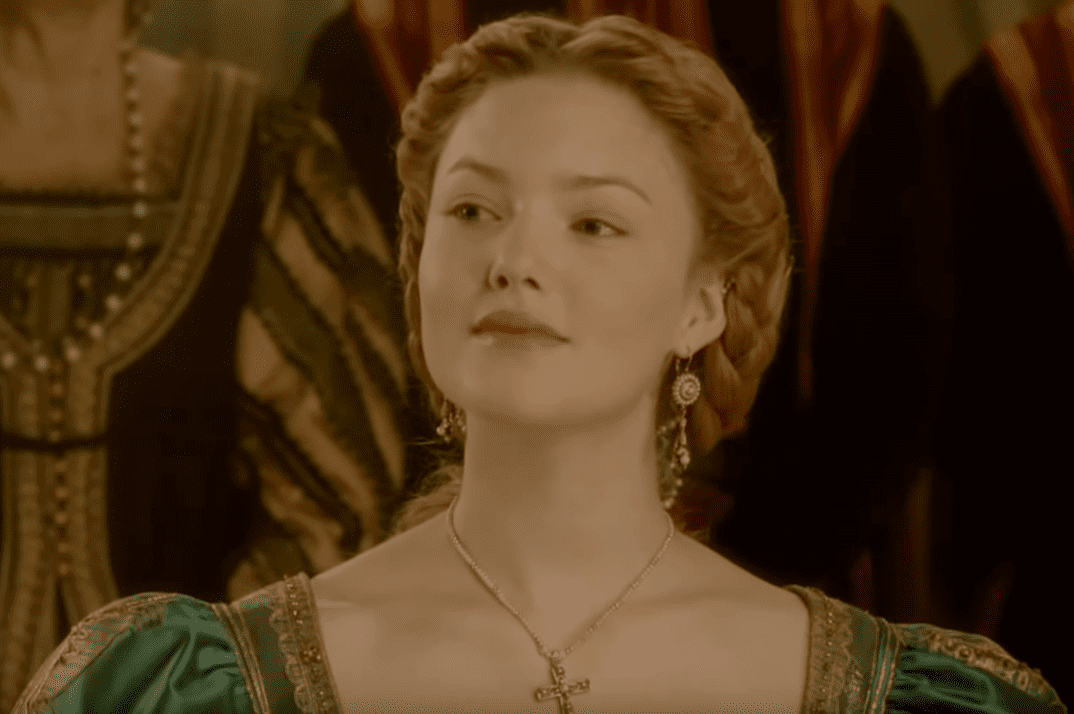 The Borgias (2011–2013), Showtime Networks
The Borgias (2011–2013), Showtime Networks
64. Too Close for Comfort…or Plausibility?
The beginning of Lucrezia’s bad “reputation” began with her annulment from her first husband, Giovanni Sforza. Pope Alexander sought to dissolve his daughter’s now inconvenient marriage on the grounds of non-consummation—much to her husband’s protest. In response, Giovanni made an incredibly disturbing accusation.
He accused Lucrezia of sleeping with her brother, Cesare. Though the marriage was eventually annulled with none of the sordid accusations validated, the damage was done. Lucrezia and Cesare’s relationship would now forever be suspect.
 The Borgias (2011–2013), Showtime Networks
The Borgias (2011–2013), Showtime Networks
65. The Second Husbands Club
With Giovanni Sforza behind her, Lucrezia was single and ready to mingle. Her family quickly married her off to Duke Alfonso of Aragon in 1498, even as the ink was still drying on her annulment. As it turned out, this second marriage was even shorter than her union with Sforza—and ten times more violent and tragic.
66. Quicker Than a Divorce
In July 1500, just as Alfonso's use to the Borgia family was also waning, a horrific and unforgivable offense took place. On the top steps of St. Peter's Basilica in Vatican City, hired killers attacked Alfonso and stabbed him multiple times. Miraculously, he survived the initial ambush—but the worst was yet to come.
As he was recovering a few days later, another group of armed men burst into his room and fatally strangled the invalid.
67. My Brother, My Widowmaker, My Lover?
According to lore, Lucrezia had her eldest brother to blame for her widowhood. People often cite Cesare Borgia as the killer of Alfonso of Aragon, and he possibly orchestrated both attacks on the man. Some even said that Cesare once came up to Alfonso after the failed first attack and whispered threateningly, "What didn’t happen at lunch could still happen at dinner".
All this didn’t help those rumors of an inappropriate relationship, which still burn hot centuries later.
 The Borgias (2011–2013), Showtime Networks
The Borgias (2011–2013), Showtime Networks
68. Daddy Not-So-Dearest
Rumors of an inappropriate relationship between Lucrezia and her brother Cesare are the most notorious allegations made against her…but they get even worse. Lucrezia’s first husband Giovanni Sforza also accused Pope Alexander VI himself of improper relations with Lucrezia, saying he initiated the annulment proceedings “to have the freedom to enjoy himself with his own daughter".
Obviously, Giovanni Sforza was biased. Still gross, dude.
69. A Most Sexy Medical History
Lucrezia was quite the bad girl in her third marriage to Alfonso d'Este. Historians speculate that she enjoyed an extramarital affair with her own brother-in-law, Francesco II Gonzaga, Marquess of Mantua. The "bro-mance" probably began in 1503, and some think it continued until Gonzaga caught syphilis, though this is speculation.
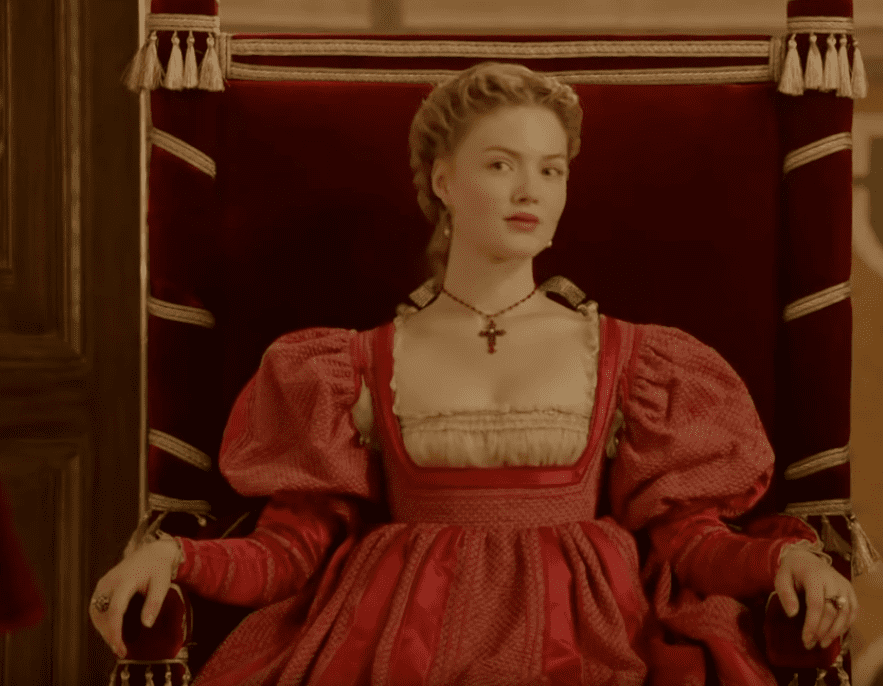 The Borgias (2011–2013), Showtime Networks
The Borgias (2011–2013), Showtime Networks
70. Eyes on Your Own “Work”
Lucrezia made great attempts to befriend her third husband’s sister, Isabella d’Este. The two ladies had a lot in common as intellectual patronesses of the Renaissance. Alas, this friendship was not to be, as Isabella coldly snubbed Lucrezia’s overtures, feeling that she was her rival. Lucrezia responded with a ruthless betrayal. She slept with Isabella's husband, naturally.
71. This Theory Is Truly Nuts
To this day, the popular image of Lucrezia Borgia is as a femme fatale who is complicit in her male relatives’ corruption. The worst story of all is the legendary "Banquet of the Chestnuts". The banquet was a raunchy bacchanal hosted by her brother (ew) for their pope father (double ew). According to lore, this banquet involved about 50 courtesans, who were stripped and made to pick up chestnuts off the floor.
Prizes were given to those who could “perform” with as many partners as possible in this cornucopia of decadence, all while the Borgias looked on. Lucrezia’s presence, and even the event itself, is heavily disputed.
 The Borgias (2011–2013), Showtime Networks
The Borgias (2011–2013), Showtime Networks
72. Rags to Riches
Nell Gwyn is a risque Cinderella story. As the most famous mistress of King Charles II of England, she was born to abject poverty, yet somehow perished in wealth and popularity as the icon of the English Restoration. These days, Gwyn is also remembered for her legendary insults, and her status as one of England’s first professional stage actresses.
73. It’s Not Size That Matters
In terms of appearance, Nelly had chestnut hair, hazel eyes, and a heart-shaped face. In contrast to the buxom bodies favored by Restoration beauty standards, however, Gwyn was petite, albeit “shapely". What matters is that her future lover King Charles II had very few complaints about the beautiful, seductive woman…
74. Salary Negotiations Are Tough in Any Century
Gwyn’s greed almost got in the way of her meeting Charles II. By late 1667, the Duke of Buckingham was seeking a mistress—but not for himself. The lord intended to remove the politically inconvenient Barbara Palmer from the King’s favor by arranging a rival in the royal bed. Nell’s talents put her in the running, but she made a grave mistake.
Her demands to be paid £500 a year were just too steep, so Buckingham went with Moll Davis—who was also Gwyn’s rival in acting. Ooh, I smell a scandal.
75. You Can Never
Gwyn affectionately referred to Charles II as her sweet “Charles the Third". This “pet name” referred to her bedroom history: she had previously been a kept woman to both a Charles Hart and then a Charles Sackville.
76. Queen of Finding Your Insecurities
Gwyn liked to stab where it hurt. She referred to her rival and co-mistress, Louise de Kerouaille, as “Squintabella” (in reference to her looks) and “Weeping Willow" (in reference to her proclivity to cry).
77. An “Honest” Mistake
According to lore, Gwyn used her signature wit to defend herself from an anti-Catholic mob in 1681. While she was passing through Oxford, a crowd besieged Gwyn, mistaking the actress for her Catholic rival in the king’s bed, Louise de Kerouaille. Gwyn, smiling pleasantly all the while, gave an absolutely legendary reply.
She assured the mob from her coach window that, “Good people, you are mistaken; I am the Protestant wh*re!”
78. Baby Steps Towards Peerage
On December 21, 1676, Nell Gwyn’s son Charles finally got a title befitting his status as a king’s (illegitimate) son. How Charles became the Earl of Burford is attached to two unseemly stories. The most popular? One day, her lover King Charles II came to visit Gwyn and his son, when she called over their offspring with a “Come here, you little b*stard, and say hello to your father".
Aghast at her conduct, the King received this explanation from Gwyn: "Your Majesty has given me no other name by which to call him". And thus, Charles gave his son a proper title: the Earl of Buford.
79. No Time to Brainstorm When Skulls Are at Stake
The second story of how Gwyn secured a noble title for her son is even more chilling. In this tale, she holds the baby Charles out a window and threatens to drop him unless King Charles elevates their son to the peerage. Instinctually, King Charles cried, “God save the Earl of Buford!” and I guess they went with that.
80. For Your Eyes Only
Charles II owned shirtless paintings of Nell that he kept hidden behind landscapes. Portrait of Nell Gwyn as Venus by Peter Lely has the actress in the buff as the iconic goddess. However, Charles only swung the cover to let the most favored eyes have a glance.
81. The Cold Hard Truth
Mata Hari is one of history's ultimate femme fatales. Her seductive, hypnotic dancing was legendary—but it was her dark demise that made her infamous. Hari also knew full well how to manipulate people. As she once said, "I had long since lost any illusion of being loved for who I was and now accepted, with clean conscience, flowers, flattery, and money".
82. By Any Other Name
For a long time, it was claimed that Hari had been of Javanese or Indonesian descent, which only added to her "exotic" mystique. The truth is much different. Despite her foreign-sounding name, Mata Hari was actually Dutch. Her real name was Margaretha Geertruida MacLeod, though she went by "Margreet".
83. What’s in a Name?
The name "Mata Hari" means "sun" in the Malay language. She gave herself this stage name when she joined a dance company while living in Indonesia.
84. What a Woman!
Hari made her dancing debut in March 1905 and became an overnight success—but things weren't always as they seemed. She fed viewers the lie that she was a part-Asian princess, and they ate it up hook, line, and sinker. Putting on a seductive, playful persona who cheerfully paraded her body for risqué photographs, Hari took audiences by storm.
Soon enough, she was trickling information about her high-powered clientele to French intelligence for WWI.
85. Trouble in Paradise
When Mata Hari was 18 years old, she read Rudolf MacLeod's advertisement in the newspaper seeking a wife. She responded, and they married in 1895—but, as you might have guessed from the whole "newspaper ad" part, it was doomed from the start. Turns out, MacLeod was a raging, violent alcoholic. Even worse, he openly kept a concubine.
 Youtube
Youtube
86. Rubies and Pearls
Hari was self-conscious about her small bust, especially given her scantily-clad line of work. She even refused to be seen in public without a bra, including in her raciest pictures and dance routines. Of course, she made darn sure that these bras were absolutely bedazzled with jewels. Gotta give the audience something to look at, right?
87. The Jig Is up
Hari soon gained fame in Europe as a dancer and courtesan, but she was hiding a dark secret. She was doing espionage for both the French and the Germans. Though no one's sure of her exact motives, greed or otherwise, it was bound to catch up with her. On February 13, 1917, authorities apprehended her and threw her into prison.
88. Accident or Antagonistic?
At this point, most historians believe it was the Germans who intentionally revealed Hari as a double agent. Reportedly, they were disappointed that she hadn't given them information they could use. Her intel on the French supposedly consisted of nothing but gossip on the bedroom lives of politicians and generals—which hey, is what I would have done.
In frustration, they purposefully exposed her double espionage to the French as the most aggressive and hateful “You’re fired” in human history.
89. Blood on Your Hands
At her trial, Hari was accused of double espionage resulting in the deaths of no fewer than 50,000 troopers. For her part, the most famous phrase attributed to Hari during her trial was the response, “A harlot? Yes, but a traitor, never!” Sadly, that defense didn’t save her from being sentenced to die...
90. Pompadour and Circumstance
Madame de Pompadour proved to be deeply influential and beloved in her time. She not only shared the bed of the king but also shared his power, to the benefit of many. In fact, many consider her to be one of the most powerful mistresses in history. Her full, real name was the much more mundane "Jeanne Antoinette Poisson".
91. Diamonds Are Forever
Peculiarly, there is a long-standing rumor that King Louis XV commissioned the “marquise cut” diamond to be shaped like Pompadour’s mouth. This diamond cut is also known as the “navette".
92. Look Over Here!
Pompadour first tried to get the attention of King Louis XV when he was on a hunting expedition in 1744. The hunt was held nearby her own estate, and so she was allowed to follow the king’s entourage from a distance. However, she wasn’t content with that arrangement, so she purposefully rode in the king’s path several times.
To make doubly sure he couldn’t miss her, she was wearing a different-colored outfit each time she rode past him. Subtle!
93. Second Meet-Cute
Pompadour was given her first formal invitation to the Palace of Versailles when a masked ball was held on February 25, 1745. The ball was held to celebrate the wedding of the Dauphin Louis de France to Maria Teresa of Spain. Louis outdid everyone else by dressing up as a yew tree, but Pompadour's costume was scandalous.
Pompadour attended while dressed as Diana, who was the Roman goddess of the hunt, a fitting reference to how she’d first met the king. We can assume that Louis appreciated that reference, because he chose that ball to unmask himself to her and publicly declare his affection for Pompadour. It was a milestone for their relationship.
94. What a Handful
One long-standing legend is that the shape of the French champagne glass, also known as the coupe, was originally modeled after the size and shape of Madame de Pompadour’s bosoms.
95. From Lover to Friend
While on the outside their relationship was happy and healthy, modern historians now know that Madame de Pompadour and King Louis hid a dark secret behind bedroom doors. From 1750 onwards, Pompadour ceased being an intimate partner to Louis XV. They no longer actually made love, in part because of her very poor health.
Over the years as Louis XV’s mistress, she suffered three miscarriages, and also “suffered the after-effects of whooping cough, recurring colds and bronchitis, spitting blood…as well as an unconfirmed case of leucorrhoea". However, her bond to Louis did not dim, as she served as a “friend of the King,” maintaining her influence at court.
96. I Love Myself
Virginia Oldoini—known better to history as the Countess of Castiglione—might be the original Queen of the Selfie. The Italian aristocrat’s legendary beauty and photographic adventures led to her reputation as history’s first modern fashion model. Of course, she didn’t get by on looks alone.
97. Sow Your Wild Oats
Virginia Oldoini earned her famous name and title through marriage. At the age of 17, she was wed to Count Francesco Verasis di Castiglione, who was 12 years older. They only had one child, a son named Giorgio. Right before her arranged marriage to this older man, Oldoini embarked on an affair with a naval officer, which suggests she desired things beyond domestic bliss from the beginning.
98. Belle of the Ball
Oldoini followed her husband to the court of King Victor Emmanuel II of Sardinia-Piedmont (today we just call it “Italy”). The Countess quickly outshined her hubby, winning ministers and courtiers alike over with her charm. In fact, she was known to the court as “la divina contessa".
99. CIA: Cute Intelligence Agency
Oldoini’s true career, however, was much more disturbing. Her first gig wasn’t for modeling or court entertainment: It was for espionage. It all began when she was “discovered” by her cousin, Count di Cavour. Cavour saw the value of Oldoini’s charms and singled her out as the perfect candidate to deploy to the Parisian court of Napoleon III.
100. Lie Back and Think of Italy
In 1855, the Countess of Castiglione was tasked with pushing the cause of Italian unity onto Emperor Napoleon III of France—even if it meant pushing other parts too. Her cousin reportedly told her, “succeed by any means you wish—but succeed!” If that’s not a state-sanctioned licence to commit adultery, I don’t want to know what is.
101. I’m Keeping the Title
Oldoini’s husband did not take well to his wife becoming a spy and seducing the French emperor, and his reaction was extreme. Their very public affair led him to demand a marital separation. Nevertheless, she would address herself as the “Countess” for the rest of her days…
102. The Original Influencer
Oldoini’s modeling career began when she was still royal mistress at Napoleon’s court. Starting in 1856, she sat for court photographers Mayer and Pierson. Her relationship with Pierre-Louis Pierson would go on for four decades, and produced over 700 photographs.
103. One of the Boys
Despite her own feminine charm, the Countess of Castiglione was not fond of the ladies. At those French court gatherings, she often refused to even speak to other women. Maybe the OG beauty queen didn’t like competition…or she only had time to deal with the country’s most powerful. In 19th-century Europe, this often translated to “men only". Sorry, girls.
104. If I Can’t See Me, You Can’t Either
Oldoini did not cope well with aging, and she took it much too far. Unwilling to confront her fading looks, she spent her final years in black-colored rooms with closed blinds and no mirrors. Not even she was entitled look at the waning beauty of the Countess of Castiglione.
 Shutterstock
Shutterstock
105. The Prodigal Son Doesn’t Return
The Countess of Castiglione’s self-seclusion might have been rooted in more than vanity. In 1879, her beloved and only son Giorgio passed on from smallpox, predeceasing his mother by 20 years. Suddenly, her regime of funeral black rooms, veils, and never leaving the house makes tragic sense…
106. Curse of the Black Pearl
Cora Pearl was an English courtesan who was renowned for her affairs with multiple members of the 19th-century French royal family, her decadent spending, and, most of all, her malice. Pearl openly referred to her men as her “chain of gold,” i.e. interchangeable and enriched stepping stones on her way to fortune.
As if to publicly mock her “dark” reputation, Pearl often wore a famous necklace of black pearls that became her calling card.
107. Horsing Around
Catherine the Great is one of history's infamous women, and she did not take orders kindly. Though she became Empress of Russia through her marriage to Peter III, Catherine spent much of her early married life not with her husband, but rather riding her horse. She also refused to ride side-saddle, and wrote “The more violent the exercise, the more I enjoyed it".
108. Lofty Ambitions
Unsurprisingly, Peter was a pretty bad ruler, and he was unseated in favor of his son Paul, with Catherine installed as Regent. However, Catherine wasn't ready to fade into the background. Instead, she came up with an ingenious plot. She gathered support and declared herself Catherine II, the sole ruler of Russia—and she didn't stop there.
109. Foul Play?
Catherine then had Peter apprehended, and forced him to fully abdicate his position as Emperor. But that was just the beginning of his nightmare. A few days after abdicating, Peter was slain by one of Catherine's co-conspirators. The exact role she played in his demise has never been proven, but it’s quite possible that she arranged it.
110. Pays to Be Her Lover
Catherine was extremely generous toward her lovers. She would gift them with titles, lands, palaces, and even people, once giving a lover 1,000 serfs. But it came with a chilling price. According to records, there was an intimacy test. Before being welcomed into Catherine's bed, prospective suitors had to first satisfy Catherine's lady-in-waiting, Countess Praskovya Aleksandrovna Bruce.
111. A Good End
Gossip had a tendency to follow Catherine wherever she went, and it continued to follow her even after her passing. Her enemies at court spread rumors about her demise, with some claiming she’d perished on the toilet, and others that she’d met her end while doing the dirty with a horse. None of those were true: she passed on in her bed the day after suffering a stroke, at the age of 67.
112. Passing the Buck
Giulia Beneni was an Italian courtesan who was so powerful, she once told a colonel that she would only lay with him if he got undressed first…right in front of her house, atop a horse, and leading his own troopers. Naturally, the colonel did exactly that.
113. Not Just Your Little Sister
Caligula might have been one of the most fearsome Roman emperors, but he had nothing on his baby sister Agrippina. Notorious even during her own time, no one would dare call this sibling, spouse, and mother of emperors a mere housewife. From her poison-happy plots to a demise that gives new meaning to the word “overkill,” Agrippina's life was never dull.
114. Power Couple
During the first part of her son Nero’s reign, Agrippina claimed equal power. She was even depicted on coinage alongside her child, leading some historians to claim her as the first true—if unofficial—Empress of Rome.
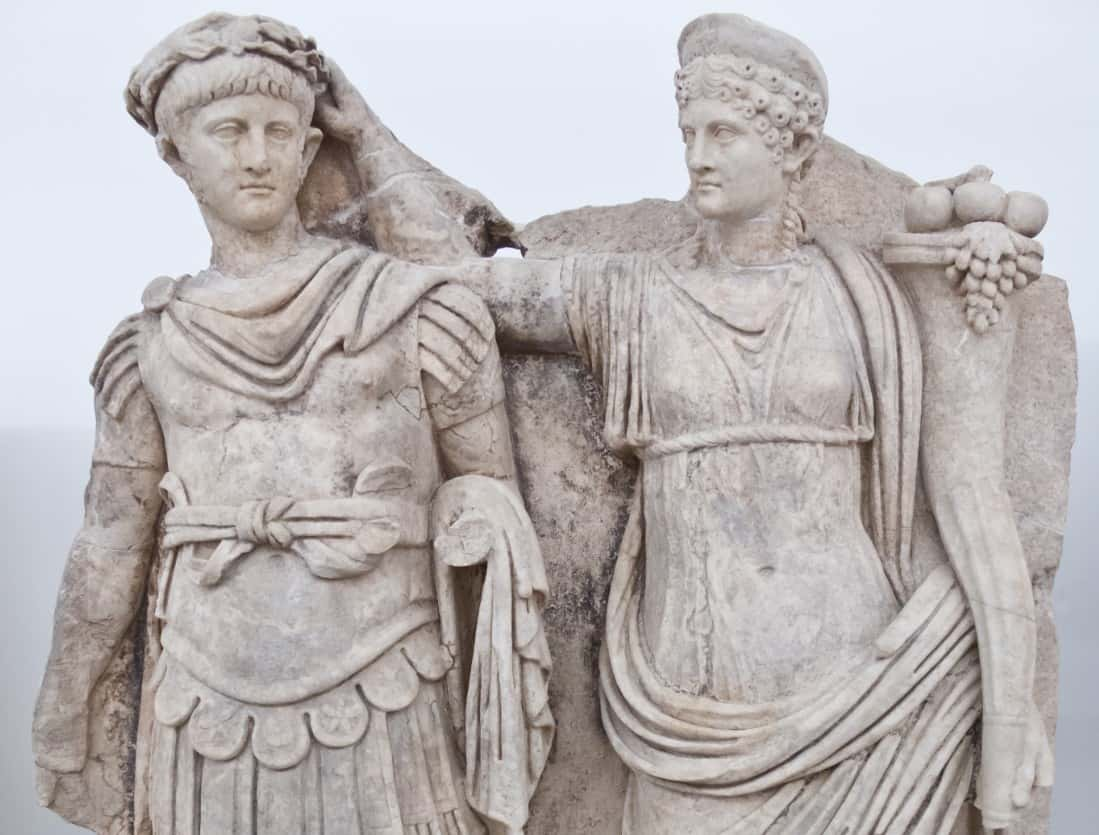 Wikimedia Commons, Carlos Delgado
Wikimedia Commons, Carlos Delgado
115. An Indecent Proposal
When Agrippina was just 13 years old, her uncle Tiberius married her off to Gnaeus Domitius, a man with very powerful connections and even deeper coffers. Unfortunately, might and money were about all Domitius had to recommend him. To many who knew him, the child bride’s new husband was “despicable and dishonest".
116. Paying the Price
When Nero was just a boy, the historian Tacitus claims Agrippina went to an astrologer to plan out her son’s glorious future. When the seer gasped and told her that Nero would indeed become an emperor, but also kill her, Agrippina's response was ruthless. All the matriarch replied was, "Let him kill me, provided he becomes emperor".
117. Forbidden Love
In 48 AD, Agrippina was single and snagged herself the Emperor Claudius as a husband. The only problem? He just so happened to be her uncle, and the Romans were horrified at the union. For a society that lusted for the blood of gladiators and executed empresses on the regular, Romans had a kind of fussy taboo about interbreeding.
118. Momager Goals
50 AD was a good year for Agrippina. That year, she finally convinced Claudius to adopt Nero has his own son and secure him as his successor. This was a pretty big feat, but it’s even bigger when you consider that Claudius already had a biological son, Britannicus, who was still very much alive and begging for the throne.
119. Don’t Cross Me
Agrippina’s time as Empress was marked by rampant paranoia and abuses of power. She eliminated enemy after enemy with political scheming, bedroom plots, and straight-up murder. No one was safe: when Brittanicus’ rather harmless tutor complained that she was pushing his student out of royal contention, she had him executed too.
120. Till Death Do Us Part
Agrippina always had good follow-through. When it started to look like Claudius regretted making Nero his successor—maybe after watching all his subjects die around him—Agrippina set off her end game. On October 13, 54, it’s said that Claudius met his end after eating a plate of poisoned mushrooms. Many sources point the finger at trigger-happy Agrippina.
Other sources claim that Agrippina killed Claudius with a poisoned enema, which is one memorable way to say goodbye.
121. Give and Take
After Claudius passed on and Nero became emperor, the new Agrippina-Nero alliance didn’t last long. It all changed when Nero got with his new girlfriend Claudia Acte, who Agrippina despised. Needless to say, a disapproving Agrippina wasn’t like other disappointed moms. Instead of just giving Nero the silent treatment or cutting off his allowance, she vindictively started campaigning for Britannicus to overthrow him.
122. She’s Gotta Go
In 59 AD, things between Nero and Agrippina reached a boiling point. Though sources differ on his exact motives and movements, Nero decided he had to kill his mother to get some peace in his life. What followed was something so excessively violent, it’s hard to say whether it belongs in a Looney Tunes sketch or a Quentin Tarantino film.
123. The Unsinkable Agrippina
According to the historian Suetonius, Nero tried and failed several times to kill his mother, each time trying to up the ante and still finding her frustratingly alive. First, he tried to poison her on several occasions, but she always took an antidote each time. Then, he constructed a machine that would collapse her bedroom ceiling on her while she slept, but she caught wind of the plot and escaped.
Finally, he—seriously—invented a collapsible boat that would drown her while she was on a pleasure cruise. Reader, SHE STILL SURVIVED.
124. The End of an Empress
At last, in March of 59, Nero succeeded in his attempts when he had a team of assassins stab her and make it look like she took her own life. Once Nero was sure of Agrippina’s demise, he went over to her lifeless body and uttered a horrific response. Apparently, he examined the body and coldly discussed his recently deceased mother's good points (mostly indestructible) and bad points (a tad controlling).
Disturbingly, it’s said he also commented on how beautiful she looked.
125. Fruit of the Womb
We’re told that when Agrippina's assassins arrived, she had some utterly spiteful last words. She sneered, "Smite my womb". That's right, she commanded them to stab her in her womb because it had borne her such an awful son. Um, Show me the lie?
 Shutterstock
Shutterstock
126. Don't Mess With a Medici
A member of the infamous Medici clan, Catherine de Medici became a Queen of France in her own right. While it's wrong to cast her as just a Machiavellian matriarch, it’s equally wrong to paint her as a passive pawn. Scandal followed her around, and it’s clear she took an active role to survive and thrive in the deadly courts of Renaissance Europe.
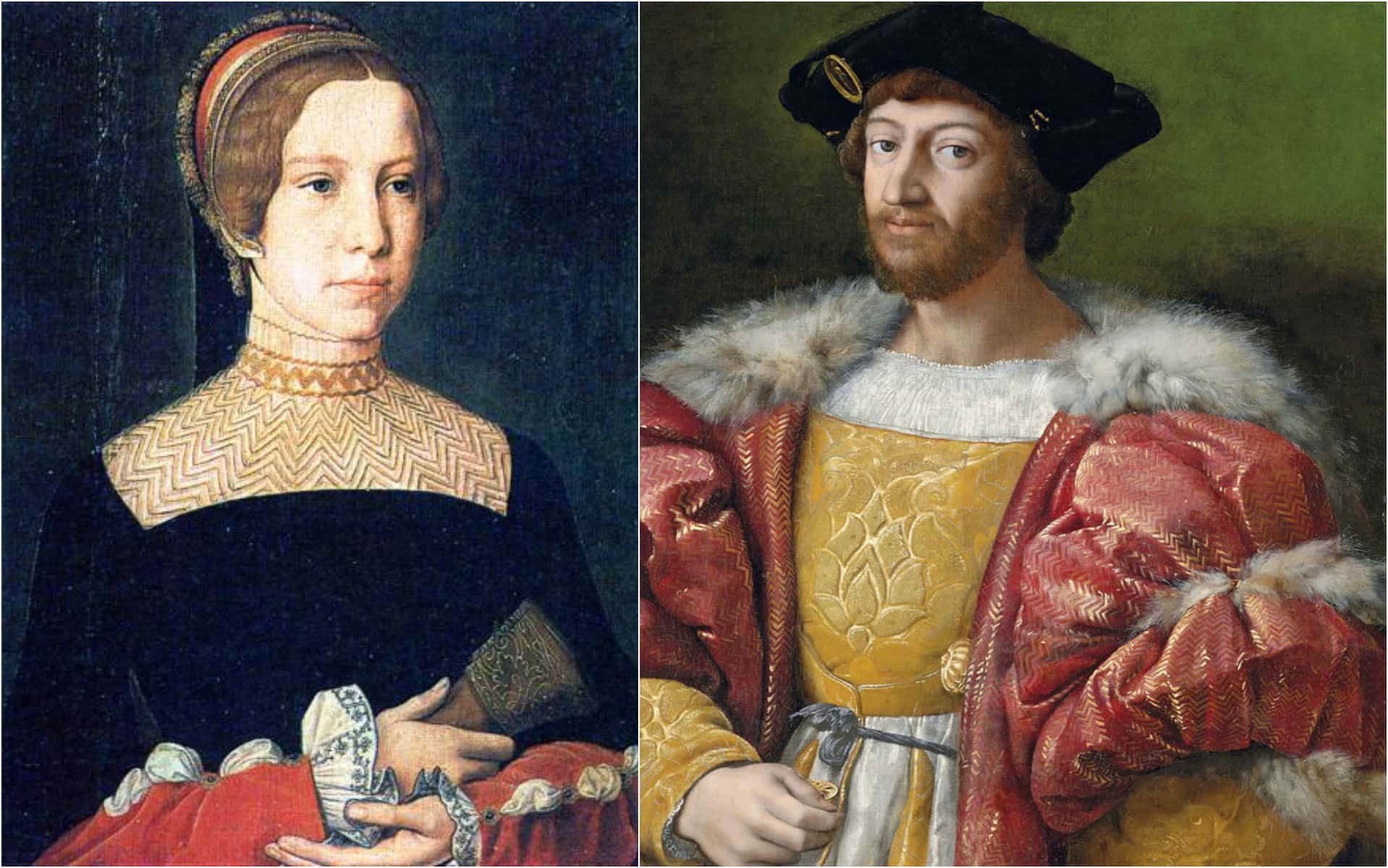
127. The Republic of Male Opinions No One Asked for
Contemporaries loved to highlight that Catherine was no great beauty. Even in her youth, a Venetian envoy described Catherine as “small of stature, and thin, and without delicate features, but having the protruding eyes peculiar to the Medici family". Another observer drew attention to Catherine’s face as “heavy-looking” and her body as underdeveloped.
Hey guys, she was a kid. Can we chill?
128. Paternal & Papal Invasions of Privacy
On October 2, 1533, Pope Clement VII married Catherine off to the french Dauphin, Henri. The couple were lucky to be the same age—just 14 years old—but old men still wormed their way into the honeymoon. Henri’s father, King Francis I, apparently stayed in the bedroom until the marriage was fully consummated, and the Pope visited the couple in bed the next morning to bless the previous night’s “proceedings". Yick.
129. Thanks, Diane
Catherine’s husband was utterly enthralled by his mistress, Diane de Poitiers. In fact, it was Poitiers who had to remind Henri of his royal baby-making “duties,” and bid him to spend more (re)productive time with his wife. You know you're doing something wrong when your mistress starts telling you to sleep with your wife.
130. Room With a View
It’s said that Catherine bored peep holes into the roof of the beautiful Diane de Poitiers’s bedchamber so that she could see her husband “in action” with his mistress. What she saw made her blood run cold. She apparently noted the contrast between the disinterested performance she got from Henri versus the “spectacle” he gave Diane…
131. Our Lady of Vindication
Catherine was cordial to her husband’s mistress Diane de Poitiers…during his lifetime. As Henri lay dying from a jousting accident, the dark truth came out. Catherine denied Diane any access to Henri’s deathbed, even ignoring her husband’s final pleas for his lover. After his passing, she banished Poitiers and her friends from Paris.
Even years later, Catherine made her real opinion heard on Poitiers in a letter to one of her children, writing, “Never has a woman who loved her husband liked his wh*re".

132. The Bodice-Ripper Brigade
According to rumors, Catherine had a “stable” of 80 beautiful ladies whom she would deploy to the beds of various courtiers for sensual espionage and information networking. She called them the "flying squadron".
133. Putting the “Snap” in Snapchat
The Countess of Castiglione’s fashion shoots also doubled as warning shots to her enemies. When her estranged husband tried to claim custody of their son, she sent him a photo of herself in loose hair…and a knife in her hand. Naturally, the photo was titled “La Vengeance".
 Shutterstock
Shutterstock
134. What a Queen
Mata Hari’s execution took place on October 15, 1917. According to the testimony of journalist Henry Wales, Hari refused to be blindfolded as she faced the firing squad who were about to take her life. She did not flinch as the troopers opened fire, and even after she’d been struck, her face did not change expression. She also blew a kiss to her executioners in her final moments.
135. Be Ruthless
When Queen Olympias had captured her wayward stepson Arrhidaeus and his ambitious wife, she was not merciful in her victory. She executed Arrhidaeus in a straightforward manner in order to be rid of him—but Adea Eurydice suffered a much darker fate. Olympias famously sent her a cup of poison, a noose, and a sword, telling her to choose how she would die.
According to the histories, Adea Eurydice chose to hang herself, though she cursed Olympias to the very end of her life.
Sources: 1, 2, 3, 4, 5, 6, 7, 8, 9, 10, 11, 12, 13, 14, 15, 16, 17, 18, 19, 20, 21, 22, 23, 24, 25, 26, 27, 28, 29, 30, 31, 32, 33, 34, 35, 36, 37, 38, 39, 40, 41, 42, 43, 44, 45, 46, 47, 48, 49, 50, 51, 52, 53, 54, 55, 56, 57, 58, 59, 60, 61, 62, 63, 64, 65, 66, 67, 68, 69, 70, 72, 73 , 74 , 75, 76 , 77 , 78 , 79, 80, 81, 82, 83, 84, 85, 86, 87, 88, 89, 90, 91, 92, 93, 94, 95, 96, 97, 98, 99, 100, 101, 102, 103, 104, 105, 106, 107, 108, 109, 110, 111, 112, 113, 114, 115, 116, 117, 118, 119, 120, 121, 123, 124, 125, 126, 127, 128, 129


